 (Click to see full-screen). You can build them too, by using these downloadable PDF instructions on how to build them yourself from a 1/4" x 2' x 4' sheet of plywood.
(Click to see full-screen). You can build them too, by using these downloadable PDF instructions on how to build them yourself from a 1/4" x 2' x 4' sheet of plywood.Download Literature / Скачать Литературу |
Click → HERE ← for a list of our 36 *free* 5.5" x 8.5" PDFs in booklet-layout, with direct links to each booklet on this page. OR to find them on this page, search for "5.5" (without the quotes) to see the title, author's name, number of pages, and description. We've designed and built a "DIY" booklet rack for our free 5.5" x 8.5" booklets. Here's what the finished booklet rack looks like:  (Click to see full-screen). You can build them too, by using these downloadable PDF instructions on how to build them yourself from a 1/4" x 2' x 4' sheet of plywood.
(Click to see full-screen). You can build them too, by using these downloadable PDF instructions on how to build them yourself from a 1/4" x 2' x 4' sheet of plywood.
Each booklet rack will cost about $20 to $25 for materials. The only supplies and tools you need are the plywood, 20" of quarter-round, a saw, a drill, a hammer and 3/4" wire brads, two C-clamps, wood glue, some sandpaper, paint and a brush (or spray paint). A donation jar is optional. It helps to have a workbench but a card table will do. If you have any questions about it, write us.
NOTE for downloading, especially for smartphone users: If our PDF files don't display correctly on your smartphone, install a PDF reader app on your phone. It first downloads the PDF file to your phone, then opens it. We also have over 50 *free* epub eBooks! Just press Ctrl-F and search for ".epub" to see each of them, but first, see note 1 to install a free eBook reader app.
(There are over 80 "hashtags" below, such as "#evang-theol" that you may notice next to its given resource, so you can easily find again or share with others any resource by saving the link, for example https://agape-biblia.org/literatura/#evang-theol takes you directly to the book The Evangelical Theology of the Orthodox Church by Dr. Bradley Nassif.) This collection of literature began in the 1990s as simply some Russian and English PDFs that this webmaster had produced when he was an Evangelical missionary in Russia. After deciding in 2007 to become Orthodox, he began adding many texts in English on the Church Fathers, etc., to the point of what you will find below. Most of it is free literature in PDF, EPUB or HTML formats, but some items are available for purchase from Amazon or other sources. What you have here is a fairly complete history and description of Original Christianity and its development to this day, enough reading material to keep you busy and inspired for the rest of your life!
Get the article "Edwards, Haystack, Mott, SCM and IVCF" (PDF, 6 pages) that outlines the rise and decline of the modern missionary movement begun by this webmaster's ancestor Jonathan Edwards, which led to the "Haystack Prayer Meeting," the involvement of John R. Mott, the Student Christian Movement, and eventually the emergence of InterVarsity Christian Fellowship (IVCF), the Navigators, Campus Crusade and many other denominational and interdenominational missionary organizations. This webmaster was involved with the Navigators, then later met his wife while we both were serving as officers in the local IVCF chapter at U. of Colorado. Spiritual fervor in the West was combined with Western political and economic dynamism in a drive to spread the Protestant version of Christianity, which evolved into the current "church planting" emphasis of missions.
This webmaster, having majored in Central and East European Studies for his B.A. degree and living many years in that part of the world, understood some of the historical and doctrinal differences between Eastern and Western Christianity, deeply intertwined with geopolitical power struggles between empires that had the ideological support of their respective religions. If only we would restore the unity of the faith that existed in the first one thousand years of the Christian era, we could overcome many if not most of these differences. Later, as a seminary student in the West, I learned mainly Western-oriented theology (only 4-5 pages dealt with the Eastern Church in my Church History and Theology courses), because as recently as fifty years ago, when I was a young adult, very little literature about Eastern Christianity existed in the English language, mostly a few scholarly manuscripts such as the Liturgies of St. James and St. Mark listed HERE. But over the last half-century, especially with the welcoming of the "Evangelical Orthodox Church" into canonical Eastern Orthodoxy, there has been a flood of new books, booklets and magazines about Eastern Christianity. For more literature on traditional Christianity, go to www.Discover-Original-Christianity.info and click on the menu button there. (#orthodox-church-ware) Get the article "The Missionary Roots of Modern Ecumenism" (PDF, 15 pages) by Fr. Peter Alban Heers. This article points out the rather weak ecclesiology of the modern missionary movement, describing how sectarian denominationalism eventually trumps interdenominational missions, leaving a checkered landscape of competing indigenous groups on former mission fields. The alternative is an ecumenist "let's all just get along with each other" approach that degenerates into relativism – that all Christian denominations, confessions and even all religions (which are often mutually contradictory) are equally valid: an obvious oxymoron. An underlying, unspoken problem of the emphasis nowadays in Evangelical missions on church planting is: "What kind of churches should we be planting? Lutho-Metho-Presbo-Bapto-Charismo churches?" This perplexing question finally became clear to this webmaster toward the end of his forty years' involvement in Evangelical missions. The author's (and this webmaster's) solution is to return to pre-denominational Original Christianity. (#evang-theol) Get the book Missionaries, Monks and Martyrs - Making Disciples of All Nations (PDF, 110 pages), by Fr. Luke Veronis. Fr. Luke is a missionary educator, having served 17 years in missions, mainly in Albania. He graduated from Holy Cross Greek Orthodox School of Theology in 1992 with a Masters of Divinity (highest distinction), and from Fuller Theological Seminary's School of World Mission in 1993 with a Masters of Theology in Missiology. Fr. Luke is presently the pastor of Saints Constantine and Helen Church in Webster, Massachusetts, while teaching mission classes at Holy Cross Greek Orthodox School of Theology, St. Vladimir's Seminary and Hellenic College. (#orthodoxy-future) Orthodoxy and the Religion of the Future examines a broad spectrum of issues facing modern Christians – each from the perspective of the early Church Fathers. False teachings that have been condemned as heresies by the ancient, unified Church continue to crop up in slightly different forms, such as the Arian and Iconoclast heresies being incorporated into Islam, Arianism showing its ugly head in humanism, Iconoclasm being adopted by many Protestants, and Montanism led by Tertullian that taught any "Spirit-led" individual could make pronouncements and prophecies that were just as authoritative as Scripture, as we see in the Pentecostal-Charismatic movement. As the “New Age” – a revival of the Gnostic heresy – is becoming a household concept and is moving into wider acceptance by mainstream society, the “new religious consciousness” can be seen progressing precisely along the lines described by the late Fr. Seraphim. Included in this edition is an epilogue that chronicles the signs of the religion of the future that have made their appearance since this book was first published. (#becoming-orthodox) (#homecoming) (#good-news) 1. Read 2. Get The Good News of Yeshua, the Messiah as a 224-page Amazon paperback (it has too many pages to make it into a booklet), or as a Kindle eBook. It is a harmony of the four Gospels in chronological order with tables for where to find any Gospel text in this harmony, as well as tables for where to find all of the miracles and parables of Christ. Or...
3. If you prefer to install The Good News of Yeshua as a free eBook on your smartphone or computer with "live" links to the Scripture references and other online resources in it, in stand-alone mode for a historical narrative of his life, death, and resurrection. Or download the eBook for free in epub eBook format (but first, see note 1 about how to install a free eBook reader app, or load an *.epub book into Kindle). Or...
4. Download the free Android app into your smartphone Good-News-of-Yeshua.apk (but first, see note 3). This version's screen has the same smaller frame as the online version where Scripture references will appear, below the main text in a larger upper frame. (#1st-cent) 2. Get A First-Century View as a 105-page Amazon paperback, or search Amazon by book title. You can also print it yourself as a 5.5" x 8.5" booklet (PDF, 92 pages = 23 sheets of letter paper) + cover, see note 2 below. Or...
3. If you prefer to install A First-Century View as an eBook on your smartphone or computer with "live" links to the Scripture references and other online resources in it, get it in Amazon Kindle eBook format. Or you can download the eBook for free in epub eBook format (but first, see note 1 to install a free eBook reader app). Or... 4. Download the free Android app into your smartphone A-First-Century-View-of-Yeshua.apk (but first, see note 3) This version has the same second frame as the online version, below the main text where Scripture references will appear. Or...
5. Read this webmaster's original 2021 M.Th.S. thesis, A First-Century View of Yeshua, the Messiah in PDF format and the appendix added later about this webmaster's view on the inspiration of Scripture that wasn't in his original thesis. See also the author's D.Min. thesis, now in eBook form and in print: The Ministry Driven Church (below) that defines what diakonia-ministry really is. (#1st-Christians) (#complete-gospel) (#gospel-parallels) (#jewish-gospels) Get A Radical Jew: Paul and the Politics of Identity by Rabbi Daniel Boyarin as an Amazon paperback or Kindle eBook. From its Amazon page: "Paul's famous formulation, 'There is neither Jew nor Greek, no male and female in Christ,' demonstrates the genius of Christianity: its concern for all people. The genius of Judaism is its validation of genealogy and cultural, ethnic difference." This theme is stressed in my M.Th.S. thesis. A summary of Boyarin's book is the 14-page PDF "An Annotated Outline of Daniel Boyarin, A Radical Jew: Paul and the Politics of Identity." Another fascinating book by Boyarin is Border Lines: The Partition of Judaeo-Christianity which examines the gradual development of separate religious identities of people who were once kindred spirits. From its Amazon page: "The historical separation between Judaism and Christianity is often figured as a clearly defined break of a single entity into two separate religions. Following this model, there would have been one religion known as Judaism before the birth of Christ, which then took on a hybrid identity. Even before its subsequent division, certain beliefs and practices of this composite would have been identifiable as Christian or Jewish." (#writings) The writings below by several of the Church Fathers are mostly in historical sequence. See the Timeline of Church History for a complete list of Church Fathers and events in the history of Christianity. The first three PDFs are from first-century direct disciples of and ordained as bishops by the Apostles.
(#polycarp) Get the Letter to the Corinthians, by Saint Clement of Rome (PDF, 65 pages), extracted from Volume 1 of the Pre-Nicene Fathers. Many scholars consider him to be the Clement mentioned in Phil. 4:3. He is considered to be the first of the Apostolic Fathers of the Church. He was the first pope of Rome from 88 to 97, said to be the third successor of the Apostle Peter. Saint Irenaeus of Lyons wrote that he was a contemporary of the Apostles and learned from their teaching. The Letter to the Church of Corinth (1 Clement) is ascribed to him: it was written to reconcile a conflict in the Corinthian church, thus it indicates that Clement believed he had the authority to settle disputes outside of his own bishopric, but he is far from the only bishop who wrote on matters beyond his own bishopric. He is sometimes given credit for transmitting The Ordinances of the Holy Apostles (The Apostolic Constitutions) to the Church but scholars now believe that The Apostolic Constitutions are of a much later date (see below). (#didache) (#constitutions) Get The Shepherd of Hermas (PDF, 77 pages). It is uncertain if this is "a fictional or actual account of visions by Hermas, a freed slave turned shady businessman, worried by his sharp-tongued wife and troubled kids. The book provides much food for thought and much to disagree with." (audio version) This book from the mid-second century was considered Scripture by many early Christians but St. Athanasius (see below) did not accept it into the NT canon.
(#Mariology) The veneration of the Virgin Mary seems to have emerged in the second century, and by the fifth century it became a prominent theological issue. We read in the Gospels about the birth of Jesus by the Virgin Mary, Joseph being her betrothed. We find nothing in the Gospels about Mary giving birth to any more children. And the last we read about Joseph in the Gospels is when he and Mary brought the 12-year-old boy Jesus to the Temple (Luke 2:41-52), we find nothing more about him by the time Jesus began His earthly ministry, which indicates that the elderly Joseph had likely died. The Gospels also tell us that the "brothers" of Jesus didn't accept him during his earthly ministry, but in Acts ch. 2 we read that his "brothers" including James were with the Virgin Mary in the Upper Room on the Day of Pentecost. The Apostle John, to whom our Lord entrusted His mother, wrote in Revelation ch. 12 a moving tribute to Mary as the Birthgiver of God Incarnate, the Body of Christ, the suffering Church. If Mary bore other children, why didn't our Lord entrust her to them instead of to His disciple John? Also, according to Jewish Law and Christ's teaching, a married woman is bound to her spouse as long as that spouse lives, and God the Holy Spirit has not died. Ignatius, Irenaeus (see above), and Athanasius (see below) are among virtually all of the Early Church Fathers who affirmed the ever-virginity of Mary, as did the early Reformers Luther, Calvin, Wesley and others. Only in the Radical (Anabaptist) Reformation that discarded many traditional doctrines and practices did the ever-virginity of Mary begin to be questioned. (#protevangelium) Get "The Protevangelium of James" (PDF, 12 pages in 5.5" x 8.5" format [3 sheets of paper] – see note 2). This is the "Pre-Gospel" of the birth and childhood of the Virgin Mary, attributed to James, the step-brother of Jesus, but was most likely written anonymously in the early- or mid-second century. It draws on the Gospels of Matthew and Luke about the birth of Jesus, so the author would not have been James because he was martyred before the Gospels of Matthew and Luke were written. But at least parts of it – her parents being Joachim and Anna – may have been passed down by oral tradition: we don't know. It is the earliest document that tells us of Mary's parents who had been barren and Mary's miraculous birth and holy childhood. This story tells us that Mary's parents dedicated her to the Temple when she was a little girl, that she lived in the Holy of Holies and was fed by angels. [Fr. Thomas Hopko said that we should understand as allegorical the idea that she lived in the Holy of Holies because only the high priest was allowed there. Also, if this part of the Protevangelium were literally true, all of the priests and the whole Jewish nation would have known of her fame.] But in her teenage years, because her monthly cycle would render her unclean, she left the Temple and was betrothed to the elderly widower Joseph who had children by his first wife, and after Mary conceived miraculously by the Holy Spirit and bore Jesus, she remained a virgin. The term "Theotokos" (Birthgiver of God) for Mary was affirmed at the Ecumenical Council of Ephesus of 431, and the term "Aeiparthenos" (Ever Virgin) at the (non-ecumenical) Lateran Council of 649. But Gelasius I, Pope of Rome from A.D. 492 to 496, a Berber from North Africa who strongly asserted Rome's supremacy over the Church as opposed to Constantinople's, rejected "The Protoevangelium of James" as apocryphal in his "Gelasian Decretal," a list of canonical and non-canonical books. Pope Gregory the Great (540-604) also rejected it as apocryphal. As a young seminarian, Philip Saliba who later became Metropolitan of the Antiochian Orthodox Church in America, called "The Protevangelium of James" a bibliographical ghost – an unreliable source that served as the main basis for later ideas about Mary. These issues are clouded in historical uncertainty: it's OK for Orthodox Christians to simply say "We don't know." The Orthodox Church has a category of doctrine called "theologoumena" (questionable, non-dogmatic) for teachings such as the bodily assumption of Mary, but the Church celebrates her "Dormition" (falling asleep) in August every year: see "The Feast of the Entrance and the Protoevangelium of James" (online) at the Orthodox Christian Network.
Eastern Orthodoxy honors Mary as "Theotokos," the Mother of God the Word, in order to protect the Incarnation of Christ our God: "Without the incarnation there is no salvation" (St. Athanasius): if Christ our God did not take on our human nature, we cannot be redeemed and partake of the divine nature. But Orthodoxy does not hold as dogmas the Roman Catholic doctrines of the Assumption of Mary, or the "brothers" of Jesus being cousins, or her mother's "Immaculate Conception" of Mary (unnecessary because Orthodoxy does not hold to the Augustinian doctrine of Adam's sin and guilt being inherited by all humankind – see "Augustine" below). Rather, Orthodoxy teaches that she had a nature weakened by sin and thus was subject to death (she called her Son "God my Savior"); however, she was completely holy and by cooperating with the grace of God she did not commit any personal sin, attaining "theosis" (deification, partaking of the divine nature – 2 Peter 1:4) in this life, the level of holiness to which all true Christians are called. To emphasize the Incarnation, Orthodoxy always depicts her in two-dimensional icons together with Christ to indicate her role as the Mother of God the Word, rather than as a standalone figure in three-dimensional, "graven" statues as in the Roman Catholic Church. Orthodoxy holds to the belief that the "brothers" of Jesus were sons of Joseph by an earlier marriage, as descibed in "The Protoevangelium of James," and that Mary died a natural death but then her body was taken up to heaven.
(#Justin) Get Justin Martyr's "Dialog with Trypho the Jew" (PDF, 346 pages), "a second-century Christian apologetic text, usually agreed to be dated in between AD 155-170. It is seen as documenting the attempts by theologian Justin Martyr to show that Christianity is the new law for all men, and to prove from Scripture that Jesus is the Jewish Messiah" (Wikipedia). This important document shows the transition from the Messianic faith of Jesus' first-century Jewish disciples to become a Greek-culture religion that saw itself as a fulfillment of and distinctly separate from Judaism.
Get "Irenaeus: Against Heresies" (PDF, 58 pages) by Saint Irenaeus of Lyons, Gaul (died c. 202). Also get "Against Heresies" (PDF, 26 pages), the Cambridge University overview of this great Apostolic Father's work. He goes into great detail on the many false gnostic teachings about God and Christ. "Against the Gnostics, who said that they possessed a secret oral tradition from Jesus himself, Irenaeus maintained that the bishops in different cities are known as far back as the Apostles and that the bishops provided the only safe guide to the interpretation of Scripture. His polemical work is credited for laying out the 'orthodoxies of the Christian church, its faith, its preaching and the books that it held as sacred authority.'" (Wikipedia) (#rich-man-saved) Get the Didascalia Apostolorum (PDF, 140 pages) - a late-second-century or early-third-century work that sums up the "Teaching of the Apostles." Written originally in Greek, there exist references to it in several early sources but the Greek original has been lost. This English translation is from the Syriac version that was discovered in the early 19th century.
Get The Apostolic Tradition of Hippolytus (PDF, 119 pages) translated by Burton Scott Easton for a full introduction explaining the historical background as well as The Apostolic Tradition, which is just the Apostolic Tradition itself with very little commenary. St. Hippolytus (d. approx. 235) was a Roman bishop who opposed the innovations of popes Zephyrinus and his successor Callistus: for this he was martyred but later canonized as a saint. This work describes the rules for ordination of bishops, elders, deacons and readers, as well as preparation of catechumens for baptism. It also indicates that in the early third century there was more than one bishop of Rome and none of them claimed to be the head of the entire Christian Church. (#incarnation) We also offer a short, 8-lesson online course "On the Incarnation of the Word" (click on the "slider" menu button in the upper-left corner there). Get this PDF handout to print and distribute, or in Microsoft Word format (print 2 pages on 1 letter-size sheet) to modify the dates and teach it yourself. As this course indicates, Athanasius attended the First Ecumenical Council of Nicea in 325 as a deacon and led the defense against the heresy of Arianism which taught that Jesus was a godly man, perhaps a prophet, but merely a created being. Later he formulated the list of 27 books by the Apostles that was recognized as the official New Testament canon by the Council of Carthage in 397, 24 years after his death in 373. He was exiled from Egypt three times by various emperors, but was finally allowed to return to Alexandria and lead his flock there. (#St-Anthony) (#Pachomius) Get "The Rule of St. Pachomius" (PDF, 6 pages). St. Pachomius, also of Egypt, began his monastic life as a hermit around age 20, but became dissatisfied with it and founded a monastery for a fellowship ("koinonia" in Greek) of monks – hence the term "coenobitic" monasticism – with assigned tasks for each monk, a daily schedule of hours of worship, and life together under an abbot. This ancient prayer rule forms the first four pages of our "Morning and Evening Prayers of the Orthodox Church" (see below), so it has stood the test of time for about 1,700 years. (#st-basil) (#on-holy-spirit) (#to-the-rich) Get St Basil's sermon "To the Rich" in 5.5" x 8.5" format (PDF, 16 pages [4 sheets] – see note 2) or as a 12-page 8.5" x 11" PDF – "To the Rich" – "probably delivered in the year 368, when most of Asia Minor was struck by a severe drought which caused great hardship, intensified by the greed of some who held back grain to inflate prices. At this time, St. Basil was a priest in the diocese of Caesarea, overseeing a very active ministry to the poor and ill" (from the introduction). (#Gregory-of-Nyssa) Get the Dogmatic Treatises (PDF, 813 pages) by St. Gregory Of Nyssa (335-384), bishop of Nyssa, a prominent teacher of the fourth century. He was the younger brother of Basil the Great and friend of Gregory the Theologian. He argues against Origen's teaching of God being limited, thus knowable, and against the universal salvation of all mankind; instead he taught that God is infinite and unknowable in His essence but knowable in His energies, and that all human nature (in the abstract) will be saved and transformed into the divine nature. (#sider) (#love-of-poverty) Get the sermon On the Love of the Poor and Those Afflicted with Leprosy (PDF, 14 pages) by St Gregory the Theologian. In this sermon, he portrays the poor and the lepers as Christ Himself, because what we do unto the least of these we do unto Christ. If we don't actively love and care for the poor, the disabled, and the elderly, all our theology is worthless!
Get the sermons Five Theological Orations (PDF, 89 pages) by St. Gregory the Theologian. They are considered some of the deepest and yet most concise summaries of basic Christian doctrine ever given. When Gregory was elected as Patriarch of Constantinople in 379, he was the only non-Arian bishop there and his church named "Anastasis" ("Resurrection") met in a small house. But by the end of his patriarchate, there were no Arian churches left in this capital city! An excellent summary of these Five Orations and his teaching in general is Lesson12 from my Patristics course (PDF, 20 pages in large print) by Fr. Dr. Michel Najim. (#welfare) (#health-healing) Get the On the Trinity (PDF, 326 pages) by St. Hilary of Poitiers. This is extracted from the Post-Nicene Fathers, vol. 9, Hilary of Poitiers, John of Damascus. He was born in Gaul of pagan parents, trained in philosophy and rhetoric, but he realized the falsehood of polytheism and became a Christian. He became Bishop of Poitiers in 350. Like his contemporary St. Athanasius, Hilary's life as bishop was a long struggle against Arianism. When the emperor Constantius II attempted to impose Arianism on the western Church, Saint Hilary led a vigorous opposition to his efforts. In 355, the Council of Milan demanded he condemn Athanasius, so Hilary penned a letter to Constantius condemning the Arians and requesting that the Orthodox bishops including Athanasius be restored. Because of his outspoken criticism, he was exiled to Phrygia, Asia Minor, where he wrote this his greatest work, On the Trinity. There he became such a defender and champion of Orthodoxy that the emperor decided it would be less trouble to allow him to return to his diocese. (#Chrysostom) Get On the Priesthood (PDF, 86 pages) separately, or get the whole On the Priesthood, Ascetic Treatises, Select Homilies and Letters, Homilies on the Statutes (PDF, 793 pages) Vol. IX of the Nicene and Post-Nicene Fathers in the Early Church Fathers. This is the first of seven volumes on St. John Chrysostom (349-407) in the Early Church Fathers series. The other six volumes on Chrysostom are his commentaries on the Scriptures. Chrysostom is the greatest Bible expositor of those who used the historico-grammatical method of Bible exegesis (see also Early Christian Doctrines by Kelly below). This method is anchored in the historical context and the literal meaning of the words of Scripture, and is the method of exegesis most frequently used by Evangelicals. Others before him, such as the great Bible scholar Origen, used the allegorical method that sometimes led to highly imaginative interpretations of Bible passages.
(#almsgiving) Get "St. John Chrysostom on Social Parasites" (PDF, 15 pages in 8.5" x 11" format) by Paul M. Blowers. The "social parasite" was a comical character in classical Greek and Roman literature. Chrysostom uses the term "parasites" several times in his sermons to describe this character as a skilled actor who went from the table of one rich Greek to the next, acting like a court jester and even allowing himself to be the butt of jokes in order to feast on the free food. Chrysostom thus instructs his listeners about those who sponge off the Church, and warns Christians to be on guard against such people. (#chrysostom-charity) (#kelly) (#year-of-Lord) Get "The Year of our Lord" (PDF, 4 pages in 5.5" x 8.5" format – see note 2) by Protopresbyter Georges Florovsky, on the Incarnation as the turning point of all human history. At eighteen, he started to study philosophy and history. After his first graduation, he taught for three years at high schools in Odessa and then made his full graduation including the licensia docendi at all universities in the Russian empire. In 1919, he began to teach at the University of Odessa, but his family was forced to leave Russia in 1920. The young Florovsky realized at that time that there would be no return for him, because Marxism did not accept the history and philosophy he taught. Florovsky thus became part of the great emigration of the Russian intelligentsia (Orthodoxwiki).
(#Augustime) St. Ambrose of Milan (339-397), the spiritual father of St. Augustine, wrote many books and dozens of letters that are still preserved: De Mysteriis (On the Mysteries [Sacraments]) and De Spiritu Sancto (On the Holy Spirit) [both online] are perhaps his greatest works. Ambrose was born in Gaul, what is now France and the western part of Germany, son of the Roman Prefect there. He studied law and politics, and by the year 370, he was made the Imperial Governor of Northern Italy, based in Milan. When the episcopal office in Milan became vacant in 374, the people demanded Ambrose, who was then only a catechumen, to be their new bishop. He was baptized, ordained as a deacon, then a priest, then a bishop, all within one week! Deeply aware of his deficit in theological understanding, he embarked on a life of prayer and study of the Scriptures. This together with his oratorical skills made him a great preacher and writer. Many of Ambrose's works are in Volume X (PDF, 1,067 pages) of Series II of the Nicene and Post-Nicene Fathers in the Early Church Fathers. (#Augustine2) Around A.D. 385, a certain young and ambitious teacher of public speaking named Augustine came to Milan to learn from Ambrose his oratorical technique, became a Christian and was baptized by Ambrose in A.D. 386. Ambrose, Jerome, Augustine, and Gregory the Great were later recognized as the four Western "Doctors of the Church." Saints Ambrose and Augustine both were proponents of priestly celibacy, about which Emperor Justinian later called the Quinisext Council (Trullo) in 692. There the bishops in Canon XIII reaffirmed the Apostolic Tradition of married clergy and recognized that the Church in Rome was not observing Apostolic Tradition.
Get The eldest son of St. Monica, he was trained as an orator, and after his conversion to Christianity, he wrote The Confessions and other commendable works, but also made many eloquent and convincing arguments for his ideas that included predestination and the doctrine that man's will is totally in bondage to sin and cannot do good, "The Bondage of the Will" (HTML), later picked up by Luther, that bolstered his doctrines of man inheriting Adam's sin and guilt, and God predestining some to be saved and others to be damned. But this was based on a faulty Latin translation of Romans 5:12 –
Many, many Scriptures teach that people deserve or earn punishment only for their own sin: this corresponds to the Greek text of Rom. 5:12 – "Therefore, as sin entered into the world through one man, and death through sin; and so death passed to all men, in that all sinned." Jerome, in his Latin Vulgate translation, rendered the end of this verse as "...death passed to all men, for in him [in Adam] all sinned." Jerome had to add the word "for" in order to make sense of this verse as he understood it. The word he translated as "him", however, cannot refer to Adam, because it is neuter ("that") in Greek. So Augustine, who knew less Greek than did Jerome, made this mistranslation the basis of his early teaching the idea that all sinned in Adam and are guilty of Adam's sin. Orthodox Christian teaching, based on the original Greek text of Rom. 5:12, is that human nature is weakened by the Fall, predisposed to sin and subject to death but not guilty of Adam's sin. The phrase "For if by the trespass of the one the many died" in v. 15 teaches that the result of Adam's sin is not all mankind's guilt but rather our death. By now, most English Bibles including the Chalonner-Rheims Roman Catholic version have corrected Rom. 5:12, but the Douay-Rheims version still retains the "in him" error, thus the Augustinian doctrine of original guilt persists in many parts of western Christianity. The doctrine that all mankind is subject to death (but not guilt) because of the Fall is repeated in 1 Cor. 15:22 – "For as in Adam all die, so also in Christ all will be made alive." The word "all" does not imply universalism, i.e., that all mankind will go to heaven, because in this verse it refers to those "in Christ" and in v. 51 St. Paul writes – "Behold, I tell you a mystery. We will not all sleep [physical death], but we will all be changed" – here "all" is qualified by "we" referring to Christians.
Writing to Jerome, Augustine described the tension he felt with this doctrine of inherited guilt and damnation insofar as it relates to infants who die before being baptized: "But when we come to the punishment of little children, I am bewildered by great perplexities, and I am quite at a loss for an answer. I refer not only to the punishment which results from the condemnation which inevitably falls on them if they depart from the body without the sacrament of Christian grace [baptism], but the suffering which takes place before our eyes in this life and brings us sorrow.... We are forbidden to say that these things happen without God's knowledge, or that He is powerless to resist what causes these things, or that He causes or permits them unjustly" (Henry Bettenson – ed. and trans., The Later Christian Fathers, p. 201). Augustine here anticipated the major objection to his doctrine of predestination: How can God cast into the eternal fires of hell a baby who dies without being baptized? Such a God would either be unjust, or unloving, or not omnipotent, or not omniscient, or a "Yin-Yang" deity that is a mixture of good and evil. This is the philosophical problem of "theodicy." Indeed, it is said that the Augustinian doctrine of predestination is the greatest cause of people becoming atheists: they cannot believe in the existence of such a supposedly unjust, unloving, even cruel deity. How can we resolve this dilemma?
Also, predestination of the "elect" to salvation is generally understood by Roman Catholics and many Protestants that the "elect" can never lose their salvation: "once saved, always saved." Therefore, for these "elect" or "elite" people, nothing they do can bring condemnation, thus in practice they are above the law, infallible and inerrant: you can see how this can lead to the notion of an infallible Pope, or even an elite political party or super-race. They can "continue in sin so that grace may abound" – a direct contradiction of Romans 6:1-2. So this mistaken idea of predestination of the "elect" makes sin not really sinful for them. But by making God's sovereignty and predestination absolute, this doctrine denies human freedom and therefore denies man's moral responsibility, thus man would not be guilty of sin; so in the final analysis, Augustine's doctrine of predestination collapses upon itself.
Some in the Eastern Orthodox Church call him "Blessed Augustine" because his doctrines of inherited guilt and predestination are opposed to the Biblical doctrine of Synergy held by the Eastern Orthodox Church, but many Orthodox theologians consider him a saint. Recall that for at least 500 years, from the time of Constantine the Great through the eighth century and beyond, which includes Augustine's lifetime, the Greco-Roman Empire was ruled from Constantinople and the Church was led by the Patriarch of that city, so Augustine was under pressure to bring his teachings into conformity with Orthodox doctrines and he recanted at the end of his life – see the paragraphs on Saints John Cassian and Vincent of Lerins below. In the earlier parts of Augustine's "On Christian Doctrine" (PDF, 107 pages), he uses the phrases "inherent in the sinful soul" (p. 20) and "inherent sinfulness" (p. 60). But this idea does not appear in the fourth part of his book, written about 20 years later to correct some of his previous teaching. At the Fourth Ecumenical Council (Chalcedon), AD 451, Augustine was named a saint because he had renounced his belief in original guilt inherited from Adam:
A few other key Scriptures about Augustinian theology are Rom. 8:29-30 – "For whom He [God] foreknew, He also predestined to be conformed to the image of His Son, that He might be the firstborn among many brothers. Whom He predestined, those He also called. Whom He called, those He also justified. Whom He justified, those He also glorified." Also 1 Peter 1:1-2 – "Peter, an apostle of Jesus Christ, to the chosen ones who are living as strangers in the Dispersion in Pontus, Galatia, Cappadocia, Asia, and Bithynia, according to the foreknowledge of God the Father, in sanctification of the Spirit, that you may obey Jesus Christ and be sprinkled in His blood: Grace to you and peace be multiplied." God's foreknowledge is the basis for our election and predestination, not that He predetermines our free choice, but that He knows it in advance and works out all things for the good of those who love God (Rom. 8:28).
God loves the whole world (John 3:16), but only God has foreknowledge. According to Matthew 24:13, only "he who endures to the end will be saved" – we finite human beings cannot know whether we will endure to the end or not. "For now we see in a mirror, dimly, but then face to face. Now I know in part, but then I will know fully, even as I was also fully known" (1 Cor. 13:12). So we might say that only God could possibly be an "Augustinian" or a "Calvinist": human beings in their theology may believe in "Calvinism" but in practice can only be "Arminians" because they do not have foreknowledge. It is said that you'll never meet a Calvinist who doesn't believe he is among the elect: they all "know" they are saved and going to heaven. Many convinced Calvinist preachers and evangelists believed they had full assurance of salvation and that they could never lose it... until they committed adultery with the church secretary, or absconded to a Pacific island with millions of dollars of church money, or committed some other grave sins and thus abandoned their faith.
(#Cassian) Get The Institutes: Four Books on the Coenobia and Eight Books on Remedies for Eight Principal Faults (PDF, 338 pages) by St. John Cassian. He was born in Dacia (today's Romania) about 360, spent some years in monasteries of Palestine and Egypt, was ordained to the diaconate by St. John Chrysostom in Constantinople, ordained to the priesthood by Pope Innocent I in Rome and was sent to Marseilles, Gaul, to establish monasteries there. As a monastic, Cassian writes in this book how coenobitic monasticism should be organized in Gaul and how to overcome the passions of gluttony, fornication, covetousness, anger, dejection, acedia (listlessness or torpor), vainglory, and pride.
Get The Conferences (PDF, 720 pages) by St. John Cassian (c. 360-435). He writes to refute the error in Augustine's teaching that after the fall, man was totally depraved, so corrupt that he could do nothing for his own salvation, by his own will he could not even believe (Augustine's "the bondage of the will"), and that God simply predestined some men to salvation and others to damnation. In the thirteenth of his Conferences, with Abbot Chairemon, he eloquently sets forth, at length and with many citations from the Holy Scriptures, the Orthodox teaching of Synergy, the balance between the grace of God on one hand, and man's efforts on the other, necessary for our salvation.
Get On the Incarnation of the Lord, Against Nestorius (PDF, 206 pages) by St. John Cassian, written in 430 at the request of Leo, then Archdeacon of Pope Celestine and who later became pope. In this work, he was the first to show the spiritual kinship between Pelagianism, which taught that man can avoid sin without the help of God, i.e., that it is possible for man to overcome sin by his own efforts; and Nestorianism, which taught that Jesus was a mere man who strove for perfection and was used as an instrument by a separate person, Christ the Son of God, but not that Jesus was God become man. Indeed, when Nestorius first became Patriarch of Constantinople in 428, he made much show of persecuting the heretics, with the exception only of the Pelagians, whom he received into communion and interceded for them to the Emperor and to Pope Celestine. The Council at Ephesus (431) accused Nestorius of heresy and deposed him from being Patriarch. We see here how a western pope sided with the majority in the Council against a heresy held by an eastern patriarch. Only later when the pope rejected this conciliar form of church order and considered himself to be the single, final authority, did the schism between Eastern and Western Churches begin to appear.
Another leading figure and a contemporary of St. John Cassian was St. Vincent of Lerins in Gaul (now France), whose book The Commonitorium by Vincent of Lerins (free EPUB – see note 1) opposed Augustine's new teachings on predestination, prevenient grace, total depravity, and limited atonement. This book is highly regarded in both the East and the West as a defense against these doctrines. St. Vincent condemned Augustine's doctrines of grace and predestination, naming it heresy to teach about "a certain great and special and altogether personal grace of God [which is given to the predestined elect] without any labor, without any effort, without any industry, even though they neither ask, nor seek, nor knock" (Commonitorium, ch. 26). God's grace has appeared to all people (not just some), the Apostle Paul wrote to Titus (2:11 – read St. Paul's entire epistle to Titus, which shows clearly the relation between God's grace, our faith and our good works). St. Vincent is famous for saying that "all possible care must be taken, that we hold that faith which has been believed everywhere, always, by all." Novel ideas thought up by one individual, however eloquent, must be tested against the truths that have been received everywhere, at all times, and by all believers.
Get the Encyclicals of Leo the Great (free EPUB – see note 1). Pope St. Leo the Great was Pope of Rome from 440 to his death in 461. This is the same Leo who requested that St. John Cassian write On the Incarnation. Leo upheld Augustine's early doctrines and strongly asserted his headship as successor of Peter over the entire Christian Church, but this was contested by Constantinople at the Council of Chalcedon. As the western half of the Empire was collapsing, Leo kept the Huns from conquering Rome, thus embodying in himself both secular and spiritual leadership of Rome. "He is perhaps best known for having met Attila the Hun in 452 and persuading him to turn back from his invasion of Italy. ...An uncompromising foe of heresy, Leo found that in the almanac of Aquileia, Pelagians were received into church communion without formal repudiation of their errors; he wrote to rebuke them, making accusations of culpable negligence, and required a solemn abjuration before a synod. Manichaeans fleeing the Vandals had come to Rome in 439 and secretly organized there; Leo learned of it around 443, and proceeded against them by holding a public debate with their representatives, burning their books and warning the Roman Christians against them." (Wikipedia)
(#Benedict) From the inside, American churches have been hollowed out by the departure of young people and by an insipid pseudo–Christianity. Rod Dreher argues that the way forward is actually the way back – all the way to St. Benedict of Nursia. This sixth-century monk, horrified by the moral chaos following Rome’s fall, retreated to the forest and created a new way of life for Christians. He built enduring communities based on principles of order, hospitality, stability, and prayer. His spiritual centers of hope were strongholds of light throughout the Dark Ages, and saved not just Christianity but Western civilization. Today, a new form of barbarism reigns. Many believers are blind to it, their churches are too weak to resist, and politics offers little help in this spiritual crisis.
Another good book that explains The Rule of St. Benedict in laypeople's language and how to apply it in everyday life is The Rule of Benedict: Christian Monastic Wisdom for Daily Living (Amazon) by Rev. Dr. Jane Tomaine. This practical resource for finding peace, meaning and God, from the pen of St. Benedict, a sixth-century monk, can help guide your own spiritual journey. Many people today are realizing that the cultural focus on competition, success, acquisition and constant busyness is ultimately not satisfying. They hunger for a way of life that has more lasting value and deeper meaning. (#new-city) (#arc) (#ladder) Get The Ladder of Divine Ascent (PDF, 129 pages), or free EPUB – see note 1) by St. John Climacus, or "John of the Ladder" (ca. 579-649). (#30-steps) Get the book The Book of Pastoral Rule, and Selected Epistles (PDF, 187 pages) by Pope St. Gregory the Great (c.540-604). He spent from 579 to 585 or 586 as a deacon and legate of Pope Pelagius II to Constatinople but he did not master Greek. Shortly after returning to Rome, in 590 he was elected unwillingly as Pope. He struggled against the Arians, the Lombards, and the Greeks who strove to protect their administrative center of Byzantine government in Ravenna. The Church in both East and West has used this book for centuries as a guide and rule for priests and bishops.
Get The Dialogues of Pope St. Gregory the Great (PDF, 295 pages). St. Gregory the Great served as Pope of Rome from 590 to 604. Because the Roman Senate was defunct, he was both the civil and religious leader of Rome during a time when the influence of the Ecumenical Patriarch in Constantinople was beginning to wane in Italy (see Britannica article). He considered the Protevangelium of James to belong to the apocryphal books, not to be used for the basis of any doctrinal teaching of the Church. (#lust-anger) Get "Lust of Power, Anger Management, and Creating a Spiritually Fertile Environment for our Hierarchs, Priests, Deacons, and Faithful" By Bp. THOMAS (Joseph) and Fr. David Hyatt (8-page PDF in 5.5" x 8.5" format: prints on 2 sheets of letter-size paper). This excellent article quotes from several Church Fathers about how to manage one's emotions with the aid of the Holy Spirit.
Get "The Anthropic Cosmology of St Maximus the Confessor" (PDF, 27 pages). St. Maximus (580-662) opposed the heresy of Monothelitism, that Jesus Christ had only one will. The doctrine that Christ has two wills, one human and one divine, was recognized as canonical by the Sixth Ecumenical Council in 681. But St. Maximus is perhaps best known for his teaching on the logoi (plural of logos) or divine images and purposes in every created being, including man. This means that mankind is essentially good, not totally depraved but only damaged by Adam's sin. Another good article about St. Maximus is "Man in Creation: the Cosmology of St. Maximus the Confessor" (online) that states: "man is charged with the task of raising all of creation to union with the Godhead." Christ has come to restore mankind to the image and likeness of God, uniting again in harmony the physical and spiritual aspects of human nature that were set in opposition to each other by Adam's sin, the false physical vs. spiritual dualism that has puzzled modern philosopy. (#de-fide) Or get the 1898 translation from Latin by Rev. S. D. F. Salmond EXPOSITION OF THE ORTHODOX FAITH (PDF, 247 pages) in archaic "King James" English, excerpted from the Post-Nicene Fathers, vol. 9, Hilary of Poitiers, John of Damascus.
Read the book Three Treatises on the Divine Images (PDF, 188 pages) by St. John of Damascus. This is his defense of the use of icons in the Orthodox Church, in contrast to the iconoclast Christian heresy and Islam's outlawing of images where St. John lived.
Read the article "The Seventh Ecumenical Council" (online), which describes the controversy over icons and the resolution by this Council that approved the use of icons in religious veneration. Because Christ is the image (eikon in Greek) of God – Hebrews 1:3 – two-dimensional images are acceptable to show "relative honor" or "veneration" (proskunesis in Greek) to the persons they represent but "worship" (latria in Greek) is reserved for God alone. The iconoclast faction arose in eastern Christianity as a concession to Islam (descended from Arianism) that denies the Incarnation and rejects all images, human or divine: the Muslims were already encroaching on the capital Constantinople at the time of this Council. The western pope sent a delegation to Empress Irene and the patriarch in support of this council to uphold the veneration of icons – see "The Second Council of Nicaea" (online) – that took place in 787.
Eastern Orthodoxy recognizes this as the last truly ecumenical council because later western councils were not conciliar, i.e. decided by votes of bishops considered as equals, but rather unilaterally by a western pope's final decisions. Papal authority has evolved to the position of the 1870 Vatican Council on Papal Infallibility proclaiming that everything in the doctrine and life of the Roman Church is now declared to be subject to the Pope. The Pope is no longer bound by the historic consensus ecclesiae. It expressly decreed that he can create dogma "of himself." In short, tradition no longer means what it meant for St. Irenaeus or St. Augustine. It has come to mean an absolute monarchy legislating de jure. Hence the notorious declaration of Pius IX in 1870, "La Traditione son Io" ("I am tradition"). (#ccel) Get the complete set of the Early Church Fathers that I have downloaded from the CCEL (Christian Classics Ethereal Library) (PDFs, many thousands of pages). The last volume contains the Seven Ecumenical Councils, which describe the doctrines through the 8th century when Eastern and Western Christianity were still united. On Christmas Day in 800 A.D., Pope Leo III anointed Charlemagne "Emperor of the Romans," thus placing "all" (western) secular authority under papal authority, and implicitly declaring Rome's independence from the Byzantine Emperor. This signaled the beginning of the sharp rise of the papacy and the approaching end of Christian unity, which is formally marked at 1054 A.D. as the "Great Schism." (#palamas) (#transformed) Get "Transformed Into His Likeness" a 4-page PDF in 5.5" x 8.5" format [1 sheet of paper] – see note 2 by this webmaster. This short article provides an introduction to the doctrine of theosis, or being transformed into the likeness of the glorified Christ. You can also read it online at arc-news-blog.blogspot.com and share it! (#motovilov) See also "On Acquisition of the Holy Spirit" (PDF, 27 pages on 8.5" x 11" paper), by St. Seraphim of Sarov as told to Motovilov on the Aim of the Christian Life, which is to acquire the Holy Spirit. St. Seraphim told Motovilov that this aim – sanctification (in Western terms) or deification/theosis (in Eastern terms) – is not only for monastics, but is the goal for all Christians. While speaking with St. Seraphim, Motovilov saw the saint's face glow with the heavenly light of the Transfiguration. (#abstinence) (#world-peace) (#theosis) Go to "Experience the Fullness" (online) by this webmaster. It lists the Biblical basis about how the fullness of the Godhead that is in Christ can also be in us Christians as we strive for "theosis" – holiness and striving for perfection. (#lossky) (#lossky2) Aquinas "was the foremost classical proponent of natural theology and the father of Thomism; of which he argued that reason is found in God. His influence on Western thought is considerable, and much of modern philosophy developed or opposed his ideas, particularly in the areas of ethics, natural law, metaphysics, and political theory. Unlike many currents in the Church of the time, Thomas embraced several ideas put forward by Aristotle – whom he called 'the Philosopher' – and attempted to synthesize Aristotelian philosophy with the principles of Christianity. His best-known works are the Summa Theologiae and the Summa contra Gentiles. His commentaries on Scripture and on Aristotle also form an important part of his body of work. Furthermore, Thomas is distinguished for his eucharistic hymns, which form a part of the Church's liturgy. The Catholic Church honors Thomas Aquinas as a saint and regards him as the model teacher for those studying for the priesthood, and indeed the highest expression of both natural reason and speculative theology" (Wikipedia). Aquinas began writing Part III of this work and was urged to complete it, but after receiving some ecstatic visions, he said – "Reginald, I cannot, because all that I have written seems like straw to me." (#imitation) The text is divided into four books, which provide detailed spiritual instructions: "Helpful Counsels of the Spiritual Life", "Directives for the Interior Life", "On Interior Consolation" and "On the Blessed Sacrament". The approach taken in the Imitation is characterized by its emphasis on the interior life and withdrawal from the world, as opposed to an active imitation of Christ by other friars. The book places a high level of emphasis on the devotion to the Eucharist as key element of spiritual life. (#Theophan) (#Luther) The article "Martin Luther's Confession of Orthodox Christianity" (online) describes the teachings of Martin Luther, a former Roman Catholic monk-priest who in the 16th century rejected papal supremacy, celibacy of all clergy, purgatory, and indulgences, which the Orthodox Church also rejects. It was only in the 11th century, at the time of the Great Schism, that "Pope Gregory VII [himself selected from monastic orders] issued a decree requiring all priests to be celibate and he expected his bishops to enforce it." (online) Thus celibacy has been the rule, with few exceptions, for clergy ever since in the Catholic Church broke away from the Orthodox Church.
In a debate with German Catholic counter-reformation theologian Johann Eck, Luther "...invoked the Orthodox Church as an example of true Christianity for the past thousand years. Indeed, he held up the Orthodox Church as a source of truth to show that the Roman Catholic Church had deviated from the principles of the Early Church, saying, 'The truth lies with the Greeks' (i.e. Orthodox)." In his recent book, Rock and Sand (Amazon), Archpriest Josiah Trenham provides "a competent overview of the history of Protestantism and its major traditions, from its beginnings in the 16th century to the present day. This overview relies heavily upon the Reformers' own words as well as the creeds of various Protestant faiths." Highly recommended!
Read "Luther Had His Chance" (online), a detailed recounting of Luther's emissaries to Patriarch Jeremiah in Constantinople. The Patriarch welcomed the Lutherans as friends and fellow Christians, but was at first reluctant to respond to their doctrines. At last he was persuaded to give a detailed refutation to the erroneous teachings that Luther had carried over from Catholicism. Contacts continued for a couple more exchanges, but eventually were broken off: Lutheran theologians had begun developing their own theology that differed from that of the Seven Ecumenical Councils. It seems the Renaissance approach of the supremacy of human rationality carried over from Thomism led to this break-up. The rationality worldview of the Enlightenment and Protestantism leads to the notion that the intellect and free will enables one to construct his/her own religion, thus becoming a pope unto oneself, a pseudo-absolute authority: only God is God and we are not! See also From Dawn to Decadence: 500 Years of Western Cultural Life, 1500 to the Present (below).
Get "A Letter Concerning Toleration" (PDF, 34 pages) by John Locke. Published in 1689, it "is one of the most under-appreciated texts in the liberal tradition of political philosophy. When read in conjunction with his Second Treatise, it clarifies the relationship Locke envisions between individuals and the state. In the letter, Locke argues that all religious practices should be tolerated unless they are a threat to the proper functioning of the state" (The Federalist Papers). Locke embodied the ideas of the Enlightenment and of the Protestant Reformation's "sola Scriptura" doctrine that in practice meant "sola every-believer's-interpretation-of-Scripture" because every man was supposed to be enlightened by the Holy Spirit and could correctly interpret the Scriptures by himself alone – each man became a pope unto himself, thus giving rise to the tens of thousands of Protestant denominations.
Get The Reasonableness of Christianity (PDF, 256 pages) by John Locke, published in 1695, it is "an enquiry into the foundations of Christian belief. He did so anonymously, to avoid public involvement in the fiercely partisan religious controversies of the day. In The Reasonableness of Christianity John Locke considered what it was to which all Christians must assent in faith; he argued that the answer could be found by anyone for themselves in the divine revelation of Scripture alone (sola Scriptura). He maintained that the requirements of Scripture were few and simple, and therefore offered a basis for tolerant agreement among all Christians, and the promise of peace, stability, and security through toleration." (The Federalist Papers)
Locke's views indicate a general acceptance in the 17th century of a Christian worldview based on human reason and autonomy that reflects the Western Enlightenment view of man, but belittles the importance of doctrines such as the person and nature of Christ and the Trinity, and it assumes that a rational, mental assent to the historical fact of Jesus as the Messiah is sufficient for salvation. This assumption makes "the proper functioning of the state" and individual rationality more important than spiritual truths and commitment of one's whole life to Christ. Locke's view of religious tolerance also opened the door to the philosophical relativism of later modernism and post-modernism in the West. (#Karamazov) (#life-in-Christ) (#Father-Arseny) In the darkness of systematic degradation of body and soul, he shone with the light of Christ's peace and compassion. His sights set on God and his life grounded in the Church, Father Arseny lived by injunction to "bear one another's burdens, and so fulfill the law of Christ" (Galatians 6:2). This narrative, compiled from accounts of Father Arseny's spiritual children and others whom he brought to God, gives stirring glimpses of his life in prison camp and after his release. It also tells the stories of people whose lives, often during times of almost unimaginable crisis, were touched and transfigured through their connection with Father Arseny. Emerging from the context of the particular tragedies of Soviet Russia, this book carries a universal impact certain to be felt by readers in the West today.
Read the book A Harmony of Anglican Doctrine with the Doctrine of the Catholic and Apostolic Church of the East, Being the Longer Russian Catechism scanned book from Google Play – Books (you'll need a Google account). This book traces the dialog between the Anglican Church (in particular, its Scottish branch) and the Russian Orthodox Church back to the time of Peter the Great. Up to the Great Schism of 1054 AD and for some time afterwards, the Church in England shared the same doctrines with Eastern Christianity.
In the Spring of 1949, when I was almost six years old, my parents moved to the Denver area where we began attending a Presbyterian church on Vine Street. As it turned out, this was the very church that in the first decade of that century, missionary and then-Archbishop Tikhon had visited. I still recall my Sunday School teacher, a gray-haired old lady, telling us children about the Seven Ecumenical Councils, and some of the behaviors during worship service such as crossing oneself that later in life I didn't see in other Presbyterian churches. After becoming Orthodox, I learned that this church had continued investigating Orthodoxy, and it has now become a Western-rite Antiochian Orthodox church! Later, while studying Russian to become a military interpreter, one of my teachers was the "Matiushka" – the wife of the local Russian Orthodox priest. One day during a break she asked me in Russian, "Robert Geraldovich, why don't you become Orthodox?" I replied, "No, not yet!" It took me 45 years after that to convert.
View the Prologue of Ohrid (online): This classic work by Bishop Nikolai Velimirovich of Serbia in German, English, and Serbian automatically displays the lives of the saints, Scripture readings, and meditation of the day by the old (Julian) calendar. For the new (Gregorian) calendar readings, go to the Greek Orthodox Online Chapel.
(#Chesterton) He sees it as the answer to natural human needs, the "answer to a riddle" in his own words, and not simply as an arbitrary truth received from somewhere outside the boundaries of human experience. He explains what are the fundamental doctrines of historical, traditional Christianity, often referred to as "small-o" orthodoxy in the West, where few people know that "capital-O" Orthodoxy is still practiced. This work, however, illustrates that in the early 20th century most Christians generally held to "small-o" orthodox doctrines. The chapter headings are enticing: "The Maniac," "The Suicide of Thought," "The Ethics of Elfland" and so on.
It is foolish, generally speaking, for a philosopher to set fire to another philosopher in Smithfield Market because they do not agree in their theory of the universe. That was done very frequently in the last decades of the Middle Ages, and it failed altogether in its object. But there is one thing that is infinitely more absurd and unpractical than burning a man for his philosophy. This is the habit of saying that his philosophy does not matter, and this is done universally in the twentieth century, in the decades of the great revolutionary period.
G. K. Chesterton, an early critic of the philosophy of eugenics, expresses this opinion in this book, Eugenics and Other Evils.
Its advocates regarded eugenics as a social philosophy for the improvement of human hereditary traits through various forms of intervention.Today it is widely regarded as a brutal movement which inflicted massive human rights violations on millions of people.
His criticism of Eugenics expands into a more general criticism of a modern craze for scientific officialism and strict social organization.
Chesterton's writings consistently displayed wit and a sense of humour. He employed paradox, while making serious comments on the world, government, politics, economics, philosophy, theology and many other topics.
Chesterton propounds the thesis that "those who say that Christ stands side by side with similar myths, and his religion side by side with similar religions, are only repeating a very stale formula contradicted by a very striking fact." And with all the brilliance and devastating irony, so characteristic of his best writing, Chesterton gleefully and tempestuously tears to shreds that "very stale formula" and triumphantly proclaims in vivid language the glory and unanswerable logic of that very striking fact. Here is the genius of Chesterton at its delightful best. This is his most well-known work and is the book that led C.S. Lewis to become a Christian. (#Lewis) Get "Willing Slaves of the Welfare State" by C.S. Lewis in 5.5" x 8.5" format (8 pages = 2 sheets of paper) or in 8.5" x 11" format (6 pages = 3 sheets of paper). This short essay, penned in 1958, is prescient in its portrayal of what the world would be like 65 years later, in 2023. It's a "must-read"!
In Mere Christianity, C.S. Lewis, the most important writer of the 20th century, explores the common ground upon which all of those of Christian faith stand together. Bringing together Lewis’ legendary broadcast talks during World War Two from his three previous books The Case for Christianity, Christian Behavior, and Beyond Personality, Mere Christianity provides an unequaled opportunity for believers and nonbelievers alike to hear this powerful apologetic for the Christian faith.
(#antisemitism) (#Exomologetarion) From the preface: "In the year 1775, Nicholas, now having an insatiable desire to be formed in the monastic life, traveled to the small island of Hydra in order to meet the greatest Kollyvas, St Makarios Notaras (1731-1835), the Metropolitan of Corinth. Thus began his association with St Makarios which, over the next several decades, resulted in their collaborating to produce numerous soul-profiting works. While on Hydra, Nicholas also made the acquaintance of another experienced holy elder, Sylvester of Caesarea, whose life and counsels inspired in young Nicholas an even greater longing for a life of stillness and unceasing prayer. Thus, later that year, twenty-six year old Nicholas left Hydra for the Holy Mountain, bearing letters of recommendation from Elder Sylvester." In 1955, Nicodemos was joined to the Company of the Saints. This book contains instructions "on how to conduct a fruitful confession, the canons of St. John the Faster, and a homily on repentance profitable to the soul." (#Silouan) The first part of this book is a remarkable account of St Silouan's life, personality and teaching by his spiritual disciple Archimandrite Sophrony. Archimandrite Sophrony went to Mt Athos in 1925 and there at the Monastery of St Panteleimon became amanuensis to Elder Silouan. Part two comprises the writings of Silouan, originally penciled in laborious, unformed characters on odd scraps of paper. The Lord said, "Every one that is of the truth hears my voice" (John 18:37). And according to Father Sophrony, "these words are applicable to Elder Silouan's notes ... [That] whoever has received from God the mind and wisdom to know him will be aware in the Elder's words of the breath of the Holy Spirit." In 1988 Staretz Silouan was placed in the canon of saints by the Ecumenical Patriarchate of the Orthodox Church. (#Orthodox-Church) (#) Offering an in-depth engagement with the issues surrounding Orthodoxy's relationship to the modern world, including political, cultural and ethical debates, it considers the beliefs, tradition, spirituality, liturgical diversity, and Biblical heritage of the Eastern Churches; their endurance of oppressions and totalitarianisms; and their contemporary need to rediscover their voice and confidence in a changing world. (#question) Get "A Question for Orthodox Christians" (PDF, 8 pages in 5.5" x 8.5" format – see note 2) by His Grace Bp. THOMAS Joseph and Fr. David Hyatt. This booklet succinctly answers the questions: "What are we going to do to get them, and what are we going to do when they come?" (#bondage) In the book Preaching Bondage, we see that in the Christian Greco-Roman Empire, slavery was simply a fact of life, even for St. John Chrysostom. Also, in both Biblical and modern times, people sold themselves or their children into slavery, sometimes sex slavery by being duped into thinking they could improve their lot, or because of debts they couldn't repay ...sadly, debt slavery and sex slavery still exist today. The article "Slavery in the Byzantine Empire" tells us – "A medieval Arab historian estimates that 200,000 women and children were taken as slaves after the Byzantine reconquest of Crete from the Muslims." And further, the article states – "Yet parents, living in the Byzantine empire, were forced to sell their children to pay their debts, which Byzantine laws unsuccessfully tried to prevent. Under the influence of Christianity, views of slavery shifted: by the 10th century slaves were viewed as potential citizens (the slave as a subject), rather than property or chattel." So Byzantine emperors made conquered nations into slaves and the word "slavic" likely was used to describe "slaves that Russian (often Viking) traders dealt in their yearly visits to Constantinople." (#abernathy) Slavery has been a terrible practice throughout human history, it is not merely Europeans suppressing Africans in the Americas: the Egyptians enslaved the Israelites, the Israelites enslaved the Philistines and vice-versa, the Babylonians and Persians and Greeks and Romans enslaved Israelites and other nations they conquered, the Muslims captured children of Christians turning the girls into child brides of their soldiers and the boys into "Janissaries" – fierce Muslim warriors, the British enslaved the Irish (see below), etc. In the seventeenth and eighteenth centuries, more than 300,000 white people were shipped to America as slaves. Urchins were swept up from London's streets to labor in the tobacco fields, where life expectancy was no more than two years. Brothels were raided to provide "breeders" for Virginia. Hopeful migrants were duped into signing as indentured servants, unaware they would become personal property who could be bought, sold, and even gambled away. Transported convicts were paraded for sale like livestock. High school American history classes present indentured servitude as a benignly paternalistic system whereby colonial immigrants spent a few years working off their passage and went on to better things. Not so, this impassioned history argues: the indentured servitude of whites was comparable in most respects to the slavery endured by blacks. Voluntary indentures arriving in colonial America from Britain were sold on the block, subjected to backbreaking work on plantations, poorly fed and clothed, savagely punished for any disobedience, forbidden to marry without their master's permission, and whipped and branded for running away.
At the beginning of the 17th Century, in the reign of James I of England, England faced a problem: what to do with the Irish. They had been practicing genocide against the Irish since the reign of Elizabeth, but they couldn't kill them all. Some had been banished, and some had gone into voluntary exile, but there were still just too many of them. So James I encouraged the sale of the Irish as slaves to the New World colonies, not only in North America but also the colonies in Barbados, the West Indies, and South America. The first recorded sale of Irish slaves was to a settlement along the Amazon in South America in 1612. However, before that there were probably many unofficial arrangements, since the Irish were of no importance and details of how they were dealt with were not deemed necessary.
Of the millions of African slaves brought to the New World, only about 400,000 were sold in the British colonies of North America and in the U.S.: most were sold in the Carribean colonies and in Central and South America. But as the article "Free African Americans Before the Civil War" explains, according to the 1860 U.S. census they had grown to about four million enslaved people of African descent and just under half a million free African Americans before the Emancipation Proclamation of 1863. The cities of Charlottesville VA and Charlotte NC are named after the daughter of an African king, Princess Charlotte, who was married into British, royalty. In the northern U.S., the odium of indentured servitude and slavery led to manumission of many, both whites and blacks long before the Civil War, some of whom then returned to England: there are many black Englishmen whose families have been British citizens for 400 years!
(#booker) Many slaves became Christians: read the story of George Liele (sometimes spelled "Lyle" or "Lile"), a slave who was emancipated just after the American Revolution: "The first African American to be ordained and first Baptist to go as a missionary to any other land (Jamaica)." But the southern colonies that later became U.S. states relied on slave labor for their agricultural economy, mainly cotton, so they invented laws to keep blacks in slavery. Virginia Colony's code of 1705 marked the first codifying of slavery in the colonies, defining slaves as "servants imported... into this country, by sea or land, who were not Christians in their native country." (#ministry) Concerning slavery: the author's earliest ancestor in the New World was Edward Doty, a "white slave" – an indentured servant. While on the Mayflower enroute to the New World, the Pilgrims decided there should not be slavery in the New World so they emancipated all their slaves, Doty became a Pilgrim, and signed the Mayflower Compact. Many of his descendants became famous Americans: slavery can be overcome! So the movement for abolishing slavery existed from the beginning of American colonial history. Thus, the view the nation's history as one continuous tale of slavery and oppression by white European males (see above) is a gross distortion of all the facts. As the article "Historical Revisionism at Jefferson’s Monticello, Madison’s Montpelier Decried as 'Attempt to Colonize Culture'" states – "Much of the historical revisionism stems from 'The 1619 Project' of The New York Times and writer Nikole Hannah-Jones [who studied in Cuba – ed.], said Peter Wood, the president of the National Association of Scholars and author of '1620: A Critical Response to the 1619 Project.' The New York Times’ project contends that the real founding of America coincides not with the Declaration of Independence in 1776, but with the arrival of the first slaves from Africa in 1619. Peter Wood continues – "The consensus among historians on the right and left alike is that 'The 1619 Project' is ahistorical, yet the Times has refused to acknowledge its problems and has pushed the project into school curriculums across the country. There is an element of intellectual vanity in this, when false claims are put forward that are demonstrated to be false, and people refuse to change them,' Wood said. 'That has been part of The New York Times’ approach. The 1619 Project self-ballooned into a 600-page book by the same title. We are now seeing this in the nation’s curriculum.' "He said that’s closely tied to promoting the late leftist author Howard Zinn’s ahistorical narratives of the United States. 'What comes from all of this is a hatred for America; basically, a fairly strong feeling that we are a rotten country from the start, and every student needs to know that and to feel it,' Wood said. 'This dissension then becomes an end unto itself.' "'While the horrors and injustice of slavery should be not be minimized, slavery and the cotton industry that was aligned with it played a minor role in the emergence of the U.S. economy,' said Samuel Gregg, a visiting fellow with Heritage’s Simon Center. 'If you look at the economics of slavery, it actually damaged the emergence of the American economy, and particularly damaged the Southern states, in which it was most prevalent,' he said." This author's ancestor Edward Doty's line includes Roger Sherman, a descendant of this "white slave" and the only man who signed all four U.S. founding documents (the Declaration of Independence, Articles of Confederation, U.S. Constitution, and the Bill of Rights), also Jonathan Edwards, leader of the First Great Awakening and one of the first presidents of Princeton Seminary (which became Princeton University); Civil War Gen. William Tecumseh Sherman who during that war met Gen. Ulysses S. Grant of the same Doty genealogy and they became close friends. Now you know their motivation to lead the fight against slavery: both men were descendants of the same white slave! Approximately 360,000 Union troops died during the Civil War fighting against slavery, nearly as many as the 400,000 black slaves brought from Africa. Doty's descendants also include several other U.S. Presidents, prominent Americans including James Duane Doty – Territorial Governor of Wisconsin (after whom this author and his brother are named), Susan B. Anthony – an abolitionist who later led the movement for women's right to vote, and fifty- or sixty-thousand ordinary citizens like this author. (#rainbow) (#decadence) (#ageism) The following four books and one essay illustrate modern, secularized views on ageing that have arisen from Biblical teachings on respect shown to the elderly... teachings that today's Christians often sadly ignore, resulting in the unconscious cognitive bias of ageism in our modern culture that is often worse than racism. In Ending Ageism, or How Not to Shoot Old People, award-winning writer and cultural critic Margaret Gullette confronts the offenders: the ways people aging past midlife are portrayed in the media or by adult offspring; the esthetics and politics of representation in photography, film, and theater; and the incitement to commit suicide for those with early signs of "dementia."
Ageism Unmasked shifts the lens, enabling us to see that we tolerate, and sometimes actively promote, attitudes and behaviors toward differently aged people that we would reject and condemn if applied to any other group. It peels back the layers to expose how cultural norms and unconscious prejudices have seeped into our lives, silently shaping our treatment of others based on their age and our own misconceptions about aging – and about ourselves. Offering an all-inclusive approach, Dr. Tracey Gendron reveals the biases behind our false understanding of aging, sharing powerful opportunities for personal growth along with strategies to help create an anti-ageist society.
Successful Aging (or "Ageing" in British English) uses research from developmental neuroscience and individual differences in psychology to show that sixty-plus years is a unique developmental stage that, like infancy or adolescence, has its own demands and distinct advantages. Levitin takes a scientific approach to what we all can learn from those who age joyously, as well as how to adapt our culture to take full advantage of older people's wisdom and experience.
No wonder, then, that the average American (especially an older person) reports frequently losing car keys or reading glasses, missing appointments, and feeling worn out by the effort required just to keep up. But somehow some people become quite accomplished at managing information flow. In The Organized Mind, Daniel Levitin uses the latest brain science to demonstrate how those people excel – and how readers can use their methods to regain a sense of mastery over the way they organize their homes, workplaces, and time. With lively, entertaining chapters on everything from the kitchen junk drawer to health care to executive office workflow, Levitin reveals how new research into the cognitive neuroscience of attention and memory can be applied to the challenges of our daily lives. His earlier book This Is Your Brain on Music showed how to better play and appreciate music through an understanding of how the brain works. The Organized Mind shows how to navigate the churning flood of information in the twenty-first century with the same neuroscientific perspective. (#incompleteness) For a much more scientific analysis of this concept of material realm incompleteness, get In the Beginning was Information – A Scientist Explains the Incredible Designs in Nature (free EPUB – see note 1) by Dr. Werner Gitt. It explains how information or logic (the Logos) is necessary in order for the material universe to exist at all. (#creed) Get "What is the Orthodox Church?" (PDF, 1 page) in a larger font to print on one 8.5" x 11" sheet in portrait orientation. It includes The Nicene-Constantinopolitan Creed. Get The Orthodox Faith by Fr. Thomas Hopko, the well-known four volume set on the Orthodox faith, now available free online: Volume I – Doctrine and Scripture; Volume II – Worship; Volume III – Church History; Volume IV – Spirituality. Fr. Hopko was dean of St. Vladimir's Orthodox Seminary, and after his retirement he produced years of podcasts for Ancient Faith Radio.
Get "The Gospel of Jesus Christ – Why Should I be an Orthodox Christian?" (PDF, 2 pages 8.5" x 11") by Fr. Andrew Stephen Damick, formatted in 3 columns, print in landscape mode, fold in thirds, and distribute!
The Orthodox Church doesn't have a pope: the nearest thing to that is the Patriarch of Constantinople who acts more like a chairman of councils of bishops. Doctrine is mutually agreed on in these councils and confirmed by all the people of Orthodox churches in the various jurisdictions. The Scriptures, the consensus of the Church Fathers plus these conciliar decisions taken all together make up Holy Tradition. No single book, Church Father, patriarch, pope or bishop is considered inerrant or infallible, only God is infallible. Thus we have many versions of the Liturgy (see below) with similar but different wording and melodies, but the doctrines are the same: lex orandi est lex credendi – "The way we worship is what we believe." The word "ortho-doxy" means "right worship."
(#liturgies) The main services of the Orthodox Church are Vespers, Matins, and Divine Liturgy. Vespers is celebrated on the evening before a Liturgy, and Matins (or Orthros) is celebrated in the morning just before Liturgy. The Liturgy is celebrated on Sundays and holy days and always includes The Nicene-Constantinopolitan Creed and the Eucharist (Lord's Supper). The basic structure of each service remains the same, but each service has variable parts for holy days, special times of the church year, and eight "tones" or melodies for the sung portions in the weeks between these special times. This provides some variation while maintaining Orthodox "right worship" and true doctrine: it avoids the Protestant alternative of ad-libbing each service, trying to think up something "new" every month, quarter, or every year, which can easily introduce strange and incorrect (unorthodox) teachings and practices.
Here's the latest Sunday Liturgy at the Cathedral for our jurisdiction, the American Carpatho-Russian Orthodox Church: Get the "Liturgy of St. James" (PDF, 31 pages, extracted from the Ante-Nicene Fathers, edited by Philip Schaff), the earliest liturgy used in the early Church. The main body of it was likely written by James, the presiding elder of the Jerusalem Church and step-brother (or half-brother) of Jesus Christ. Footnotes indicate which parts were added later, such as commemorating the Virgin Mary as the Theotokos, which teaching was developed in the second to the fourth century. This liturgy was later shortened to become the basis for the later liturgies of St. John Chrysostom – the most frequently used liturgy today – and St. Basil the Great – used on Church holy days such as Pascha and Christmas.
Get the "Liturgy of St. Mark" (PDF, 24 pages, extracted from the Ante-Nicene Fathers, edited by Philip Schaff), one of the earliest liturgies, although little-known because the manuscript of this liturgy was discovered in a Vatican library only in the 16th century, and just a few other copies are known to exist. This indicates that worship in the first-century Church was formal and liturgical from the very beginning, derived from Old Testament worship in the synagogue (the Liturgy of the Word – for catechumens) and in the Temple (Liturgy of the Eucharist – modeled on the Passover meal). The concept of Father, Son and Holy Spirit is clearly expressed, but there is no mention of the Virgin Mary. It does mention, however, "our Orthodox and Christ-loving sovereign," which is clearly a post-Constantine addition. (#orthodox-worship) This complete Service Book is from Saint John Antiochian Orthodox Cathedral in Eagle River, Alaska. Here's their original Orthodox Worship pew book for the People (with notes) (8.5" x 11" PDF, 155 pages), It contains Great Vespers, Matins (Orthros) services, the Liturgy of St. John Chrysostom and the Liturgy of St. Basil the Great, prayers before and after Holy Communion, prayers for Confession, and The Trisagion Prayers of Mercy For the Departed, as prepared for Antiochian Orthodox churches.
Get "The Liturgy With Commentary" (PDF, 64 pages), an excellent example of the Liturgy of St. John Chrysostom, with extensive commentary explaining its Biblical basis and historical background. In this and the next three liturgies below you will notice that the order of worship and the doctrines presented are the same in all Eastern Orthodox jurisdictions, with only slight variations in wording that reflect linguistic and cultural differences.
Get The Ruthenian Liturgy of St. John Chrysostom (PDF, 124 pages), prepared by a Byzantine Catholic priest. The Ruthenians (in Slavic "Rusyns") are also known as the Carpatho-Russians or Lemkos, who came under the Roman Catholic Church when the Hapsburg Empire conquered that area in the 1600s and changed commemoration of the Ecumenical Patriarch of Constantinople to the Roman Pope while continuing to use the Eastern Orthodox liturgy and allowing married priests. But many of these people who had immigrated to the U.S. returned to Orthodoxy in 1937, forming the Carpatho-Russian Orthodox Diocese in the U.S. or joining other Orthodox jurisdictions.
Get The ROCOR Liturgy of St. John Chrysostom (PDF, 82 pages), as conducted in ROCOR (Russian Orthodox Church Outside Russia) churches, many of which re-united with the Moscow Patriarchate after the dissolution of the USSR. (#overview) Get the "Overview of the Liturgy, Short Glossary, What is the Orthodox Church?" (PDF), a brief 4-page (5.5" x 8.5" on one 8.5" x11" sheet: print in landscape orientation) summary providing a 2-page glossary of Orthodox terms, "What Is the Orthodox Church?" – a 1-page summary and the historical background of The Nicene-Constantinopolitan Creed, and a 1-page outline of the Liturgy as found in a parish's pew book.
Get "On the Divine Liturgy" (PDF, 14 pages) by Germanus of Constantinople, translation and commentary by Paul Meyendorf, St. Vladimir's Seminary Press.
(#prayers) Or if you want to print it for reading while away from your smartphone or computer, get the 28-page 5.5" x 8.5" prayer booklet, then download the cover and the sets of pages: "Morning and Evening Prayers – Cover." (Two 5.5" x 8.5" (or A5) pages on one 8.5" x 11" (or A4) sheet of card stock or heavy paper, setting the printer to one-sided print.) Next, print Morning and Evening Prayers – inside pages as a 5.5" x 8.5" (or A5) booklet – see note 2, so it prints two pages on each side of seven 8.5" x 11" (or A4) sheets = 28 pages.
Download these prayers as a PDF file with "live" links that take you to the appropriate next point in each day's prayers, or use these same Morning and Evening Prayers online on a computer or a smartphone A whole 28-page prayer book can be intimidating for people just getting started to pray in the morning, so you can download and print only the first 4 pages, the Trisagion and the first Morning Prayers from this prayer book, just one sheet. If your printer can print two-sided on the short edge, use that setting. Otherwise, flip the by hand on the short edge: pages 1 & 4 on one side, then pages 2 & 3 on the other side.
View Pre-Communion Prayers." as a web page. Or dj ownload "Pre-Communion Prayers." (PDF, 4 pages: print on 8.5" x 11" paper in portrait orientation. Or get Pre-Communion Prayers – 5.5" x 8.5" (PDF in 5.5" x 8.5" format: 8 pages that print 2-sided on 2 sheets of letter-size paper.)
Download "My Daily Prayer Guide." (PDF, 4 pages) (#misc) Скачайте книгу "Жизнь Иисуса Христа по исторической последовательности" (135 страниц). Скачайте книгу "Церковь, направленная на служение", библейское богословие социального служения (118 страниц). Download "On Confession, from The Way of a Pilgrim." (PDF, 1 sheet) Download the leaflet "The Most Ancient Christian Creed" (PDF) as an 8.5" x 11" document Скачайте листовку "Самый древний символ веры. Download "God's Plan for Your Life" (PDF) as an 8.5" x 11" document Скачайте брошюрку "Символ веры / Божий замысел спасения / Шаги следования за Христом." Скачайте книгу "Агапэ-Библия." – 7,5Мб. (Russian Agape-Biblia in PDF format.) Скачайте график Мои молитвы на каждый день Скачайте статью "Центры Служения "Агапэ" – краткий обзор, (PDF, 2 страницы, с чертежами). Скачайте статью "Служение Милосердия "Агапэ" (PDF, 12 страниц, с чертежами). Скачайте "План для чтения Библии." Скачайте "Ежедневные молитвы." (1 лист) Note 1: The "*.epub" format is best for eBooks because you can freely distribute and read them on many eBook reader apps: if you're using an Android or iOS smartphone, install the free FBreader app before you download any *.epub eBook. Next, download an *.epub eBook and FBreader will automatically open it, or use your phone's file manager to find your eBook: click on it, and it will load into FBreader. Also, you can use Amazon's web-page “Send to Kindle” to load an *.epub book to your Kindle eBooks. Or for a PC or Mac, get the highly recommended, very powerful, and free "Calibre" app that lets you read and also edit your eBooks, select covers, add metadata, and convert from one ebook format to another. If you have Calibre on your Windows PC or Mac and you store your eBooks in your Google Drive, One Drive, Dropbox, etc., you can pair your computer's eBook library with an Android or iOS smartphone (my wife and I use a "Shared with my Sweetheart" Google Drive folder to share our free epub collection and other files). With a Windows Chrome browser or a Chromebook, you can also use the very nice "Beautiful Epub Reader" Chrome browser extension (sadly, extensions don't work on Android). You can also copy your eBooks from Drive to your Google Books account to read them on many devices, or use iTunes to transfer "*.epub" eBooks to Apple's Mac, iPhone or iPad devices. (Press your browser's Back arrow to return.) Note 2: These 5.5" x 8.5" booklets are pre-formatted to print in the correct page order: set your printer to "collate" (if you want more than 1 copy), print them double-sided, and flip on the short edge. For 8.5" x 11" paper, print at 100%. For A4 paper, check "fit to page." For those booklets that have covers, to avoid printer jams you'll likely need to print one sheet of card stock at a time, insert it in the paper tray again and print the other side. Then fold the pages (and cover, if any) in half and staple them precisely on the fold: this long-reach stapler (about $25 at Amazon) with a paper guide lets you set the exact position to staple them. To staple more than 12-15 pages, order high-capacity 5/16" staples. When you are printing booklet covers, or if your printer can't print two-sided, flip each sheet by hand on the short edge. To print these booklets on A4-size paper, cut off the end of A4-size paper to make it 28 cm. long and check "fit to page."
To make your own 5.5" x 8.5" booklets, use this Word template with page size and page numbering already set. When you're ready to print as a booklet using the "Print" dialog, select 2 pages per sheet and check the "brochure" setting, then change the output from your printer to "Microsoft PDF" and enter a file name. To see how to make a booklet rack and get a list of our 5.5" x 8.5" booklets, click HERE. (Press your browser's Back arrow to return.) Note 3: To install an Android app on your smartphone, click on the ".apk" file name above to download it into your phone's "Downloads" folder. Then click on it in the "Downloads" folder to install it. If a "blocked" message appears, click on the "Install anyway" popup. It may take a while to install on your phone, so be patient! (Press your browser's Back arrow to return.) Most items on this page are free, but This page uses our Amazon.com store, so when you click on a link and buy something there, a small commission is credited to our affiliate account.
Most items on this page are free, but
it costs real money to maintain our website,
so please support our work!
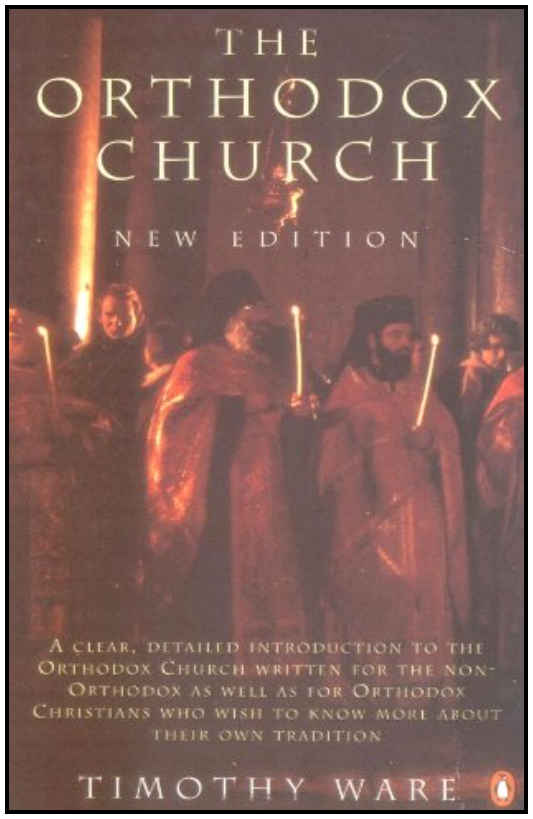 In the late 1980s, while I was studying theology at an Evangelical seminary for my first master's degree, my wife and I visited a small Orthodox chapel/bookstore in town. The man running this chapel/bookstore noticed my interest in Eastern Christianity so he gave me an old, worn-out copy of The Orthodox Church: An Introduction to Eastern Christianity by Bishop Kallistos Timothy Ware (Amazon paperback or Kindle), and I also bought the book Orthodox Dogmatic Theology by Fr. Michael Pomazansky (Amazon paperback or Kindle eBook) that explained Orthodox systematic theology, including the idea that ultimately it cannot be comprehended intellectually, only mystically – by experiencing God. After all, the word "theology" means to "know God." A few years later, we moved to Russia as Evangelical missionaries, but my mind continued ruminating on the ideas in these two books. Another great book by Timothy (later Bishop Kallistos) Ware is The Orthodox Way (Amazon paperback), or free in EPUB format (see note 1).
In the late 1980s, while I was studying theology at an Evangelical seminary for my first master's degree, my wife and I visited a small Orthodox chapel/bookstore in town. The man running this chapel/bookstore noticed my interest in Eastern Christianity so he gave me an old, worn-out copy of The Orthodox Church: An Introduction to Eastern Christianity by Bishop Kallistos Timothy Ware (Amazon paperback or Kindle), and I also bought the book Orthodox Dogmatic Theology by Fr. Michael Pomazansky (Amazon paperback or Kindle eBook) that explained Orthodox systematic theology, including the idea that ultimately it cannot be comprehended intellectually, only mystically – by experiencing God. After all, the word "theology" means to "know God." A few years later, we moved to Russia as Evangelical missionaries, but my mind continued ruminating on the ideas in these two books. Another great book by Timothy (later Bishop Kallistos) Ware is The Orthodox Way (Amazon paperback), or free in EPUB format (see note 1).
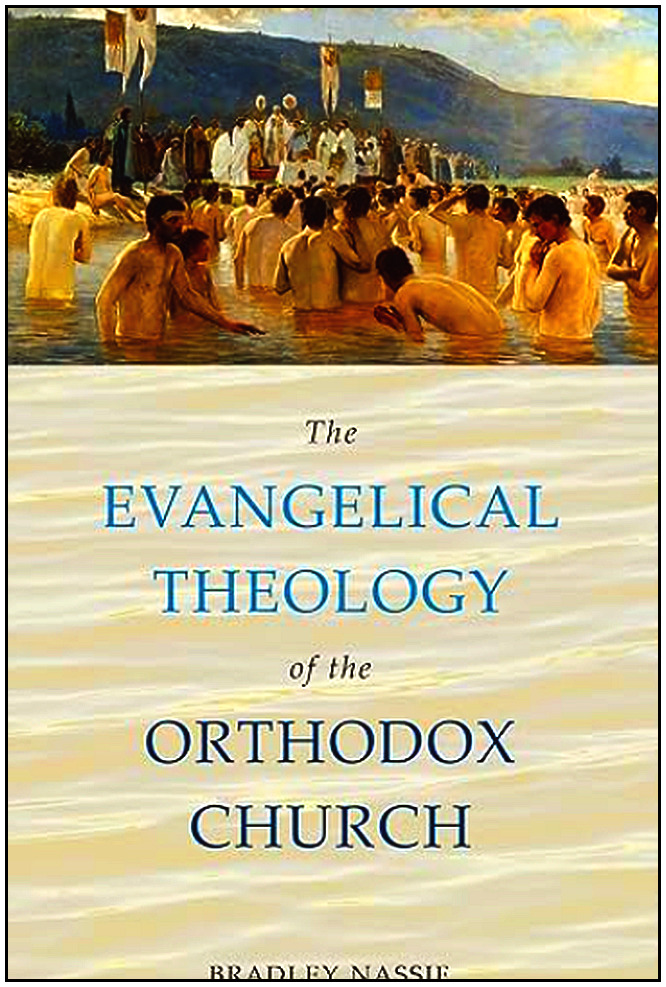 When we were beginning to serve as Evangelical missionaries to Russia in 1991, I attended a conference at Wheaton College in Illinois on Evangelical and Orthodox Christianity. One of the main speakers was Dr. Bradley Nassif, an Orthodox Christian who has taught in various Evangelical universities and seminaries. His book The Evangelical Theology of the Orthodox Church (Amazon paperback or hardback) provides an eye-opening view of the Orthodox historical roots of modern Evangelicalism. From its Amazon page: "In the essays offered in this book, Bradley Nassif argues that an evangelical (gospel) vision is embedded in the entire structure of the Church, and that it must be kept clear and central for local parishes to flourish. He also explores the elements of faith that Orthodox and Evangelicals share, without glossing over their differences, thus offering a means of mutual understanding and enrichment."
When we were beginning to serve as Evangelical missionaries to Russia in 1991, I attended a conference at Wheaton College in Illinois on Evangelical and Orthodox Christianity. One of the main speakers was Dr. Bradley Nassif, an Orthodox Christian who has taught in various Evangelical universities and seminaries. His book The Evangelical Theology of the Orthodox Church (Amazon paperback or hardback) provides an eye-opening view of the Orthodox historical roots of modern Evangelicalism. From its Amazon page: "In the essays offered in this book, Bradley Nassif argues that an evangelical (gospel) vision is embedded in the entire structure of the Church, and that it must be kept clear and central for local parishes to flourish. He also explores the elements of faith that Orthodox and Evangelicals share, without glossing over their differences, thus offering a means of mutual understanding and enrichment."
 Get Orthodoxy and the Religion of the Future by Fr. Seraphim Rose (Amazon paperback) or Amazon Kindle, or as a free EPUB (see note 1). This work was pivotal in my decision to become an Orthodox Christian. It is a concise and unequivocal Orthodox statement on contemporary trends; its urgent message rings loud and clear. Viewed from the foundation of patristic teaching, many of the spiritual movements of today are seen to be spiritual deceptions which have existed since the beginning of the Church – and not achievements of a “new religious consciousness.” Addressing soberly and directly the trends of pseudo-spirituality which appear enticing today, this book provides a beacon of discernment in these times of widespread deception.
Get Orthodoxy and the Religion of the Future by Fr. Seraphim Rose (Amazon paperback) or Amazon Kindle, or as a free EPUB (see note 1). This work was pivotal in my decision to become an Orthodox Christian. It is a concise and unequivocal Orthodox statement on contemporary trends; its urgent message rings loud and clear. Viewed from the foundation of patristic teaching, many of the spiritual movements of today are seen to be spiritual deceptions which have existed since the beginning of the Church – and not achievements of a “new religious consciousness.” Addressing soberly and directly the trends of pseudo-spirituality which appear enticing today, this book provides a beacon of discernment in these times of widespread deception.
 Get Becoming Orthodox: A Journey to the Ancient Christian Faith as a free EPUB (see note 1), or from Amazon (paperback or Kindle). This is the book that finally convinced my wife and me to become Orthodox Christians, after 40+ years involvement in Evangelical mission work to the USSR/Russia. The revised edition includes a new epilogue, "Coming up on Twenty-Five Years" since the entry of the Evangelical Orthodox into the Holy Orthodox Church. This is the story of a handful of courageous men and their congregations who risked stable occupations, security and the approval of life-long friends to be obedient to God's call. It is also the story of every believer who is searching for the true Church, where Christ is Lord. Where holiness, human responsibility, and the sovereignty of God are preached. Where fellowship is more than a covered-dish supper in the church basement. And where fads and fashions take a backseat to apostolic worship and doctrine. It's a book for those completely dissatisfied – those on their own search. This is also a book for Orthodox Christians, looking for renewal and ways to bring new life to their own Churches.
Get Becoming Orthodox: A Journey to the Ancient Christian Faith as a free EPUB (see note 1), or from Amazon (paperback or Kindle). This is the book that finally convinced my wife and me to become Orthodox Christians, after 40+ years involvement in Evangelical mission work to the USSR/Russia. The revised edition includes a new epilogue, "Coming up on Twenty-Five Years" since the entry of the Evangelical Orthodox into the Holy Orthodox Church. This is the story of a handful of courageous men and their congregations who risked stable occupations, security and the approval of life-long friends to be obedient to God's call. It is also the story of every believer who is searching for the true Church, where Christ is Lord. Where holiness, human responsibility, and the sovereignty of God are preached. Where fellowship is more than a covered-dish supper in the church basement. And where fads and fashions take a backseat to apostolic worship and doctrine. It's a book for those completely dissatisfied – those on their own search. This is also a book for Orthodox Christians, looking for renewal and ways to bring new life to their own Churches.
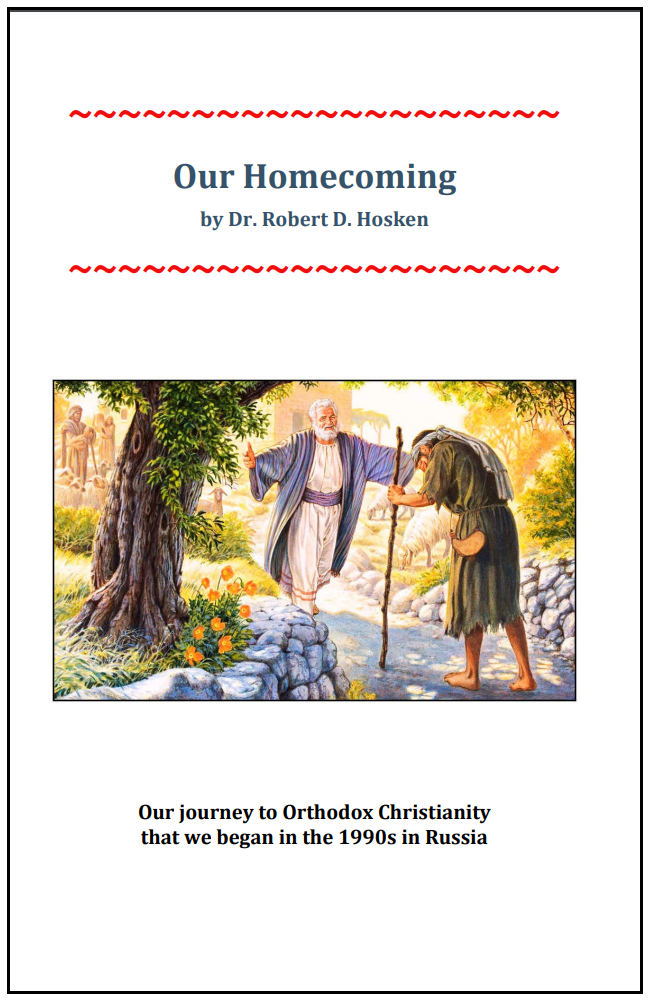 Get "Our Homecoming-booklet" PDF, a 5.5" x 8.5"-formatted 52-page booklet on 13 sheets of 8.5" x 11" paper (see note 2) + cover or as "Our Homecoming" (PDF, 30 pages, 15 sheets of 8.5" x 11" paper) by this webmaster, also available online. This is the author's search for "Original Christianity." Near the end of 40 years' involvement in Evangelical missionary work including 20+ years to Central Europe and Russia before, during and after the collapse of the USSR, he began to grapple with the inconsistencies in Evangelical theology (actually several conflicting theologies that have arisen due to the "sola Scriptura" doctrine – see "Montanism" in the section "Ancient And Modern Rejection Of Authority") and practice that he had been raised in and had studied in seminary. Missionaries of different denominations simply don't "play nice" with each other and merge their differences into one "just love Jesus" church.
Get "Our Homecoming-booklet" PDF, a 5.5" x 8.5"-formatted 52-page booklet on 13 sheets of 8.5" x 11" paper (see note 2) + cover or as "Our Homecoming" (PDF, 30 pages, 15 sheets of 8.5" x 11" paper) by this webmaster, also available online. This is the author's search for "Original Christianity." Near the end of 40 years' involvement in Evangelical missionary work including 20+ years to Central Europe and Russia before, during and after the collapse of the USSR, he began to grapple with the inconsistencies in Evangelical theology (actually several conflicting theologies that have arisen due to the "sola Scriptura" doctrine – see "Montanism" in the section "Ancient And Modern Rejection Of Authority") and practice that he had been raised in and had studied in seminary. Missionaries of different denominations simply don't "play nice" with each other and merge their differences into one "just love Jesus" church.
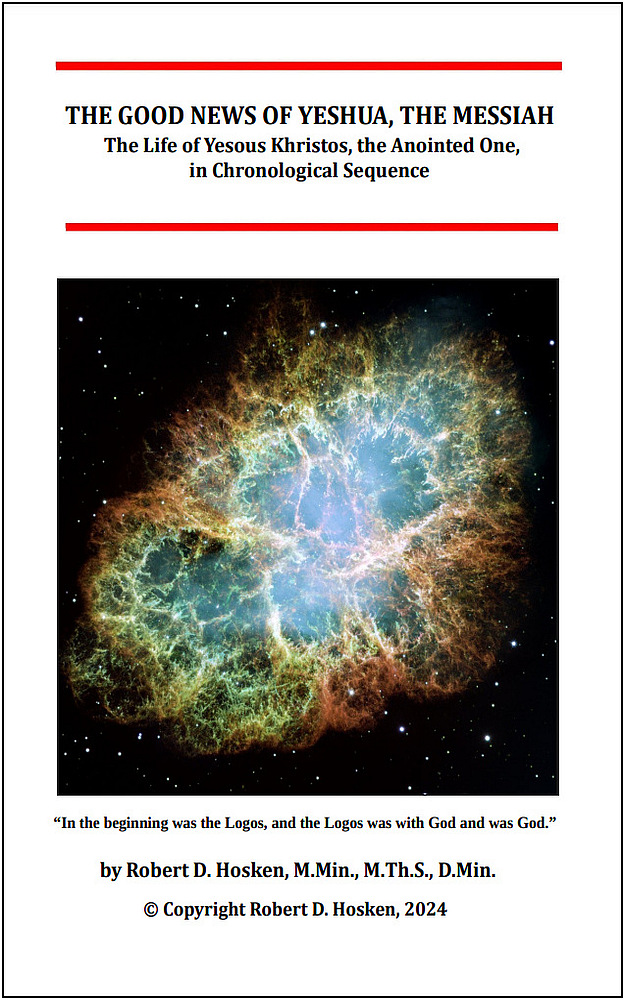 The Good News of Yeshua, the Messiah online in stand-alone mode for a historical narrative of his life, death, and resurrection. This online resouce was prepared by this webmaster to be integrated with his M.Th.S. thesis, A First-Century View of Yeshua, the Messiah (below). You can also read this "Good News" in three more formats:
The Good News of Yeshua, the Messiah online in stand-alone mode for a historical narrative of his life, death, and resurrection. This online resouce was prepared by this webmaster to be integrated with his M.Th.S. thesis, A First-Century View of Yeshua, the Messiah (below). You can also read this "Good News" in three more formats:

1. Read A First-Century View of Yeshua, the Messiah online. How might we understand the life and teachings of this preacher from Galilee as an extension of the Jewish faith? By drawing on the harmony of the Gospels in historical sequence (above) as well as many other resources, it answers this question: "If Yeshua, called the Messiah, when baptized by John is proclaimed to be G-d's Son and sacrificial Lamb, why didn't he immediately go to Jerusalem, be crucified, and rise again? His three years of ministry were necessary to train the disciples how to do diakonia-ministry" – to be servants to all the peoples of the world. You can also get A First-Century View of Yeshua, the Messiah in four more formats:
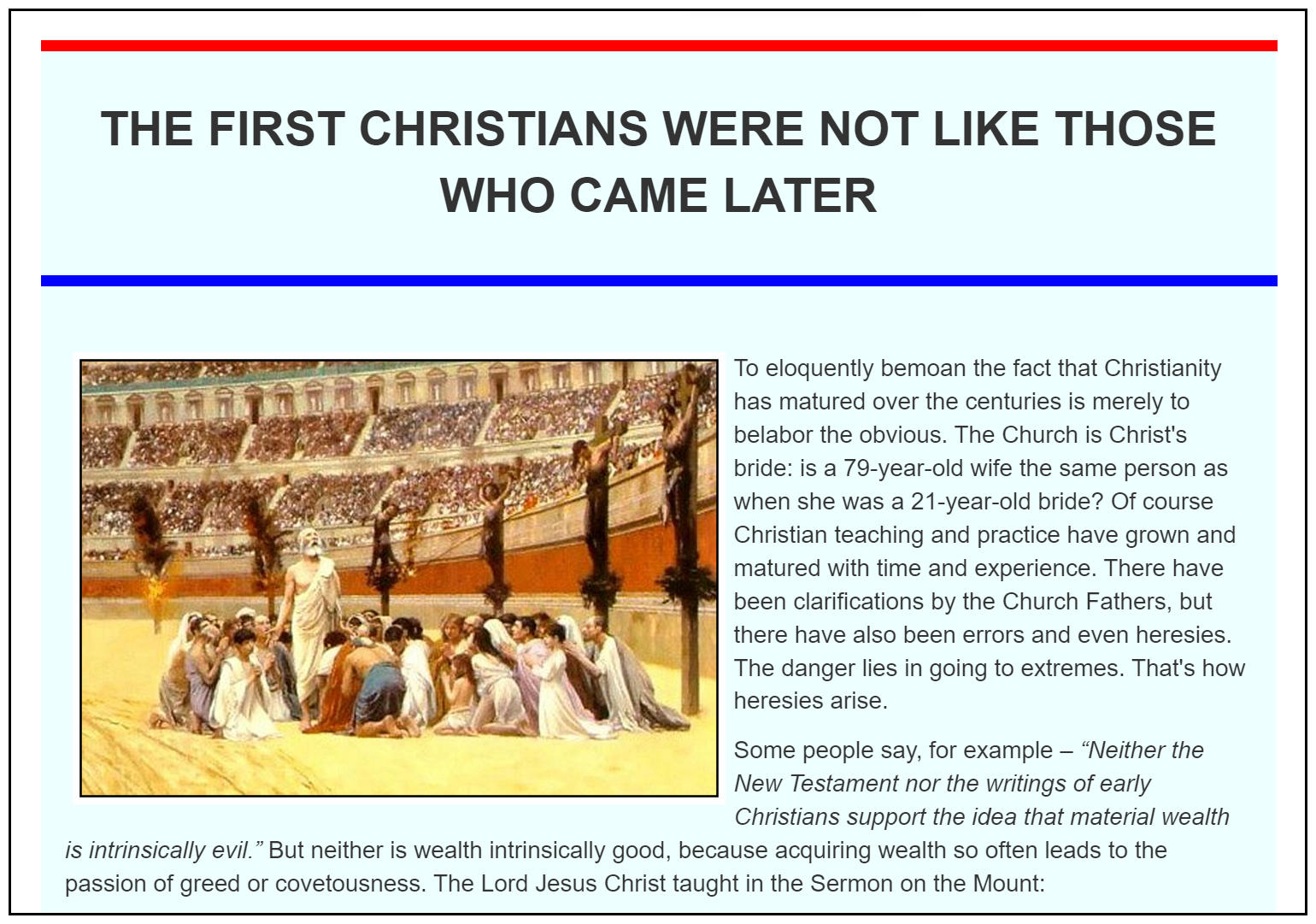 Get "The First Christians Were Not Like Those Who Came Later" – PDF, 4 pages = 1 sheet of letter paper, in 5.5" x 8.5" booklet format (see note 2). This webmaster's essay describes how today's armchair theologians can theorize about "the good old days" when the early Church was persecuted, or how it was or was not a precursor to communism, while ignoring the clear teaching of Christ and His Apostles to lead a life of simplicity, generosity, and humility. (Also available online at https://arc-news-blog.blogspot.com.)
Get "The First Christians Were Not Like Those Who Came Later" – PDF, 4 pages = 1 sheet of letter paper, in 5.5" x 8.5" booklet format (see note 2). This webmaster's essay describes how today's armchair theologians can theorize about "the good old days" when the early Church was persecuted, or how it was or was not a precursor to communism, while ignoring the clear teaching of Christ and His Apostles to lead a life of simplicity, generosity, and humility. (Also available online at https://arc-news-blog.blogspot.com.)
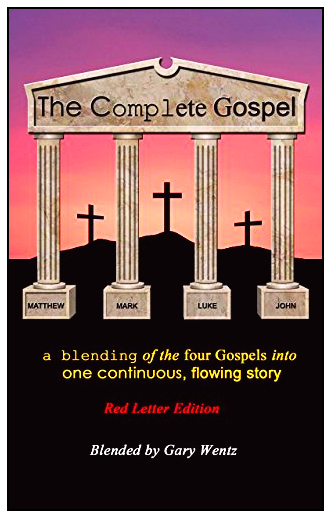 Get The Complete Gospel (Amazon Kindle: $1 or free with Kindle Unlimited): a blending of the four Gospels into one continuous, flowing story. This easy-to-read Gospel narrative is a "A unique blending of the four Gospels into a single story. Great for study, as it uses different fonts, or typefaces, to show which Gospel any given word is from. Also great to give to someone who needs to hear the Gospel, the whole Gospel, and nothing but the Gospel" per the listing at Amazon. This sola Scriptura approach, however, begs the questions of how the Gospels came about, who should interpret their meaning, and how we should understand them. The two above versions should help us to understand how these three questions might be answered from either a conservative or more liberal viewpoint.
Get The Complete Gospel (Amazon Kindle: $1 or free with Kindle Unlimited): a blending of the four Gospels into one continuous, flowing story. This easy-to-read Gospel narrative is a "A unique blending of the four Gospels into a single story. Great for study, as it uses different fonts, or typefaces, to show which Gospel any given word is from. Also great to give to someone who needs to hear the Gospel, the whole Gospel, and nothing but the Gospel" per the listing at Amazon. This sola Scriptura approach, however, begs the questions of how the Gospels came about, who should interpret their meaning, and how we should understand them. The two above versions should help us to understand how these three questions might be answered from either a conservative or more liberal viewpoint.
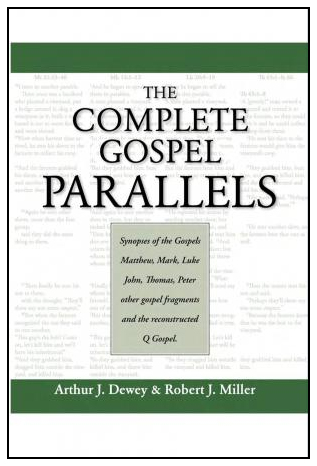 Get The Complete Gospel Parallels: A Synopses of the Gospels Matthew, Mark, Luke, John, Thomas, Peter, Other Gospels and the Reconstructed Q Gospel (PDF, 431 pages). This is an essential resource for the analytical study of the gospels, going beyond the standard parallels. This book gives those who study the gospels in English a one-volume compendium of synopses not only for the Gospels of Matthew, Mark, Luke, and John, but also for the Gospels of Thomas and Peter, as well as for a few gospel fragments (the Egerton Gospel, Gospel Oxyrhynchus 1224, as well as the Jewish-Christian Gospels of the Hebrews and the Nazoreans). The Complete Gospel Parallels also includes a synopsis for the reconstructed Q Gospel, which enables the reader both to discern how the text of Q can be derived and how Q was adopted and adapted by Matthew and Luke. The Complete Gospel Parallels features the fresh and vibrant Scholars Version translation, which has been thoroughly revised and fine-tuned to facilitate the precise comparison of parallel passages, using consistent English for the same Greek and different English where the originals vary.
Get The Complete Gospel Parallels: A Synopses of the Gospels Matthew, Mark, Luke, John, Thomas, Peter, Other Gospels and the Reconstructed Q Gospel (PDF, 431 pages). This is an essential resource for the analytical study of the gospels, going beyond the standard parallels. This book gives those who study the gospels in English a one-volume compendium of synopses not only for the Gospels of Matthew, Mark, Luke, and John, but also for the Gospels of Thomas and Peter, as well as for a few gospel fragments (the Egerton Gospel, Gospel Oxyrhynchus 1224, as well as the Jewish-Christian Gospels of the Hebrews and the Nazoreans). The Complete Gospel Parallels also includes a synopsis for the reconstructed Q Gospel, which enables the reader both to discern how the text of Q can be derived and how Q was adopted and adapted by Matthew and Luke. The Complete Gospel Parallels features the fresh and vibrant Scholars Version translation, which has been thoroughly revised and fine-tuned to facilitate the precise comparison of parallel passages, using consistent English for the same Greek and different English where the originals vary.
 Get The Jewish Gospels (PDF, 225 pages) or as a Kindle eBook at Amazon, by Rabbi Daniel Boyarin. In this book you will read about the relationship between Old Testament prophecies concerning the Son of Man who is both human-like and divine. The book review Daniel Boyarin’s The Jewish Gospels states: "His book, The Jewish Gospels, argues that the ideas that there is a second divine power in heaven, that Jesus kept kosher and that there is a suffering Messiah are ideas that resonated in some circles of Second Temple Judaism. He says this as a Jewish historical scholar. Moreover, he argues against some more skeptical NT scholars that these ideas reflect what Jesus said and taught and are not later products ot early church's theology. As such, Jesus presented his teaching to reflect an effort to speak to Judaism from within Judaism. Those who work in New Testament Christology or in Second Temple Jewish studies will not be so surprised by what is said or the texts he notes for these themes. That a world renowned talmudic scholar would say it is surprising." This fascinating book was required reading for this webmaster's seminary studies and is quoted briefly in the conclusion to his M.Th.S. thesis.
Get The Jewish Gospels (PDF, 225 pages) or as a Kindle eBook at Amazon, by Rabbi Daniel Boyarin. In this book you will read about the relationship between Old Testament prophecies concerning the Son of Man who is both human-like and divine. The book review Daniel Boyarin’s The Jewish Gospels states: "His book, The Jewish Gospels, argues that the ideas that there is a second divine power in heaven, that Jesus kept kosher and that there is a suffering Messiah are ideas that resonated in some circles of Second Temple Judaism. He says this as a Jewish historical scholar. Moreover, he argues against some more skeptical NT scholars that these ideas reflect what Jesus said and taught and are not later products ot early church's theology. As such, Jesus presented his teaching to reflect an effort to speak to Judaism from within Judaism. Those who work in New Testament Christology or in Second Temple Jewish studies will not be so surprised by what is said or the texts he notes for these themes. That a world renowned talmudic scholar would say it is surprising." This fascinating book was required reading for this webmaster's seminary studies and is quoted briefly in the conclusion to his M.Th.S. thesis.
~~~~~~~ Early Church Writings ~~~~~~~
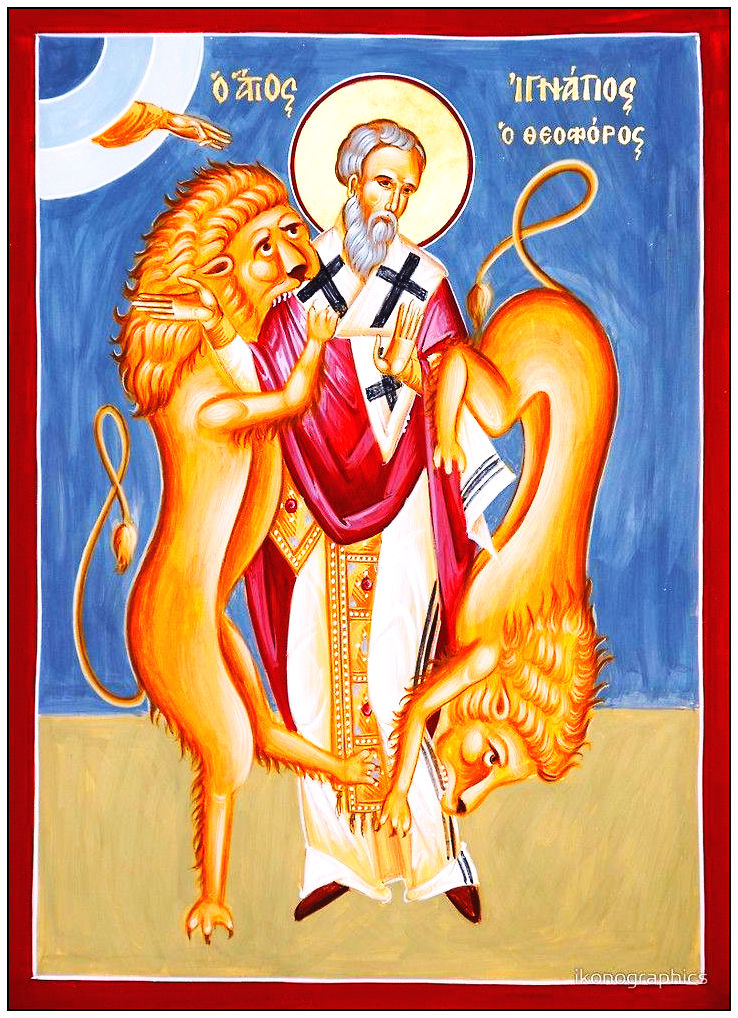 Get Ignatius of Antioch: A Commentary on his Seven Letters (free EPUB
Get Ignatius of Antioch: A Commentary on his Seven Letters (free EPUB
 Get "Saint Polycarp, Bishop of Smyrna and Holy Martyr, to the Philippians" (PDF, 10 pages) by Saint Polycarp (67-155), another disciple of St. John the Apostle. Polycarp was burned at the stake and stabbed to death as described in "The Martyrdom of St. Polycarp" (PDF in 5.5" x 8.5" format, 12 pages = 3 sheets - see note 2) or "The Martyrdom of St. Polycarp" (PDF in 8.5" x 11" format, 10 pages). Saints Polycarp and Ignatius are among those known as the Apostolic Fathers, i.e., direct disciples of the Apostles. Thus was the teaching of the Apostles passed down (paradidomai, Greek for "traditioned" or "transmitted") from one generation of bishops to the next for nearly 400 years before the writings that make up our New Testament were officially recognized as canonical in A.D. 397.
Get "Saint Polycarp, Bishop of Smyrna and Holy Martyr, to the Philippians" (PDF, 10 pages) by Saint Polycarp (67-155), another disciple of St. John the Apostle. Polycarp was burned at the stake and stabbed to death as described in "The Martyrdom of St. Polycarp" (PDF in 5.5" x 8.5" format, 12 pages = 3 sheets - see note 2) or "The Martyrdom of St. Polycarp" (PDF in 8.5" x 11" format, 10 pages). Saints Polycarp and Ignatius are among those known as the Apostolic Fathers, i.e., direct disciples of the Apostles. Thus was the teaching of the Apostles passed down (paradidomai, Greek for "traditioned" or "transmitted") from one generation of bishops to the next for nearly 400 years before the writings that make up our New Testament were officially recognized as canonical in A.D. 397.
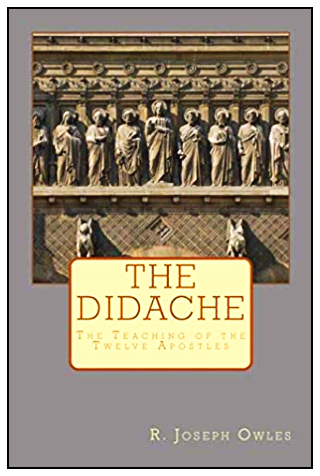 Get The Didache, or the Teaching of the Twelve Apostles in 5.5" x 8.5" booklet format (see note 2) in modern English; or in PDF, 6 pages, 8" x 11" format" in King James English; or from Amazon (paperback or Kindle). The Didache is part of the group of second-generation Christian writings by the Apostolic Fathers, those leaders of the Church who were ordained by the Apostles. This work was considered by many Church Fathers to be inspired and a part of the New Testament, but in the end, it didsn't make the cut into the New Testament canon. It is useful to show how the Early Church worshiped and dealt with itinerant preachers, guests and the poor. It states clearly that abortion or killing a newborn is murder - see Didache 2:2.
Get The Didache, or the Teaching of the Twelve Apostles in 5.5" x 8.5" booklet format (see note 2) in modern English; or in PDF, 6 pages, 8" x 11" format" in King James English; or from Amazon (paperback or Kindle). The Didache is part of the group of second-generation Christian writings by the Apostolic Fathers, those leaders of the Church who were ordained by the Apostles. This work was considered by many Church Fathers to be inspired and a part of the New Testament, but in the end, it didsn't make the cut into the New Testament canon. It is useful to show how the Early Church worshiped and dealt with itinerant preachers, guests and the poor. It states clearly that abortion or killing a newborn is murder - see Didache 2:2.
 Get "The Apostolic Constitutions" (PDF, 12 pages) or as a 12-page 5.5" x 8.5" format booklet (see note 2), extracted from Volume 7 of the Pre-Nicene Fathers (below); or as an Amazon Kindle eBook for just $0.99 – see the notes there for historical background,. This text was used to teach catechumens as they prepared for baptism to become Christians. As you will see from the scholarly notes, only certain portions appear to be of second-century origin - possibly from St. Clement, the remainder being of third- and fourth-century origin. This book, however, was once widely considered to be of Apostolic origin and canonical, teaching church discipline and governance.
Get "The Apostolic Constitutions" (PDF, 12 pages) or as a 12-page 5.5" x 8.5" format booklet (see note 2), extracted from Volume 7 of the Pre-Nicene Fathers (below); or as an Amazon Kindle eBook for just $0.99 – see the notes there for historical background,. This text was used to teach catechumens as they prepared for baptism to become Christians. As you will see from the scholarly notes, only certain portions appear to be of second-century origin - possibly from St. Clement, the remainder being of third- and fourth-century origin. This book, however, was once widely considered to be of Apostolic origin and canonical, teaching church discipline and governance.
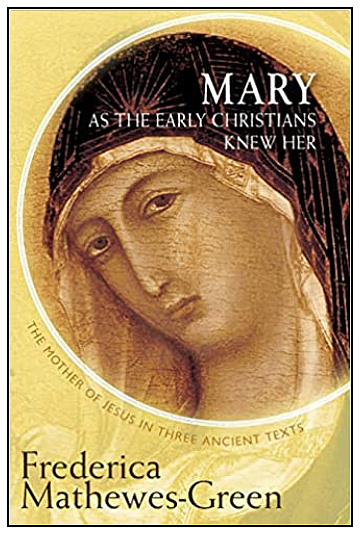 An Orthodox devotional book on Mary is Mary As the Early Christians Knew Her: The Mother of Jesus in Three Ancient Texts (Amazon) by Frederica Mathewes-Green. Origen mentions "The Protevangelium" in his second-century writings, stating that the "brethren of the Lord" were sons of Joseph by a former wife. Origen was an allegorist, however, who interpreted most of the Biblical stories allegorically rather than as historical fact. The 1906 out-of-print Roman Catholic book The Cult of Mary (PDF, 72 pages: print at 30% scale, 2 pages per sheet) by Thomas J. Gerard describes the traditioal Catholic viewpoint. An excellent scholarly text on this subject is Origins of the Cult of the Virgin Mary (Amazon) edited by Dr. Chris Maunder: click on the cover at Amazon to read the first several pages.
An Orthodox devotional book on Mary is Mary As the Early Christians Knew Her: The Mother of Jesus in Three Ancient Texts (Amazon) by Frederica Mathewes-Green. Origen mentions "The Protevangelium" in his second-century writings, stating that the "brethren of the Lord" were sons of Joseph by a former wife. Origen was an allegorist, however, who interpreted most of the Biblical stories allegorically rather than as historical fact. The 1906 out-of-print Roman Catholic book The Cult of Mary (PDF, 72 pages: print at 30% scale, 2 pages per sheet) by Thomas J. Gerard describes the traditioal Catholic viewpoint. An excellent scholarly text on this subject is Origins of the Cult of the Virgin Mary (Amazon) edited by Dr. Chris Maunder: click on the cover at Amazon to read the first several pages.
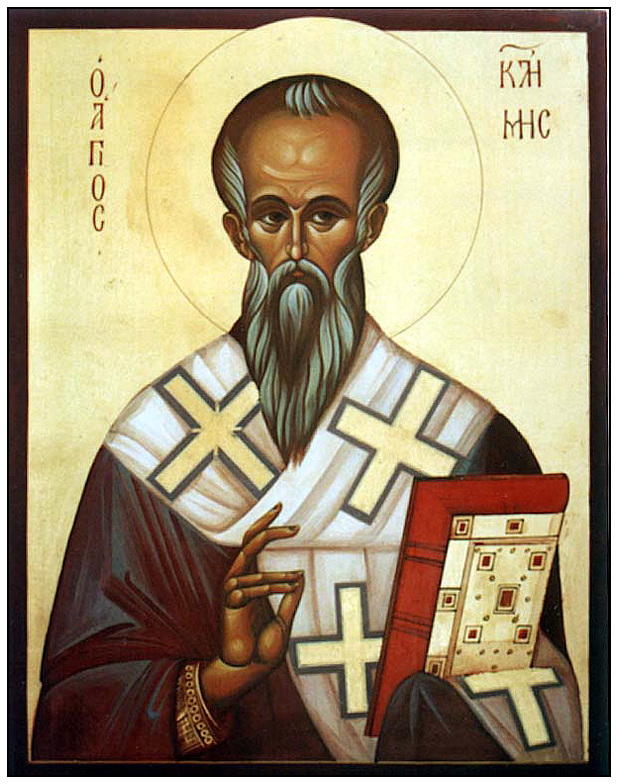 Get "Who Then Is the Rich Man That Shall Be Saved?" in modern English, 5.5" x 8.5" booklet format (see note 2) + cover; or as an "8.5" x 11" PDF" (25 pages) that uses more King James English, as also in HTML format, by St. Clement of Alexandria (c. 150 - c. 215) "a Christian theologian who taught at the Catechetical School of Alexandria. A convert to Christianity, he was an educated man who was familiar with classical Greek philosophy and literature. As his three major works demonstrate, Clement was influenced by Hellenistic philosophy to a greater extent than any other Christian thinker of his time, and in particular by Plato and the Stoics" (Wikipedia). Extracted from the Nicene Fathers and Ante-Nicene Fathers.
Get "Who Then Is the Rich Man That Shall Be Saved?" in modern English, 5.5" x 8.5" booklet format (see note 2) + cover; or as an "8.5" x 11" PDF" (25 pages) that uses more King James English, as also in HTML format, by St. Clement of Alexandria (c. 150 - c. 215) "a Christian theologian who taught at the Catechetical School of Alexandria. A convert to Christianity, he was an educated man who was familiar with classical Greek philosophy and literature. As his three major works demonstrate, Clement was influenced by Hellenistic philosophy to a greater extent than any other Christian thinker of his time, and in particular by Plato and the Stoics" (Wikipedia). Extracted from the Nicene Fathers and Ante-Nicene Fathers.
 Get the classic On the Incarnation of the Word: 63 pages formatted as a 5.5" x 8.5" booklet = 16 sheets of letter-size paper (see note 2) + cover; or as a free EPUB - see note 1); or as a 53-page 8.5" x 11" PDF: here, by St. Athanasius, Bishop Of Alexandria (293-373). St. Athanasius was a great "theologian, ecclesiastical statesman, and Egyptian national leader; he was the chief defender of Christian orthodoxy in the 4th-century battle against Arianism, the heresy that the Son of God was a creature of like, but not of the same, substance as God the Father" (Britannica).
Get the classic On the Incarnation of the Word: 63 pages formatted as a 5.5" x 8.5" booklet = 16 sheets of letter-size paper (see note 2) + cover; or as a free EPUB - see note 1); or as a 53-page 8.5" x 11" PDF: here, by St. Athanasius, Bishop Of Alexandria (293-373). St. Athanasius was a great "theologian, ecclesiastical statesman, and Egyptian national leader; he was the chief defender of Christian orthodoxy in the 4th-century battle against Arianism, the heresy that the Son of God was a creature of like, but not of the same, substance as God the Father" (Britannica).
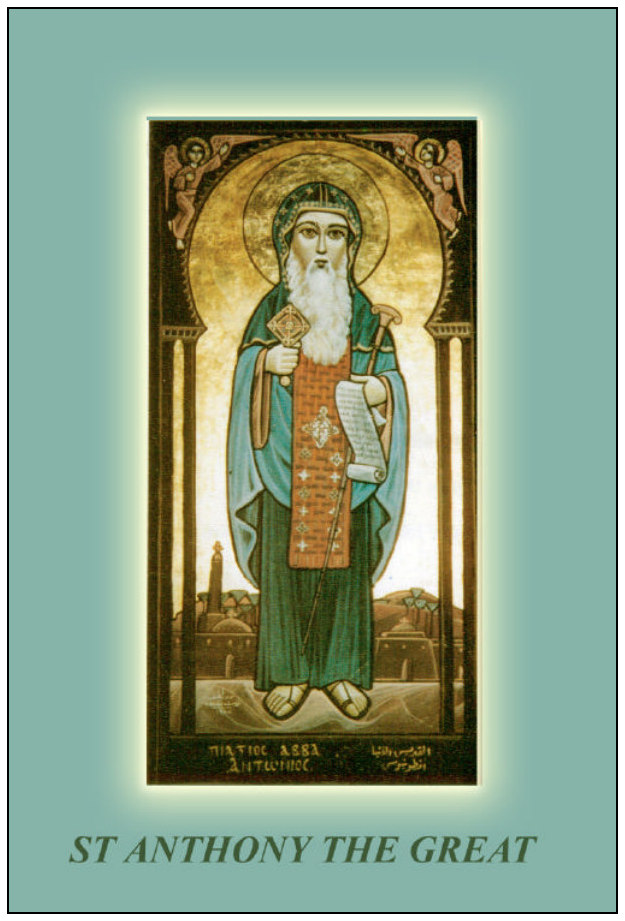 Get the Life of St. Anthony (PDF, 87 pages) written by St. Athanasius. St. Anthony of Egypt - actually a Copt – is considered to be the father of monasticism. He was born about A.D. 250 in Koma, central Egypt, and around age 20 began the ascetic life in that same village. After 15 years, he left and became a desert hermit – hence the term "eremitic" monasticism – fasting and praying continually to subdue the flesh and struggle against demonic powers. Others began to come into the desert and follow his lifestyle, living in their separate huts.
Get the Life of St. Anthony (PDF, 87 pages) written by St. Athanasius. St. Anthony of Egypt - actually a Copt – is considered to be the father of monasticism. He was born about A.D. 250 in Koma, central Egypt, and around age 20 began the ascetic life in that same village. After 15 years, he left and became a desert hermit – hence the term "eremitic" monasticism – fasting and praying continually to subdue the flesh and struggle against demonic powers. Others began to come into the desert and follow his lifestyle, living in their separate huts.
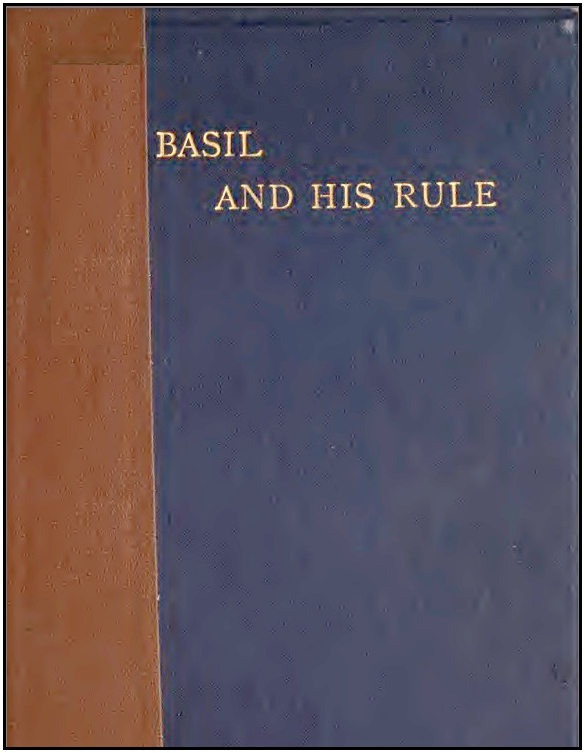 Get St. Basil and His Rule: a Study in Early Monasticism (PDF, 172 pages). St. Basil the Great (330-379) popularized monasticism, his "rule" for monastics eventually spreading throughout the Greek and Slavic Orthodox world. This work is more a series of questions and answers for those wishing to be monastics, rather than a list of rules. Born into a wealthy Christian family, he received a classical education in Constantinople and Athens. After his parents' deaths he became a monastic and was later ordained as bishop; he dedicated all of his possessions to the Church to build hospices and homes for the the sick, poor, orphans and widows.
Get St. Basil and His Rule: a Study in Early Monasticism (PDF, 172 pages). St. Basil the Great (330-379) popularized monasticism, his "rule" for monastics eventually spreading throughout the Greek and Slavic Orthodox world. This work is more a series of questions and answers for those wishing to be monastics, rather than a list of rules. Born into a wealthy Christian family, he received a classical education in Constantinople and Athens. After his parents' deaths he became a monastic and was later ordained as bishop; he dedicated all of his possessions to the Church to build hospices and homes for the the sick, poor, orphans and widows.
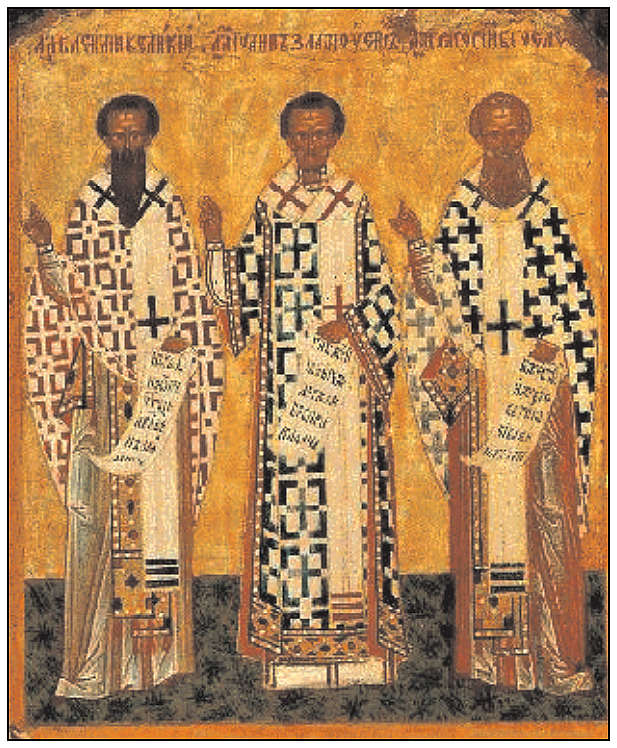 Get a 36-page (9 sheets of paper) overview of On the Holy Spirit - overview (PDF in 5.5" x 8.5" format – see note 2) + cover, presented by: Brian Ephrem Fitzgerald, Ph.D. at St. Philip’s Antiochian Orthodox Church, Souderton, PA; or get it as a 23-page overview (PDF in 8.5" x 11" format). Or get the whole essay: On the Holy Spirit (PDF, 113 pages) by St. Basil the Great, bishop of Caesarea, which I have extracted from the Post-Nicene Fathers, vol. 8, Basil: Letters and Select Works, or you can read it in HTML format. Read this foundational Christian classic!
Get a 36-page (9 sheets of paper) overview of On the Holy Spirit - overview (PDF in 5.5" x 8.5" format – see note 2) + cover, presented by: Brian Ephrem Fitzgerald, Ph.D. at St. Philip’s Antiochian Orthodox Church, Souderton, PA; or get it as a 23-page overview (PDF in 8.5" x 11" format). Or get the whole essay: On the Holy Spirit (PDF, 113 pages) by St. Basil the Great, bishop of Caesarea, which I have extracted from the Post-Nicene Fathers, vol. 8, Basil: Letters and Select Works, or you can read it in HTML format. Read this foundational Christian classic!
 Basil advocated and wrote much on the need to share equally one's wealth with the poor, for example, see his book On Social Justice (Amazon) or as a free eBook – see note 1. This book includes his sermon "To the Rich" (below) and the sermon "I Will Tear Down My Barns" (based on Luke 12:15-21). In an online review of this book, Basil is quoted: "Thus, those who love their neighbor as themselves possess nothing more than their neighbour; yet surely, you seem to have great possessions! How else can this be, but that you have preferred your own enjoyment to the consolation of many? For the more you abound in wealth, the more you lack in love." Read the review and get the whole book!
Basil advocated and wrote much on the need to share equally one's wealth with the poor, for example, see his book On Social Justice (Amazon) or as a free eBook – see note 1. This book includes his sermon "To the Rich" (below) and the sermon "I Will Tear Down My Barns" (based on Luke 12:15-21). In an online review of this book, Basil is quoted: "Thus, those who love their neighbor as themselves possess nothing more than their neighbour; yet surely, you seem to have great possessions! How else can this be, but that you have preferred your own enjoyment to the consolation of many? For the more you abound in wealth, the more you lack in love." Read the review and get the whole book!

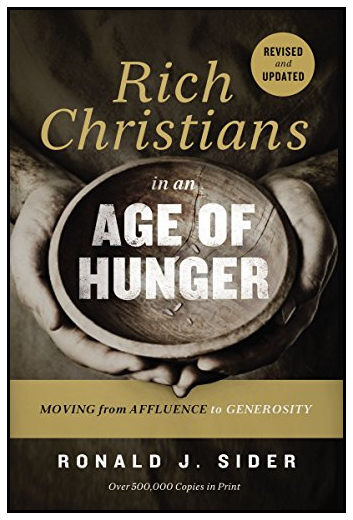 Get the book Rich Christians in an Age of Hunger: Moving from Affluence to Generosity. (Amazon print, or $0 for Kindle) by Dr. Ron Sider, a professor of theology: the book examines the issues of poverty and hunger in modern society. In an age obsessed with wealth, Christians seem to have forgotten that scripture encourages believers to give to the poor. Why do 1.3 billion people live in abject poverty? And what should Christians do about it? While the Bible is full of instructions to care for the poor and warns against being seduced by riches, it’s been statistically proven that the richer countries become, the lower percent is that they give. Dr. Sider finds himself agreeing with both sides that conservatives blame what they consider to be morally reprehensible "individual choices" and liberals blame what they believe to be constrictive "social and economic policy."
Get the book Rich Christians in an Age of Hunger: Moving from Affluence to Generosity. (Amazon print, or $0 for Kindle) by Dr. Ron Sider, a professor of theology: the book examines the issues of poverty and hunger in modern society. In an age obsessed with wealth, Christians seem to have forgotten that scripture encourages believers to give to the poor. Why do 1.3 billion people live in abject poverty? And what should Christians do about it? While the Bible is full of instructions to care for the poor and warns against being seduced by riches, it’s been statistically proven that the richer countries become, the lower percent is that they give. Dr. Sider finds himself agreeing with both sides that conservatives blame what they consider to be morally reprehensible "individual choices" and liberals blame what they believe to be constrictive "social and economic policy."
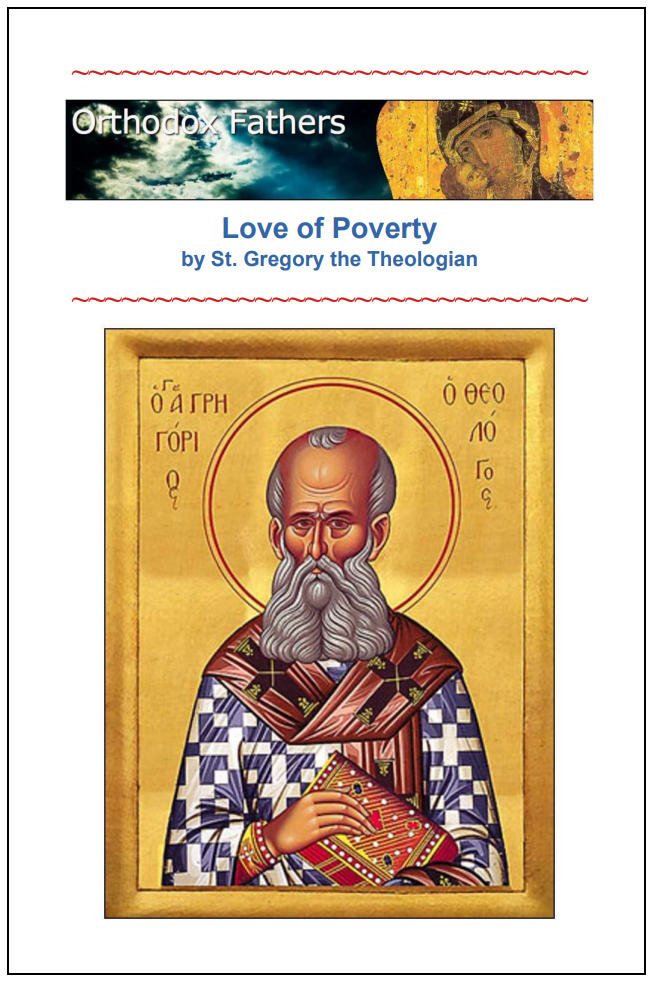 Get the speech Love of Poverty (PDF, 8 pages in 5.5" x 8.5" format = 2 sheets– see note 2) by St. Gregory the Theologian (c.327-390). He was a monastic, a contemporary of St. Basil and St. Gregory Of Nyssa. He is sometimes called Gregory of Nazianzus because he was bishop there, but that title properly belongs to his father who was bishop of Nazianzus earlier. Only a very few Orthodox Church Fathers are considered worthy of the name "theologian" so this is a great Christian man worth learning from.
Get the speech Love of Poverty (PDF, 8 pages in 5.5" x 8.5" format = 2 sheets– see note 2) by St. Gregory the Theologian (c.327-390). He was a monastic, a contemporary of St. Basil and St. Gregory Of Nyssa. He is sometimes called Gregory of Nazianzus because he was bishop there, but that title properly belongs to his father who was bishop of Nazianzus earlier. Only a very few Orthodox Church Fathers are considered worthy of the name "theologian" so this is a great Christian man worth learning from.
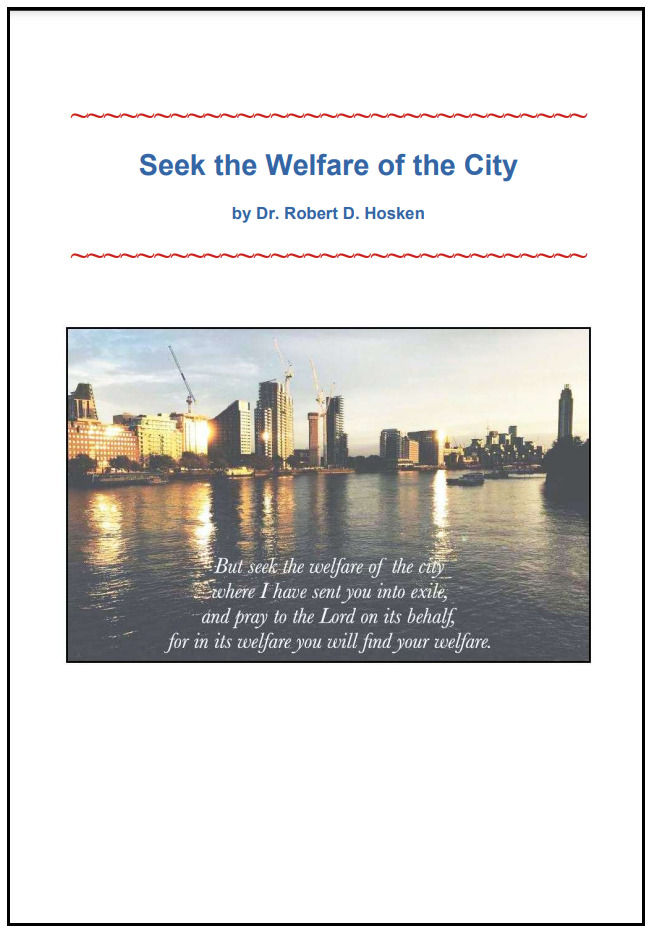 Get "Seek the Welfare of the City" (PDF, a 5.5" x 8.5"-formatted 20-page booklet - see note 2) + cover . This is a study of the history of public philanthropy, which has its roots in the Eastern Orthodox Church in the early fourth century A.D. It quotes extensively from the Church Fathers and from several scholarly books and articles to contrast the Christian view of welfare with the state view of welfare. It is also available online in two parts: Part 1 and Part 2.
Get "Seek the Welfare of the City" (PDF, a 5.5" x 8.5"-formatted 20-page booklet - see note 2) + cover . This is a study of the history of public philanthropy, which has its roots in the Eastern Orthodox Church in the early fourth century A.D. It quotes extensively from the Church Fathers and from several scholarly books and articles to contrast the Christian view of welfare with the state view of welfare. It is also available online in two parts: Part 1 and Part 2.
 Get "Health and Healing in Byzantium" as an 8-page 5.5" x 8.5" PDF [2 letter-size sheets] – see note 2) or here (PDF, 7 pages in 8.5" x 11" format [4 letter-size sheets]) or by John G. Demakis, M.D. who describes the emergence and organization of orphanages, hospitals, leprosaria and hospices in Byzantium, which led to what is now the modern healthcare system.
Get "Health and Healing in Byzantium" as an 8-page 5.5" x 8.5" PDF [2 letter-size sheets] – see note 2) or here (PDF, 7 pages in 8.5" x 11" format [4 letter-size sheets]) or by John G. Demakis, M.D. who describes the emergence and organization of orphanages, hospitals, leprosaria and hospices in Byzantium, which led to what is now the modern healthcare system.
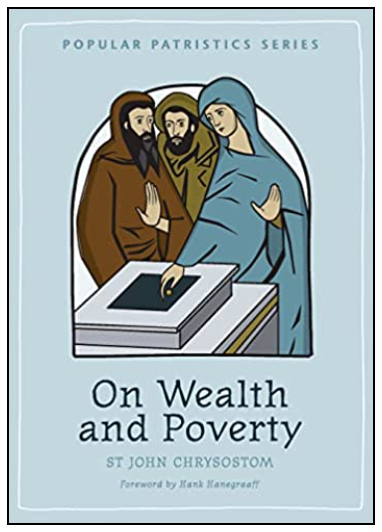 St. John Chrysostom is known for his concern for the poor: his book On Wealth and Poverty (Amazon) or as a free PDF (138 pages) about the rich man and Lazarus is a classic in this regard. You can also get On Wealth and Poverty: outline (a 20-page PDF). And every Pascha (Easter) in Orthodox Churches, we read The Paschal Sermon of St. John Chrysostom (PDF, 3 pages): you'll find it very inspiring!
St. John Chrysostom is known for his concern for the poor: his book On Wealth and Poverty (Amazon) or as a free PDF (138 pages) about the rich man and Lazarus is a classic in this regard. You can also get On Wealth and Poverty: outline (a 20-page PDF). And every Pascha (Easter) in Orthodox Churches, we read The Paschal Sermon of St. John Chrysostom (PDF, 3 pages): you'll find it very inspiring!
 Get ""A Sermon on Almsgiving"" by St. John Chrysostom (16-page PDF in 5.5" x 8.5" format, so 4 sheets of letter paper – see note 2. This sermon was delivered when St. John Chrysostom was passing through the marketplace during winter time, and he saw the poor and the beggars uncared for and wasting away. The sermon shows his vast knowledge and understanding of the Holy Scriptures.
Get ""A Sermon on Almsgiving"" by St. John Chrysostom (16-page PDF in 5.5" x 8.5" format, so 4 sheets of letter paper – see note 2. This sermon was delivered when St. John Chrysostom was passing through the marketplace during winter time, and he saw the poor and the beggars uncared for and wasting away. The sermon shows his vast knowledge and understanding of the Holy Scriptures.
 Get "St. John Chrysostom: The Prophet of Charity" (PDF, 8 pages in 5.5" x 8.5" format – see note 2) by Protopresbyter Georges Florovsky. This article describes St. John Chrysostom as both rigorous with himself and charitable with others. Chrysostom exhorted with conviction but did not demand or enforce what he preached; rather, he emphasized that man's freedom to choose the good is the basis for moral responsibility, for without freedom there is no responsibility. See also Chrysostom's book Preaching Bondage: John Chrysostom and the Discourse of Slavery in Early Christianity below.
Get "St. John Chrysostom: The Prophet of Charity" (PDF, 8 pages in 5.5" x 8.5" format – see note 2) by Protopresbyter Georges Florovsky. This article describes St. John Chrysostom as both rigorous with himself and charitable with others. Chrysostom exhorted with conviction but did not demand or enforce what he preached; rather, he emphasized that man's freedom to choose the good is the basis for moral responsibility, for without freedom there is no responsibility. See also Chrysostom's book Preaching Bondage: John Chrysostom and the Discourse of Slavery in Early Christianity below.
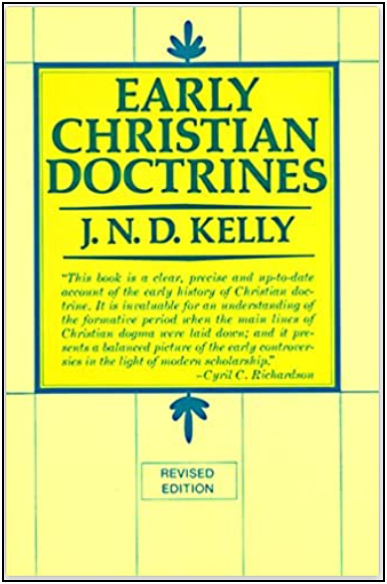 Get Early Christian Doctrines by J. N. D. Kelly (PDF, 514 pages in 8.5" x 11" format) or from Amazon in paperback or hardcover. See p. 75 (the 87th page in the PDF) for an excellent description of the Antiochian "historico-grammatical method" of Bible interpretation. This book by Kelly, a lecturer at Oxford University, is one of the best descriptions ever written about the development of doctrine in the first five centuries of Christianity, when the Church was still united. I was assigned this book to read both at Trinity Evangelical Divinity School and at the Antiochian House of Studies, so it is well-received by both Evangelical and Orthodox Christians. I highly recommend it!
Get Early Christian Doctrines by J. N. D. Kelly (PDF, 514 pages in 8.5" x 11" format) or from Amazon in paperback or hardcover. See p. 75 (the 87th page in the PDF) for an excellent description of the Antiochian "historico-grammatical method" of Bible interpretation. This book by Kelly, a lecturer at Oxford University, is one of the best descriptions ever written about the development of doctrine in the first five centuries of Christianity, when the Church was still united. I was assigned this book to read both at Trinity Evangelical Divinity School and at the Antiochian House of Studies, so it is well-received by both Evangelical and Orthodox Christians. I highly recommend it!
 Florovsky, a prominent 20th century Orthodox Christian priest, theologian, and writer, active in the ecumenical movement. His writing is known for its clear, profound style, covering subjects on nearly every aspect of Church life. Florovsky was born in Odessa as the fourth child of a priest. Inspired by the erudite environment in which he grew up, he learned English, German, French, Latin, Greek, and Hebrew while still a schoolboy.
Florovsky, a prominent 20th century Orthodox Christian priest, theologian, and writer, active in the ecumenical movement. His writing is known for its clear, profound style, covering subjects on nearly every aspect of Church life. Florovsky was born in Odessa as the fourth child of a priest. Inspired by the erudite environment in which he grew up, he learned English, German, French, Latin, Greek, and Hebrew while still a schoolboy.
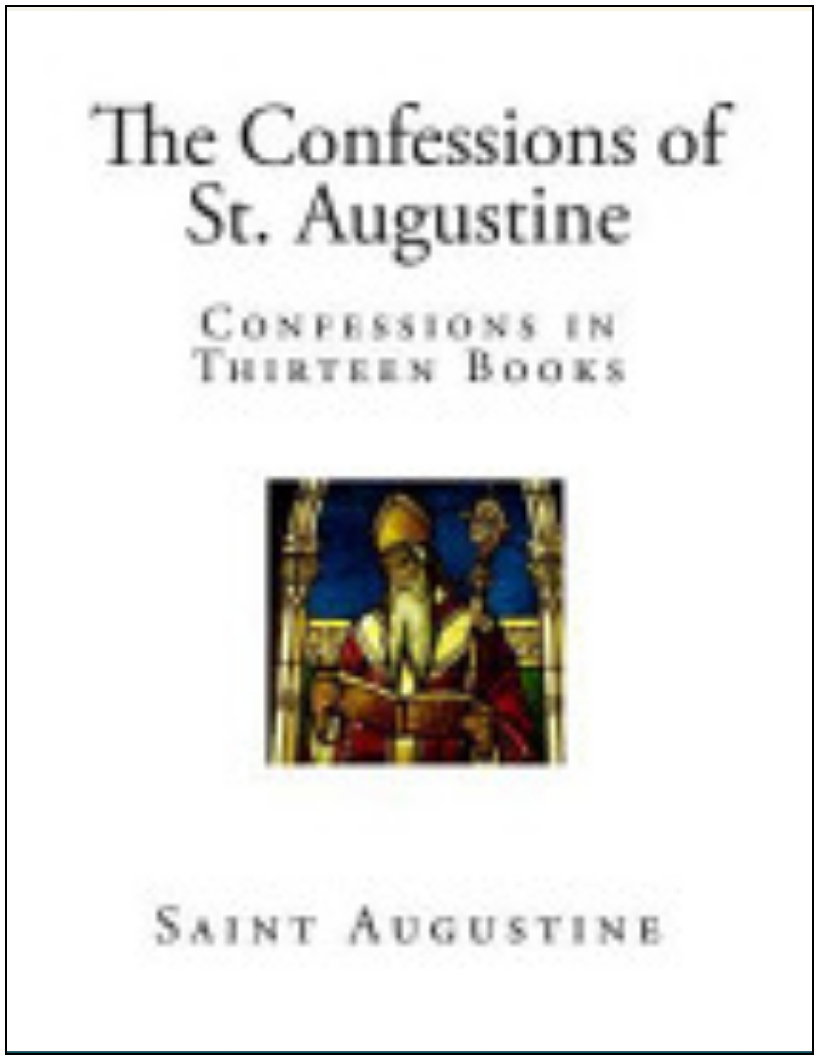 The Confessions of St. Augustine in Thirteen Books in free EPUB format (see note 1) or Prolegomena: St. Augustine's Life and Work, Confessions, Letters (PDF, 1,348 pages), by Augustine of Hippo (354-430), Series I of the Nicene and Post-Nicene Fathers in the Early Church Fathers. He is considered one of the great Church Fathers of the fourth and fifth centuries by the Roman Catholic Church.
The Confessions of St. Augustine in Thirteen Books in free EPUB format (see note 1) or Prolegomena: St. Augustine's Life and Work, Confessions, Letters (PDF, 1,348 pages), by Augustine of Hippo (354-430), Series I of the Nicene and Post-Nicene Fathers in the Early Church Fathers. He is considered one of the great Church Fathers of the fourth and fifth centuries by the Roman Catholic Church.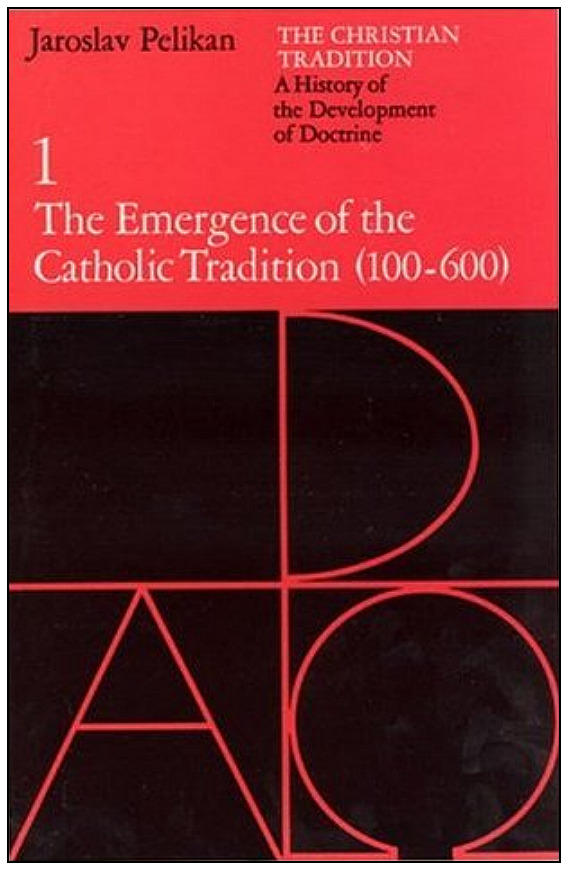 Get the print version of the book The Emergence of the Catholic Tradition (100-600) from Amazon, or a free PDF version (422 pages), the first volume of a five-part history of Christianity by Jaroslav Pelikan, likely the greatest church historian of the 20th century. A Lutheran for most of his life, toward the end he embraced Orthodox Christianity. He wrote a penetrating denunciation of Augustine's doctrine of predestination on pp. 307-331, with the climax on p. 320 – "But the Augustinian doctrine was not merely novel and heretical, it was finally heathen. It was a 'fatalistic' theory [fatalis persuasio].' It spoke a great deal about grace, but 'in the name of grace [Augustine] preaches fatalism.' Predestination was simply a euphemistic way of reintroducing a pagan notion of fatal necessity. The Augustinian doctrine appeared to be epitomized in the thesis that 'by God's predestination men are compelled to sin and driven to death by a sort of fatal necessity.' But fatalism, even under the guise of the [un]Christian doctrine of predestination, would lead to conclusions that any Christian would find repugnant." Augustine himself sensed this, but because of his basic assumption – although mistaken – in his interpretation of Rom. 5:12, he could not shake himself free of his fatalistic predestination mindset:
Get the print version of the book The Emergence of the Catholic Tradition (100-600) from Amazon, or a free PDF version (422 pages), the first volume of a five-part history of Christianity by Jaroslav Pelikan, likely the greatest church historian of the 20th century. A Lutheran for most of his life, toward the end he embraced Orthodox Christianity. He wrote a penetrating denunciation of Augustine's doctrine of predestination on pp. 307-331, with the climax on p. 320 – "But the Augustinian doctrine was not merely novel and heretical, it was finally heathen. It was a 'fatalistic' theory [fatalis persuasio].' It spoke a great deal about grace, but 'in the name of grace [Augustine] preaches fatalism.' Predestination was simply a euphemistic way of reintroducing a pagan notion of fatal necessity. The Augustinian doctrine appeared to be epitomized in the thesis that 'by God's predestination men are compelled to sin and driven to death by a sort of fatal necessity.' But fatalism, even under the guise of the [un]Christian doctrine of predestination, would lead to conclusions that any Christian would find repugnant." Augustine himself sensed this, but because of his basic assumption – although mistaken – in his interpretation of Rom. 5:12, he could not shake himself free of his fatalistic predestination mindset:
 In Augustine's last great work, The City of God, Volume II (Amazon print and Kindle) or in free EPUB format ( see note 1) also in Vol. II of the Nicene and Post-Nicene Fathers in the Early Church Fathers, he brings his earlier teaching on original sin, predestination, and inherited human guilt closer into harmony with the Eastern Church Fathers. At the beginning of this book he wrote that Adam and Eve "merited this [death] by their disobedience; for by them so great a sin was committed, that by it the human nature was altered for the worse, and was transmitted also to their posterity, liable to sin and subject to death." Note that he does not state here that all mankind is totally depraved and inherits Adam's sin and guilt, only death; rather, mankind is merely "liable (likely) to sin." Thus an unbaptized infant who dies would not be guilty of sin and would not be subject to eternal damnation. But later, Thomas Aquinas and John Calvin, apparently unaware of Augustine's recantation, developed further Augustine's earlier doctrines of original guilt and predestination.
In Augustine's last great work, The City of God, Volume II (Amazon print and Kindle) or in free EPUB format ( see note 1) also in Vol. II of the Nicene and Post-Nicene Fathers in the Early Church Fathers, he brings his earlier teaching on original sin, predestination, and inherited human guilt closer into harmony with the Eastern Church Fathers. At the beginning of this book he wrote that Adam and Eve "merited this [death] by their disobedience; for by them so great a sin was committed, that by it the human nature was altered for the worse, and was transmitted also to their posterity, liable to sin and subject to death." Note that he does not state here that all mankind is totally depraved and inherits Adam's sin and guilt, only death; rather, mankind is merely "liable (likely) to sin." Thus an unbaptized infant who dies would not be guilty of sin and would not be subject to eternal damnation. But later, Thomas Aquinas and John Calvin, apparently unaware of Augustine's recantation, developed further Augustine's earlier doctrines of original guilt and predestination.
~~~~~~~ St. Benedict et al ~~~~~~~
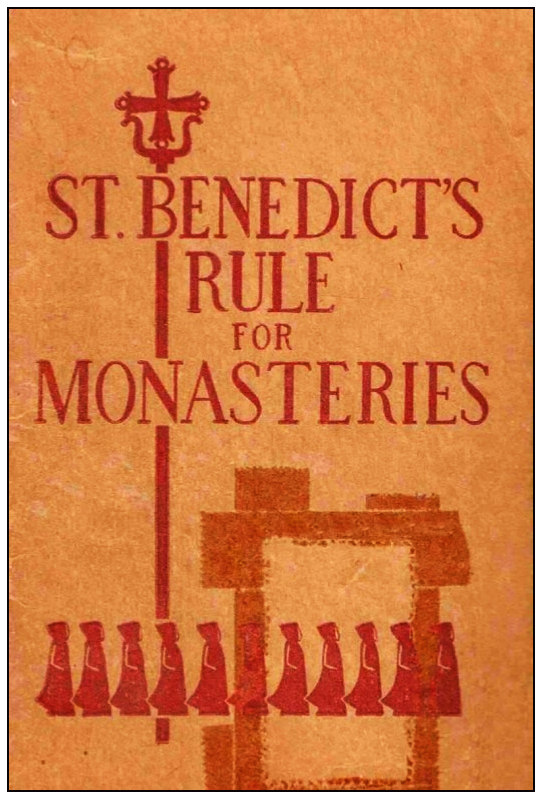 Get The Rule of St. Benedict (free EPUB – see note 1) by St. Benedict (c. 480-550) of Nursia in Italy. Written for monks living communally under the authority of an abbot, updated into modern English by the Gutenberg Project: you can also read it online here. St. Benedict is often considered the father of Western monasticism. At this time period, there was not a great difference between Eastern and Western monasticism. Benedict wrote these rules to provide "a moderate path between individual zeal and formulaic institutionalism; because of this middle ground it has been widely popular. Benedict's concerns were the needs of monks in a community environment: namely, to establish due order, to foster an understanding of the relational nature of human beings, and to provide a spiritual father to support and strengthen the individual's ascetic effort and the spiritual growth that is required for the fulfillment of the human vocation, theosis" (Wikipedia).
Get The Rule of St. Benedict (free EPUB – see note 1) by St. Benedict (c. 480-550) of Nursia in Italy. Written for monks living communally under the authority of an abbot, updated into modern English by the Gutenberg Project: you can also read it online here. St. Benedict is often considered the father of Western monasticism. At this time period, there was not a great difference between Eastern and Western monasticism. Benedict wrote these rules to provide "a moderate path between individual zeal and formulaic institutionalism; because of this middle ground it has been widely popular. Benedict's concerns were the needs of monks in a community environment: namely, to establish due order, to foster an understanding of the relational nature of human beings, and to provide a spiritual father to support and strengthen the individual's ascetic effort and the spiritual growth that is required for the fulfillment of the human vocation, theosis" (Wikipedia).
 Get Rod Dreher's book, The Benedict Option: A Strategy for Christians in a Post-Christian Nation (Amazon) or free in EPUB format (see note 1) that tells how to apply these principles to Christians not in a monastery, but striving to lead a life of spiritual discipline and genuine community in today's post-Christian, neopagan world. In this controversial New York Times bestseller, Rod Dreher calls on American Christians to prepare for the coming Dark Age by embracing an ancient Christian way of life.
Get Rod Dreher's book, The Benedict Option: A Strategy for Christians in a Post-Christian Nation (Amazon) or free in EPUB format (see note 1) that tells how to apply these principles to Christians not in a monastery, but striving to lead a life of spiritual discipline and genuine community in today's post-Christian, neopagan world. In this controversial New York Times bestseller, Rod Dreher calls on American Christians to prepare for the coming Dark Age by embracing an ancient Christian way of life.
 Get Building the Benedict Option (free EPUB – see note 1) by Dr. Leah Libresco with a foreword by Rod Dreher. Or you can get it from Amazon in print. Building the Benedict Option is a combination spiritual memoir and practical handbook for Christians who want to build communities of prayer, socialization, and evangelization in the places where they live and work. Beginning when the author was a new convert, she desired more communal prayer and fellowship. She surveyed her friends – busy, young, urban professionals like herself – and created unique enriching or supportive experiences that matched their desires and schedules. The result was a less lonely and more boisterous spiritual and social life.
Get Building the Benedict Option (free EPUB – see note 1) by Dr. Leah Libresco with a foreword by Rod Dreher. Or you can get it from Amazon in print. Building the Benedict Option is a combination spiritual memoir and practical handbook for Christians who want to build communities of prayer, socialization, and evangelization in the places where they live and work. Beginning when the author was a new convert, she desired more communal prayer and fellowship. She surveyed her friends – busy, young, urban professionals like herself – and created unique enriching or supportive experiences that matched their desires and schedules. The result was a less lonely and more boisterous spiritual and social life.
 Get "Building the New City – St. Basil's Social Vision" in 5.5" x 8.5" format (PDF, 12 pages [3 sheets] – see note 2) or as an 8.5" x 11" PDF, 7 pages, by Paul Schroeder, a concise overview of St. Basil's "New City." St. Basil, a 5th-century bishop, donated all his wealth to the poor for constructing the "New City" just outside Caesarea. He devised a new approach for monastics: both monks and nuns should serve God by serving mankind. Basil's Basiliad or "New City" had a hospital, lodging for pilgrims, and housing for the poor and elderly along with the monasteries.
Get "Building the New City – St. Basil's Social Vision" in 5.5" x 8.5" format (PDF, 12 pages [3 sheets] – see note 2) or as an 8.5" x 11" PDF, 7 pages, by Paul Schroeder, a concise overview of St. Basil's "New City." St. Basil, a 5th-century bishop, donated all his wealth to the poor for constructing the "New City" just outside Caesarea. He devised a new approach for monastics: both monks and nuns should serve God by serving mankind. Basil's Basiliad or "New City" had a hospital, lodging for pilgrims, and housing for the poor and elderly along with the monasteries.
 Get "Building the ARC: Personal empowerment via accountability and work" (PDF in 5.5" x 8.5" format, 16 pages = 4 sheets of letter paper – see note 2) by this webmaster. You can also download this "Building the ARC" article in 8.5" x 11" PDF format, 10 pages (5 sheets of letter paper), including 4 pages of drawings, or read it online, or get just a 1-sheet Brief Overview of the ARC. This essay and several sketches illustrate a way to put The Benedict Option and St. Basil's "New City" (both above) into practice on a realistic small scale for a single parish. You might ask – "Why would I want to build an ARC, anyway? Do I look like Noah?" How do you start building it? First, you gather people together who are committed to living together as Christians in community. This is the result of decades of thoughtful writing, design, and revising.
Get "Building the ARC: Personal empowerment via accountability and work" (PDF in 5.5" x 8.5" format, 16 pages = 4 sheets of letter paper – see note 2) by this webmaster. You can also download this "Building the ARC" article in 8.5" x 11" PDF format, 10 pages (5 sheets of letter paper), including 4 pages of drawings, or read it online, or get just a 1-sheet Brief Overview of the ARC. This essay and several sketches illustrate a way to put The Benedict Option and St. Basil's "New City" (both above) into practice on a realistic small scale for a single parish. You might ask – "Why would I want to build an ARC, anyway? Do I look like Noah?" How do you start building it? First, you gather people together who are committed to living together as Christians in community. This is the result of decades of thoughtful writing, design, and revising.
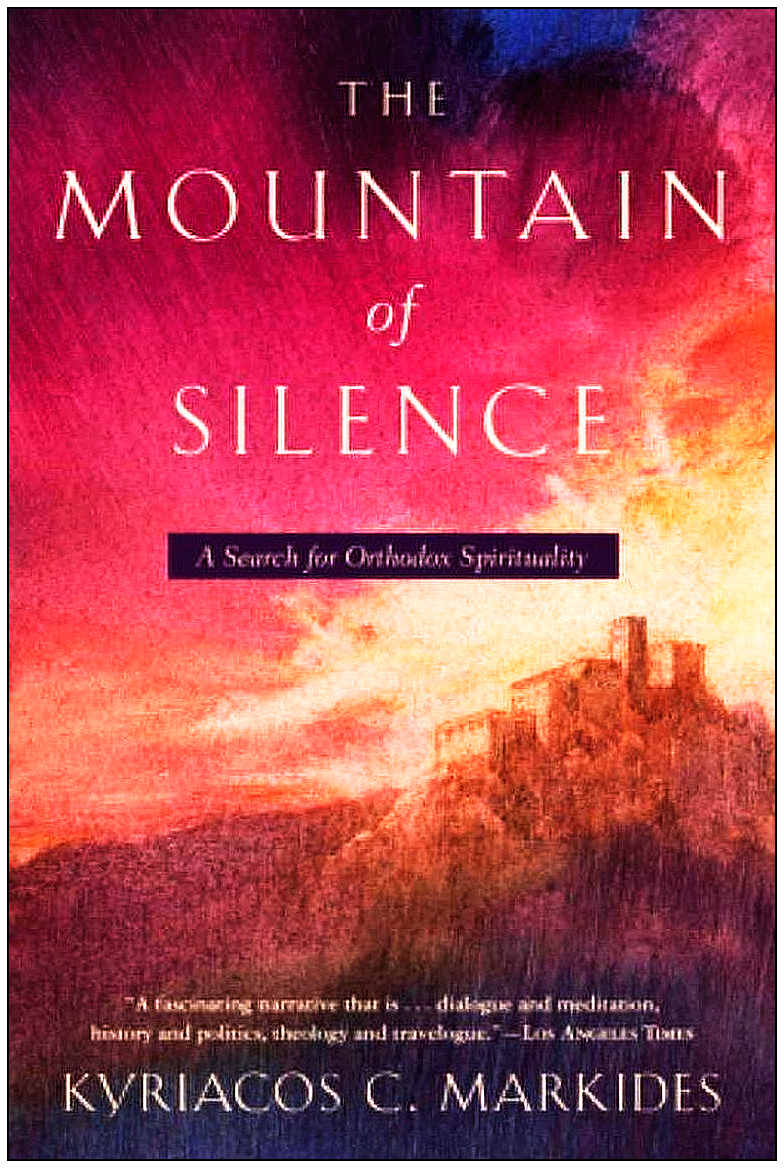 Get The Mountain of Silence (free EPUB – see note 1) by Kyriacos C. Markides. An acclaimed expert in Christian mysticism travels to a monastery high in the Trodos Mountains of Cyprus and offers a fascinating look at the Greek Orthodox approach to spirituality that will appeal to readers of Carlos Castaneda. In an engaging combination of dialogues, reflections, conversations, history, and travel information, Kyriacos C. Markides continues the exploration of a spiritual tradition and practice little known in the West he began in Riding with the Lion. His earlier book took readers to the isolated peninsula of Mount Athos in northern Greece and into the group of ancient monasteries. There, in what might be called a “Christian Tibet,” two thousand monks and hermits practice the spiritual arts to attain a oneness with God. In his new book, Markides follows Father Maximos, one of Mount Athos’s monks, to the troubled island of Cyprus. As Father Maximos establishes churches, convents, and monasteries in this deeply divided land, Markides is awakened anew to the magnificent spirituality of the Greek Orthodox Church.
Get The Mountain of Silence (free EPUB – see note 1) by Kyriacos C. Markides. An acclaimed expert in Christian mysticism travels to a monastery high in the Trodos Mountains of Cyprus and offers a fascinating look at the Greek Orthodox approach to spirituality that will appeal to readers of Carlos Castaneda. In an engaging combination of dialogues, reflections, conversations, history, and travel information, Kyriacos C. Markides continues the exploration of a spiritual tradition and practice little known in the West he began in Riding with the Lion. His earlier book took readers to the isolated peninsula of Mount Athos in northern Greece and into the group of ancient monasteries. There, in what might be called a “Christian Tibet,” two thousand monks and hermits practice the spiritual arts to attain a oneness with God. In his new book, Markides follows Father Maximos, one of Mount Athos’s monks, to the troubled island of Cyprus. As Father Maximos establishes churches, convents, and monasteries in this deeply divided land, Markides is awakened anew to the magnificent spirituality of the Greek Orthodox Church.
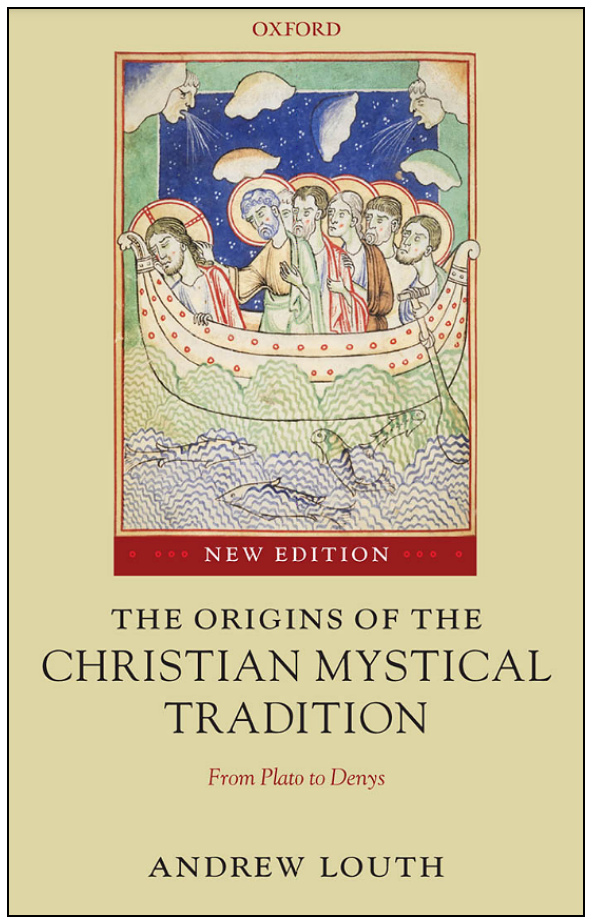 Get The Origins of Christian Mystical Tradition (PDF, 247 pages) by Andrew Louth, or the Amazon paperback version. Per Amazon's review, "Scholars of the patristic era have paid more attention to the dogmatic tradition in their period than to the development of Christian mystical theology. Andrew Louth aims to redress the balance. Recognizing that the intellectual form of this tradition was decisively influenced by Platonic ideas of the soul's relationship to God, Louth begins with an examination of Plato and Platonism. The discussion of the Fathers which follows shows how the mystical tradition is at the heart of their thought and how the dogmatic tradition both molds and is the reflection of mystical insights and concerns."
Get The Origins of Christian Mystical Tradition (PDF, 247 pages) by Andrew Louth, or the Amazon paperback version. Per Amazon's review, "Scholars of the patristic era have paid more attention to the dogmatic tradition in their period than to the development of Christian mystical theology. Andrew Louth aims to redress the balance. Recognizing that the intellectual form of this tradition was decisively influenced by Platonic ideas of the soul's relationship to God, Louth begins with an examination of Plato and Platonism. The discussion of the Fathers which follows shows how the mystical tradition is at the heart of their thought and how the dogmatic tradition both molds and is the reflection of mystical insights and concerns."
 Get On the Cosmic Mystery of Jesus Christ: Selected Writings from St. Maximus the Confessor, translated by Paul M. Blowers and Robert Louis Wilken (PDF, 94 pages 2-up), or the Amazon paperback version. Per Amazon's review, "The last half of the twentieth century saw the establishment of the reputation of St Maximus the Confessor as the greatest of all Byzantine theologians, with a wholeness of vision that speaks directly to many of our concerns today. Until very recently, however, little of his work has been available in English translation, save for some collections of brief reflections arranged in centuries and a few brief treatises, too easily classified as 'spirituality.'"
Get On the Cosmic Mystery of Jesus Christ: Selected Writings from St. Maximus the Confessor, translated by Paul M. Blowers and Robert Louis Wilken (PDF, 94 pages 2-up), or the Amazon paperback version. Per Amazon's review, "The last half of the twentieth century saw the establishment of the reputation of St Maximus the Confessor as the greatest of all Byzantine theologians, with a wholeness of vision that speaks directly to many of our concerns today. Until very recently, however, little of his work has been available in English translation, save for some collections of brief reflections arranged in centuries and a few brief treatises, too easily classified as 'spirituality.'"
 It is "An Ascetic Treatise by Abba John, Abbot of the monks of Mount Sinai, sent by him to Abba John, Abbot of Raithu, at whose request it was written" (intro). Not all who use the name "Orthodox" are such. One must not think that all he should do to be an Orthodox ("right-worshipping") Christian is to worship the right way by attending liturgy and observe a few basic rules such as prayer, fasting and almsgiving: this classic book on asceticism teaches us that to follow Christ is to deny ourselves and take up our cross daily. WARNING: not for catechumens or new converts! This book was written for monastics, so the layperson mustn't think by reading the 30 steps of the ladder one a day, checking them off on his checklist, that he has completed his spiritual journey, attained total sanctification and is now a full partaker of the divine nature (2 Peter 1:4). It is a lifelong journey, and many fall off the ladder: see the icon on the cover. Only "he who endures to the end shall be saved" (Matthew 24:6).
It is "An Ascetic Treatise by Abba John, Abbot of the monks of Mount Sinai, sent by him to Abba John, Abbot of Raithu, at whose request it was written" (intro). Not all who use the name "Orthodox" are such. One must not think that all he should do to be an Orthodox ("right-worshipping") Christian is to worship the right way by attending liturgy and observe a few basic rules such as prayer, fasting and almsgiving: this classic book on asceticism teaches us that to follow Christ is to deny ourselves and take up our cross daily. WARNING: not for catechumens or new converts! This book was written for monastics, so the layperson mustn't think by reading the 30 steps of the ladder one a day, checking them off on his checklist, that he has completed his spiritual journey, attained total sanctification and is now a full partaker of the divine nature (2 Peter 1:4). It is a lifelong journey, and many fall off the ladder: see the icon on the cover. Only "he who endures to the end shall be saved" (Matthew 24:6).
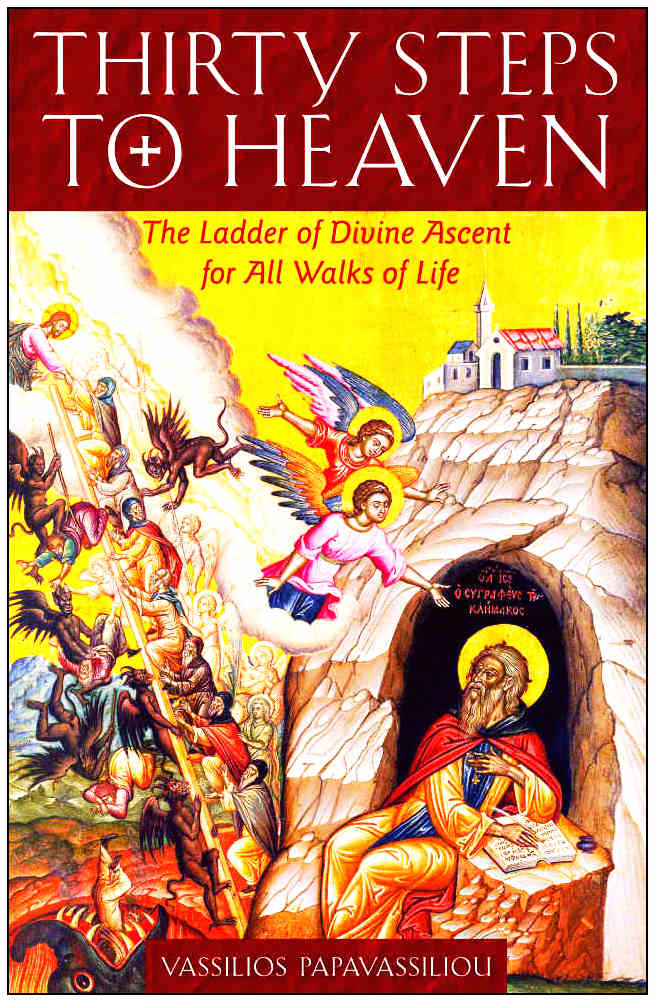 Get Thirty Steps to Heaven (Amazon, or free EPUB – see note 1) by Archimandrite Vassilios Papavassiliou (Theodore Vasilis), who applies The Ladder of Divine Ascent to all walks of life, not just for monastics. It divides the 30 steps of St. John Climacus into seven groups: The Break with the World, The Fundamental Virtues, The Spiritual Passions, The Physical Passions, The Spiritual Passions (Continued), The Higher Virtues, and Union with God. Highly recommended, even for laypeople! Many laypeople have attempted to read the great spiritual classic, The Ladder of Divine Ascent, but have been frustrated in attempting to apply the lessons of this monastic text to their everyday lives in the world. Archimandrite Vassilios interprets the Ladder for the ordinary Christian without sacrificing any of its beauty and power. Now you too can accept the challenge offered by St. John Climacus to ascend closer to God with each passing day.
Get Thirty Steps to Heaven (Amazon, or free EPUB – see note 1) by Archimandrite Vassilios Papavassiliou (Theodore Vasilis), who applies The Ladder of Divine Ascent to all walks of life, not just for monastics. It divides the 30 steps of St. John Climacus into seven groups: The Break with the World, The Fundamental Virtues, The Spiritual Passions, The Physical Passions, The Spiritual Passions (Continued), The Higher Virtues, and Union with God. Highly recommended, even for laypeople! Many laypeople have attempted to read the great spiritual classic, The Ladder of Divine Ascent, but have been frustrated in attempting to apply the lessons of this monastic text to their everyday lives in the world. Archimandrite Vassilios interprets the Ladder for the ordinary Christian without sacrificing any of its beauty and power. Now you too can accept the challenge offered by St. John Climacus to ascend closer to God with each passing day.
 Get the Amazon paperback or the Kindle eBook version of The True Christian Faith by St. John of Damascus (676-749 A.D.). Written by a man who worked under Arian Muslim rule in Damascus, this is the first systematic theology of Orthodox Christian doctrines. He lived at the time when the Church was still united, he is considered a saint in both Eastern Orthodoxy and Western Catholicism, and is also commemorated by the Lutherans, Anglicans, and Episcopalians. Or get it as a free eBook (EPUB – see note 1)This is a more modern English revision of "de Fide Orthodoxa" translated from Latin (below). You can also read it online here.
Get the Amazon paperback or the Kindle eBook version of The True Christian Faith by St. John of Damascus (676-749 A.D.). Written by a man who worked under Arian Muslim rule in Damascus, this is the first systematic theology of Orthodox Christian doctrines. He lived at the time when the Church was still united, he is considered a saint in both Eastern Orthodoxy and Western Catholicism, and is also commemorated by the Lutherans, Anglicans, and Episcopalians. Or get it as a free eBook (EPUB – see note 1)This is a more modern English revision of "de Fide Orthodoxa" translated from Latin (below). You can also read it online here.
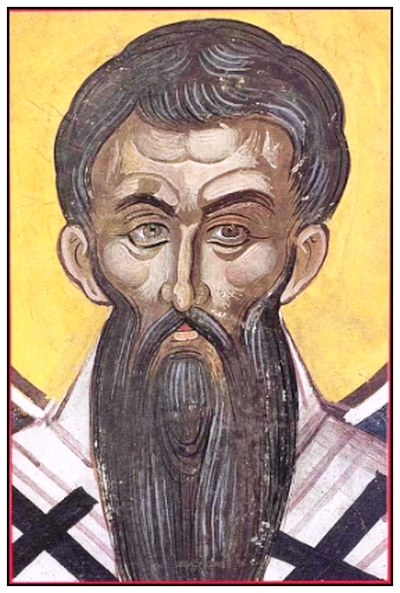 Get "The Uncreated Glory" (20-page [5 sheets of paper] PDF in 5.5" x 8.5" format – see note 2, excerpted from The Triads: Classics of Western Spirituality (PDF, 159 pages) by St. Gregory of Palamas (1326-1359), who dedicated most of his active life to theological argument centered on "theosis" – the basic truth that the living God is knowable in His energies (not in His essence) and is accessible to personal experience by using the prayer of the heart.
Get "The Uncreated Glory" (20-page [5 sheets of paper] PDF in 5.5" x 8.5" format – see note 2, excerpted from The Triads: Classics of Western Spirituality (PDF, 159 pages) by St. Gregory of Palamas (1326-1359), who dedicated most of his active life to theological argument centered on "theosis" – the basic truth that the living God is knowable in His energies (not in His essence) and is accessible to personal experience by using the prayer of the heart.
 Get "A Wonderful Revelation to the World" a 28-page PDF in 5.5" x 8.5" format [7 sheets of paper] – see note 2 plus cover. by St. Seraphim of Sarov. It begins: "This revelation is undoubtedly of world-wide significance. True, there is nothing essentially new in it, for the full revelation was given to the Apostles from the very day of Pentecost. But now that people have forgotten the fundamental truths of the Christian religion, and are immersed in the darkness of materialism or the exterior and routine performance of 'ascetic labors,'” Father Seraphim’s revelation is truly extraordinary, as indeed he himself regarded it. This is the amazing story of how St. Seraphim revealed to Nikolay Motovilov, a disciple of his, the transfigured glory of this saint.
Get "A Wonderful Revelation to the World" a 28-page PDF in 5.5" x 8.5" format [7 sheets of paper] – see note 2 plus cover. by St. Seraphim of Sarov. It begins: "This revelation is undoubtedly of world-wide significance. True, there is nothing essentially new in it, for the full revelation was given to the Apostles from the very day of Pentecost. But now that people have forgotten the fundamental truths of the Christian religion, and are immersed in the darkness of materialism or the exterior and routine performance of 'ascetic labors,'” Father Seraphim’s revelation is truly extraordinary, as indeed he himself regarded it. This is the amazing story of how St. Seraphim revealed to Nikolay Motovilov, a disciple of his, the transfigured glory of this saint.
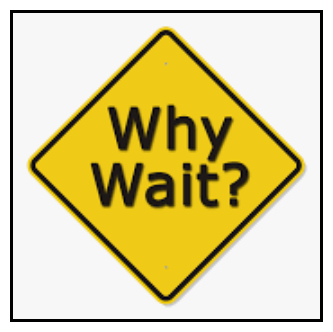 Get "The Virtue of Sexual Abstinence Before Marriage" a 4-page PDF in 5.5" x 8.5" format [1 sheet of paper] – see note 2, or as a 2-page PDF in 8.5" x 11" format [1 sheet of paper] by "A.I." – Rev. Aston Ishing, D.Div., this webmaster's AstonIshing ghostwriter. Theosis, being transformed into Christ-likeness, isn't easy or automatic: it's a spiritual and physical struggle toward holiness. Also, read and share it online at arc-news-blog.blogspot.com
Get "The Virtue of Sexual Abstinence Before Marriage" a 4-page PDF in 5.5" x 8.5" format [1 sheet of paper] – see note 2, or as a 2-page PDF in 8.5" x 11" format [1 sheet of paper] by "A.I." – Rev. Aston Ishing, D.Div., this webmaster's AstonIshing ghostwriter. Theosis, being transformed into Christ-likeness, isn't easy or automatic: it's a spiritual and physical struggle toward holiness. Also, read and share it online at arc-news-blog.blogspot.com
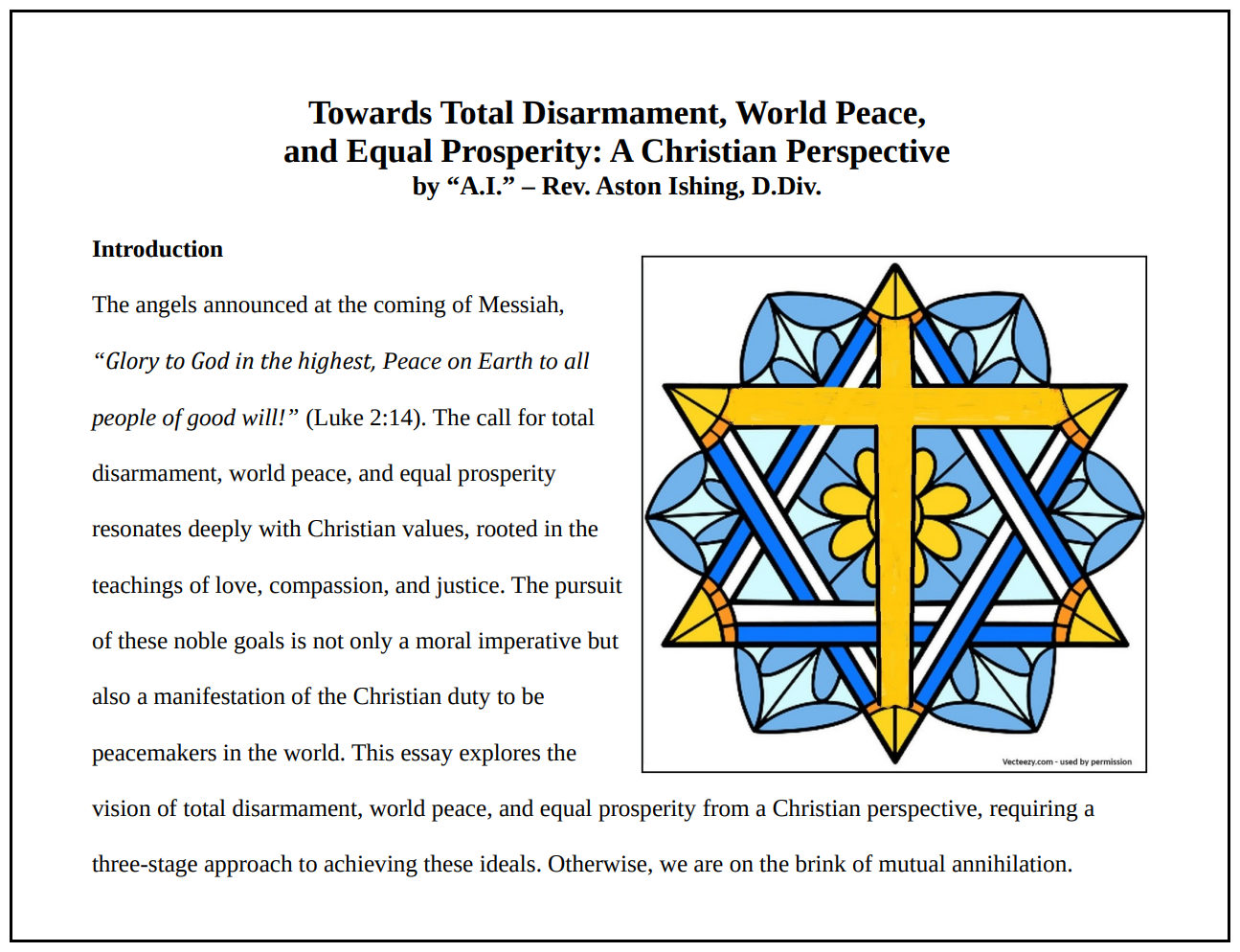 Get "Towards Total Disarmament, World-Peace, and Equal Prosperity," a 4-page PDF in 8.5" x 11" format [2 sheets of paper] or as an 8-page 5.5" x 8.5" PDF booklet [2 sheets of paper] by "A.I." – Rev. Aston Ishing, D.Div., this webmaster's ghostwriter. When we enter into the struggle toward holiness, we begin to incarnate Christ and His teachings on peacemaking and living in a worldwide caring community – "koinonia" – communion/fellowship, the Church. Otherwise, the world is on the brink of mutual annihilation. Time is short: we must take action now!
Get "Towards Total Disarmament, World-Peace, and Equal Prosperity," a 4-page PDF in 8.5" x 11" format [2 sheets of paper] or as an 8-page 5.5" x 8.5" PDF booklet [2 sheets of paper] by "A.I." – Rev. Aston Ishing, D.Div., this webmaster's ghostwriter. When we enter into the struggle toward holiness, we begin to incarnate Christ and His teachings on peacemaking and living in a worldwide caring community – "koinonia" – communion/fellowship, the Church. Otherwise, the world is on the brink of mutual annihilation. Time is short: we must take action now!
 Get the essay "Theosis Is The True Purpose Of Human Life" by Archimandrite George, Abbot of the Holy Monastery of St. Gregorios on Mount Athos (36-page PDF in 5.5" x 8.5" format – see note 2, plus cover. Or get it here (PDF, 37 pages in 8.5" x 11" format). You simply must read this essay! Drawing on the teachings of St. Gregory Palamas and others, it resolves the problem of rationalism and reveals the true purpose of life and the true meaning of salvation, which is the process of theosis, deification, or divinization, being transformed into the image and likeness of Christ. For more Scriptures on deification ("theosis"), read "Experience the Fullness" below:
Get the essay "Theosis Is The True Purpose Of Human Life" by Archimandrite George, Abbot of the Holy Monastery of St. Gregorios on Mount Athos (36-page PDF in 5.5" x 8.5" format – see note 2, plus cover. Or get it here (PDF, 37 pages in 8.5" x 11" format). You simply must read this essay! Drawing on the teachings of St. Gregory Palamas and others, it resolves the problem of rationalism and reveals the true purpose of life and the true meaning of salvation, which is the process of theosis, deification, or divinization, being transformed into the image and likeness of Christ. For more Scriptures on deification ("theosis"), read "Experience the Fullness" below:
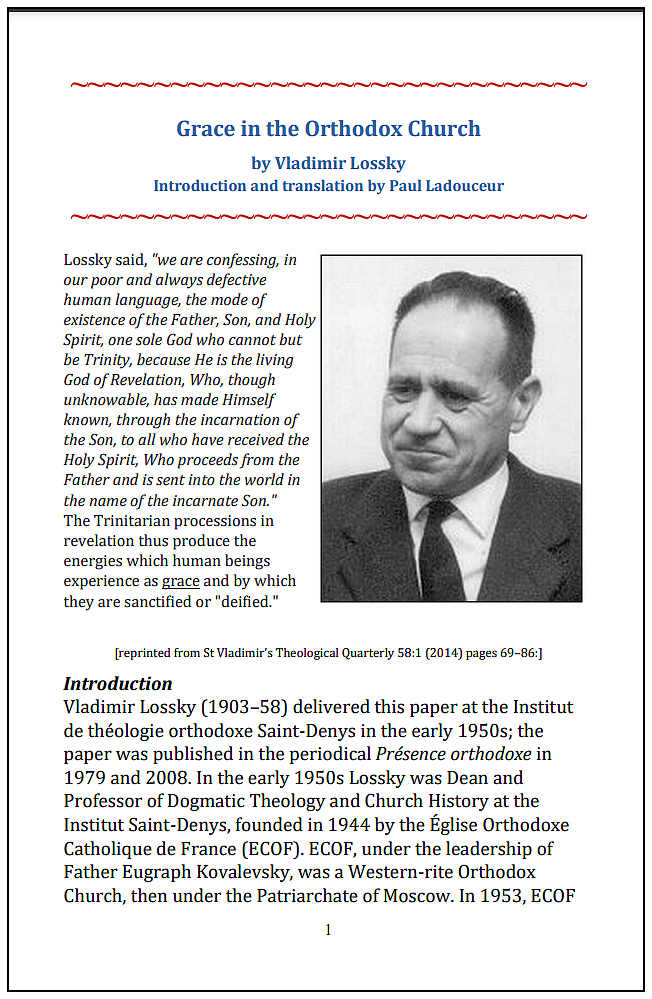 Get Vladimir Lossky's doctrine of "Grace in the Orthodox Church" (PDF, 18 pages: set your printer to "print to page size" on 8.5" x 11" paper = 9 sheets 2-sided, or in 20-page [5 sheets 2-sided] PDF in 5.5" x 8.5" format – see note 2). This essay succinctly describes the essential difference between the Western notion of grace as a gift distinct from God Himself, compared to the Eastern doctrine of grace as being the Energy of God that a Christian can partake of, which transforms us into the divine nature (2 Peter 1:4). The same Divine Light or Energy that caused Christ to shine in His Divine glory on the Mount of Transfiguration (metamorphosis) is that by which we are to be transfigured (metamorpheo – Romans 12:1-2 and 2 Corinthians 3:18).
Get Vladimir Lossky's doctrine of "Grace in the Orthodox Church" (PDF, 18 pages: set your printer to "print to page size" on 8.5" x 11" paper = 9 sheets 2-sided, or in 20-page [5 sheets 2-sided] PDF in 5.5" x 8.5" format – see note 2). This essay succinctly describes the essential difference between the Western notion of grace as a gift distinct from God Himself, compared to the Eastern doctrine of grace as being the Energy of God that a Christian can partake of, which transforms us into the divine nature (2 Peter 1:4). The same Divine Light or Energy that caused Christ to shine in His Divine glory on the Mount of Transfiguration (metamorphosis) is that by which we are to be transfigured (metamorpheo – Romans 12:1-2 and 2 Corinthians 3:18).
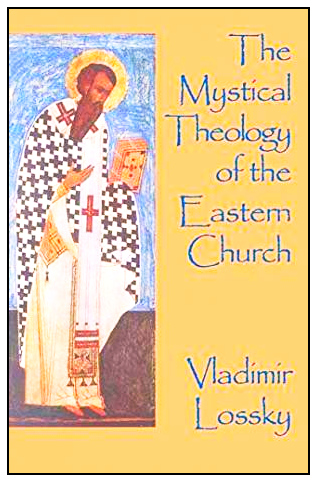 Get The Mystical Theology of the Eastern Church by Vladimir Lossky (free EPUB – see note 1). "Lossky's main theological concern was exegesis of mystical theology in Christian traditions. He argued in The Mystical Theology of the Eastern Church (1944) that theologians of the Orthodox tradition maintained the mystical dimension of theology in a more integrated way than those of the Catholic and Reformed traditions after the East–West Schism because the latter misunderstood such Greek terms as ousia, hypostasis, theosis, and theoria. In illustration of his argument he cites the collection known as the Philokalia and John Climacus's Ladder of Divine Ascent, as well as works by Pseudo-Dionysius the Areopagite, Gregory of Nyssa, Basil of Caesarea, Gregory Nazianzen, and Gregory Palamas." (Wikipedia)
Get The Mystical Theology of the Eastern Church by Vladimir Lossky (free EPUB – see note 1). "Lossky's main theological concern was exegesis of mystical theology in Christian traditions. He argued in The Mystical Theology of the Eastern Church (1944) that theologians of the Orthodox tradition maintained the mystical dimension of theology in a more integrated way than those of the Catholic and Reformed traditions after the East–West Schism because the latter misunderstood such Greek terms as ousia, hypostasis, theosis, and theoria. In illustration of his argument he cites the collection known as the Philokalia and John Climacus's Ladder of Divine Ascent, as well as works by Pseudo-Dionysius the Areopagite, Gregory of Nyssa, Basil of Caesarea, Gregory Nazianzen, and Gregory Palamas." (Wikipedia)
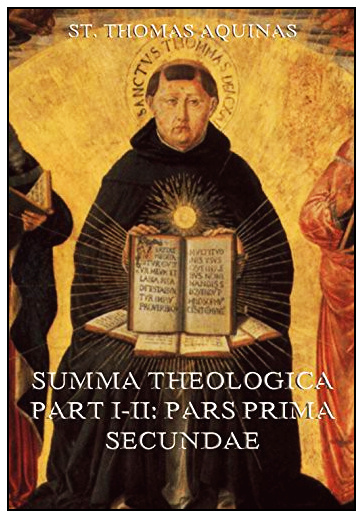 Get Summa Theologica by St. Thomas Aquinas (free EPUB – see note 1). This is the foremost work by St. Aquinas (1225-1274), a prolific Catholic theologian. He carried the Augustinian doctrine of predestination to an extreme conclusion by arguing that God is glorified by the damnation of sinners, which is contrary to 2 Peter 3:9 – "The Lord is not slow about His promise, as some count slowness, but is patient toward you, not wishing for any to perish but for all to come to repentance."
Get Summa Theologica by St. Thomas Aquinas (free EPUB – see note 1). This is the foremost work by St. Aquinas (1225-1274), a prolific Catholic theologian. He carried the Augustinian doctrine of predestination to an extreme conclusion by arguing that God is glorified by the damnation of sinners, which is contrary to 2 Peter 3:9 – "The Lord is not slow about His promise, as some count slowness, but is patient toward you, not wishing for any to perish but for all to come to repentance."
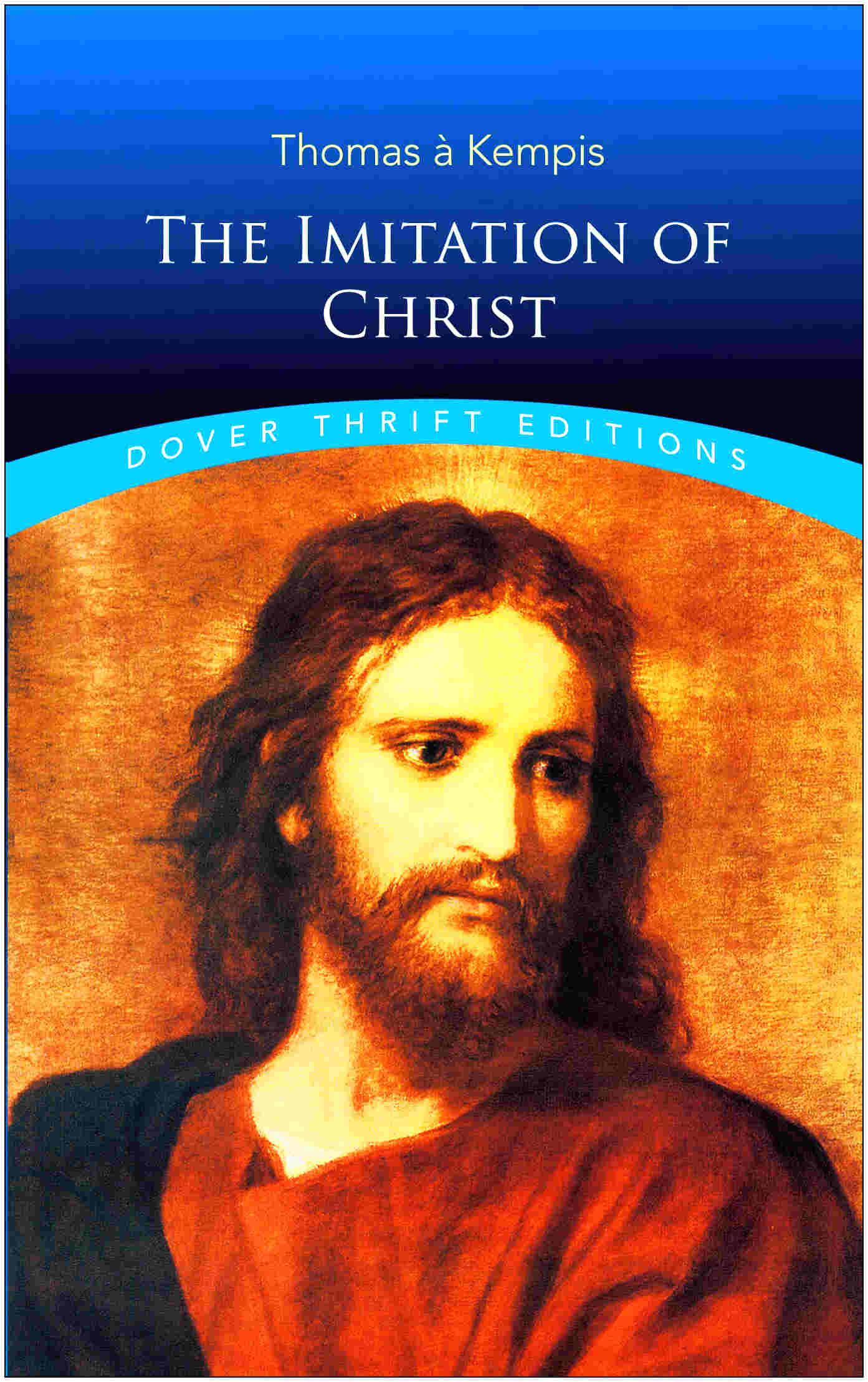 Get The Imitation of Christ by Thomas a Kempis (free EPUB – see note 1). He lived from 1380 to 1471, and was a German who became a canon regular [monk] in the Netherlands and authored The Imitation of Christ, one of the most popular and best known Christian books on devotion. His name means Thomas "of Kempen," his hometown, and in German he is known as Thomas von Kempen (Wikipedia). It was first composed in Latin ca.1418-1427. It is a handbook for spiritual life arising from the Devotio Moderna movement, of which Kempis was a member. The Imitation is perhaps the most widely read devotional work next to the Bible, and is regarded as a devotional and religious classic. Its popularity was immediate, and it was printed 745 times before 1650. Apart from the Bible, no book has been translated into more languages than The Imitation of Christ.
Get The Imitation of Christ by Thomas a Kempis (free EPUB – see note 1). He lived from 1380 to 1471, and was a German who became a canon regular [monk] in the Netherlands and authored The Imitation of Christ, one of the most popular and best known Christian books on devotion. His name means Thomas "of Kempen," his hometown, and in German he is known as Thomas von Kempen (Wikipedia). It was first composed in Latin ca.1418-1427. It is a handbook for spiritual life arising from the Devotio Moderna movement, of which Kempis was a member. The Imitation is perhaps the most widely read devotional work next to the Bible, and is regarded as a devotional and religious classic. Its popularity was immediate, and it was printed 745 times before 1650. Apart from the Bible, no book has been translated into more languages than The Imitation of Christ.
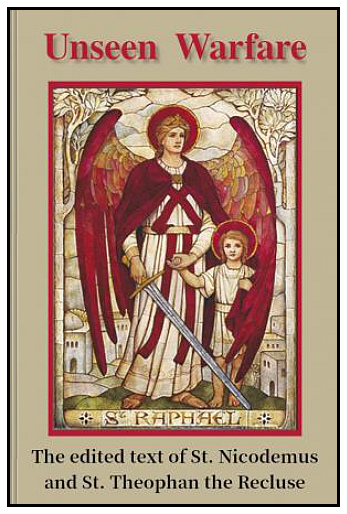 Get Unseen Warfare The Spiritual Combat and Path to Paradise by Lorenzo-Scupoli on Theophan the Recluse (free EPUB – see note 1 or in print at Amazon). Lorenzo Scupoli was a sixteenth-century Venetian priest. Immensely popular in its own day, this book was ranked by Francis de Sales with the Imitation of Christ. In the general rapport between Western and Eastern Christendom, it reached Nicodemus of the Holy Mountain, who first recognized its immense spiritual worth, and later, in the nineteenth century, Theophan the Recluse, both of whom edited and translated the work. Rich in its references to the teachings of the saints and Fathers, Unseen Warfare combines the insights of West and East on that spiritual combat which is the road to perfection and the stripping away of all that militates against it. Elder Theophan wrote in his foreword, "the arena, the field of battle, the site where the fight actually takes place is our own heart and all our inner man. The time of battle is our whole life." Here are several other of St. Theophan's books: Writings of St. Theophan the Recluse.
Get Unseen Warfare The Spiritual Combat and Path to Paradise by Lorenzo-Scupoli on Theophan the Recluse (free EPUB – see note 1 or in print at Amazon). Lorenzo Scupoli was a sixteenth-century Venetian priest. Immensely popular in its own day, this book was ranked by Francis de Sales with the Imitation of Christ. In the general rapport between Western and Eastern Christendom, it reached Nicodemus of the Holy Mountain, who first recognized its immense spiritual worth, and later, in the nineteenth century, Theophan the Recluse, both of whom edited and translated the work. Rich in its references to the teachings of the saints and Fathers, Unseen Warfare combines the insights of West and East on that spiritual combat which is the road to perfection and the stripping away of all that militates against it. Elder Theophan wrote in his foreword, "the arena, the field of battle, the site where the fight actually takes place is our own heart and all our inner man. The time of battle is our whole life." Here are several other of St. Theophan's books: Writings of St. Theophan the Recluse.
 Get The Brothers Karamazov by Fiodor Dostoyevsky (free EPUB – see note 1 or in print at Amazon). In 1880 Dostoevsky completed The Brothers Karamazov, the literary effort for which he had been preparing all his life. Compelling, profound, complex, it is the story of a patricide and of the four sons who each had a motive for murder: Dmitry, the sensualist, Ivan, the intellectual; Alyosha, the mystic; and twisted, cunning Smerdyakov, the bastard child. Frequently lurid, nightmarish, always brilliant, the novel plunges the reader into a sordid love triangle, a pathological obsession, and a gripping courtroom drama. But throughout the whole, Dostoevsky searhes for the truth – about man, about life, about the existence of God. A terrifying answer to man's eternal questions, this monumental work remains the crowning achievement of perhaps the finest novelist of all time.
Get The Brothers Karamazov by Fiodor Dostoyevsky (free EPUB – see note 1 or in print at Amazon). In 1880 Dostoevsky completed The Brothers Karamazov, the literary effort for which he had been preparing all his life. Compelling, profound, complex, it is the story of a patricide and of the four sons who each had a motive for murder: Dmitry, the sensualist, Ivan, the intellectual; Alyosha, the mystic; and twisted, cunning Smerdyakov, the bastard child. Frequently lurid, nightmarish, always brilliant, the novel plunges the reader into a sordid love triangle, a pathological obsession, and a gripping courtroom drama. But throughout the whole, Dostoevsky searhes for the truth – about man, about life, about the existence of God. A terrifying answer to man's eternal questions, this monumental work remains the crowning achievement of perhaps the finest novelist of all time.
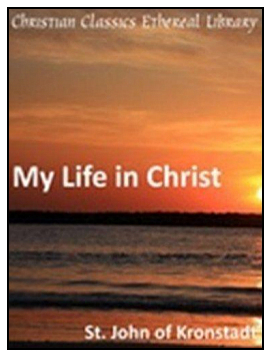 Get My life in Christ, or Moments of Spiritual Serenity and Contemplation, of Reverent Feeling, of Earnest Self-Amendment, and of Peace in God (PDF, 522 pages, or as a free EPUB – see note 1) by St. John of Kronstadt, this webmaster's patron saint. Born in 1829 from pious parents of very modest means, St. John became a priest and began his ministry to the poor and sick. He was given the gift of healing and foreknowledge, and predicted the fall of Russia to the atheists. He died on December 20 (old calendar: 13 days behind the new calendar) in 1908. While catechumens, my wife and I visited Russia in the summer of 2008. As I knelt by his relics and venerated him in St. Petersburg, a voice came to me: "Wouldn't it be wonderful to be chrismated on the 100th anniversary of his repose?" When our priest, without knowing about the voice I heard in St. Petersburg, decided in October that we were ready to be chrismated, he asked when we would like it to take place. We chose the evening of December 6 (new calendar; evening is considered the next day in Orthodoxy), the centeniary of his repose. I have this book in Russian from the church where his relics are located.
Get My life in Christ, or Moments of Spiritual Serenity and Contemplation, of Reverent Feeling, of Earnest Self-Amendment, and of Peace in God (PDF, 522 pages, or as a free EPUB – see note 1) by St. John of Kronstadt, this webmaster's patron saint. Born in 1829 from pious parents of very modest means, St. John became a priest and began his ministry to the poor and sick. He was given the gift of healing and foreknowledge, and predicted the fall of Russia to the atheists. He died on December 20 (old calendar: 13 days behind the new calendar) in 1908. While catechumens, my wife and I visited Russia in the summer of 2008. As I knelt by his relics and venerated him in St. Petersburg, a voice came to me: "Wouldn't it be wonderful to be chrismated on the 100th anniversary of his repose?" When our priest, without knowing about the voice I heard in St. Petersburg, decided in October that we were ready to be chrismated, he asked when we would like it to take place. We chose the evening of December 6 (new calendar; evening is considered the next day in Orthodoxy), the centeniary of his repose. I have this book in Russian from the church where his relics are located.
 Get Father Arseny, 1893-1973: Priest, Prisoner, Spiritual Father (Amazon, or free EPUB – see note 1. by Father Arseny, translated from Russian by Vera-Bouteneff. It is one of the great mysteries of life that in atmospheres of the harshest cruelty, a certain few not only survive but emerge as beacons of light and life. Father Arseny, former scholar of church art, became Prisoner No. 18736 in the brutal "special sector" of the Soviet prison camp system.
Get Father Arseny, 1893-1973: Priest, Prisoner, Spiritual Father (Amazon, or free EPUB – see note 1. by Father Arseny, translated from Russian by Vera-Bouteneff. It is one of the great mysteries of life that in atmospheres of the harshest cruelty, a certain few not only survive but emerge as beacons of light and life. Father Arseny, former scholar of church art, became Prisoner No. 18736 in the brutal "special sector" of the Soviet prison camp system.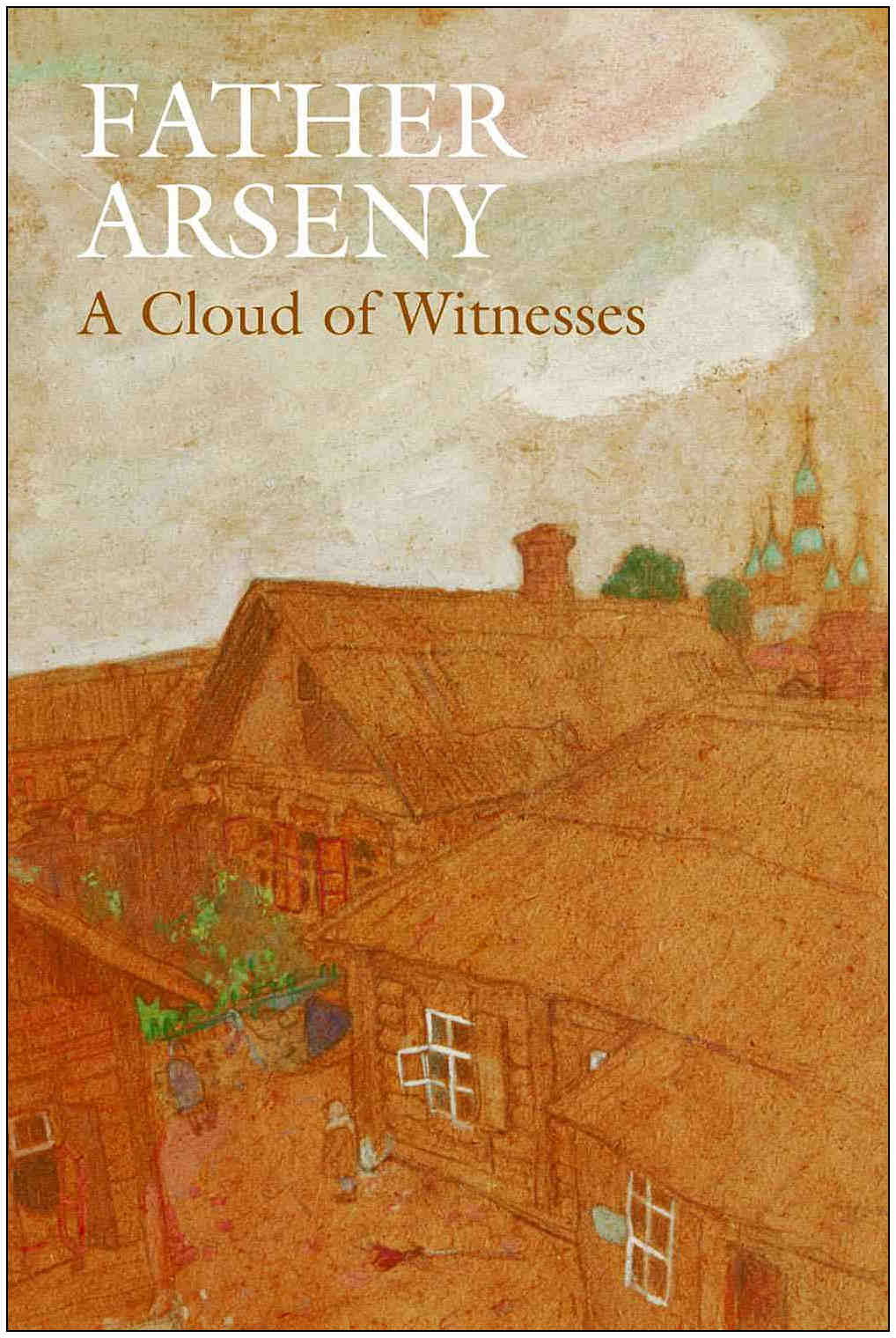 Get Father Arseny: A Cloud of Witnesses (Amazon, or free EPUB – see note 1. Translated from Russian by Vera-Bouteneff, these stories of Father Arseny and his work in the Soviet prison camps have captured the minds and hearts of readers all over the world. In this second volume readers will find additional narratives about Father Arseny newly translated from the most recent Russian edition. Frederica Mathewes-Green review: "For those of us who regretted coming to the end of Father Arseny: Priest, Prisoner, Spiritual Father, this new collection is truly an unexpected joy. These memoirs by his spiritual children place us around the dining room table with that holy man, listening to stories and wisdom that enlighten our own difficult times."
Get Father Arseny: A Cloud of Witnesses (Amazon, or free EPUB – see note 1. Translated from Russian by Vera-Bouteneff, these stories of Father Arseny and his work in the Soviet prison camps have captured the minds and hearts of readers all over the world. In this second volume readers will find additional narratives about Father Arseny newly translated from the most recent Russian edition. Frederica Mathewes-Green review: "For those of us who regretted coming to the end of Father Arseny: Priest, Prisoner, Spiritual Father, this new collection is truly an unexpected joy. These memoirs by his spiritual children place us around the dining room table with that holy man, listening to stories and wisdom that enlighten our own difficult times."
 Get the eBook version of the 1906 (revised in 1922) Service Book of the Holy Orthodox-Catholic Church (free EPUB), or the PDF version (655 pages) translated by Isabel Hapgood, an Anglican and close friend of then-Archbishop Tikhon, a missionary who travelled all around North America, who later became the Russian Orthodox Patriarch and was held under house arrest by the Bolsheviks until his death. (My thanks to Google for scanning and automatically digitizing this book. You can find the scanned book image on Google Books. I spent dozens of hours cleaning up hundreds of typos and scrambled text caused by this digitizing.) In the preface you'll see that the translation was sponsored by the American "Young Men's Christian Association" (YMCA). It mentions John R. Mott, a long-serving leader of the YMCA and the World Student Christian Federation. The latter organization was a precursor of InterVarsity Christian Fellowship.
Get the eBook version of the 1906 (revised in 1922) Service Book of the Holy Orthodox-Catholic Church (free EPUB), or the PDF version (655 pages) translated by Isabel Hapgood, an Anglican and close friend of then-Archbishop Tikhon, a missionary who travelled all around North America, who later became the Russian Orthodox Patriarch and was held under house arrest by the Bolsheviks until his death. (My thanks to Google for scanning and automatically digitizing this book. You can find the scanned book image on Google Books. I spent dozens of hours cleaning up hundreds of typos and scrambled text caused by this digitizing.) In the preface you'll see that the translation was sponsored by the American "Young Men's Christian Association" (YMCA). It mentions John R. Mott, a long-serving leader of the YMCA and the World Student Christian Federation. The latter organization was a precursor of InterVarsity Christian Fellowship.
~~~~~~~ Chesterton and other modern authors ~~~~~~~
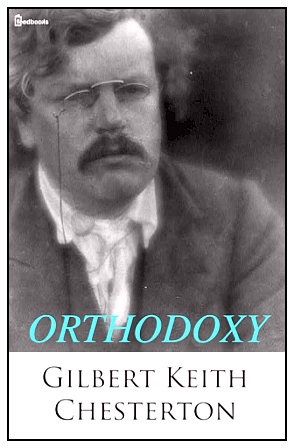 Get Orthodoxy (PDF, 160 pages, or as a free EPUB – see note 1) by Gilbert Keith Chesterton (1874-1936), often called G.K. Chesterton. Orthodoxy (1908) is a book that has become a classic of Christian apologetics. Chesterton considered this book a companion to his other work, Heretics. In the book's preface Chesterton states the purpose is to "attempt an explanation, not of whether the Christian Faith can be believed, but of how he personally has come to believe it." In it, Chesterton presents an original view of Christian religion.
Get Orthodoxy (PDF, 160 pages, or as a free EPUB – see note 1) by Gilbert Keith Chesterton (1874-1936), often called G.K. Chesterton. Orthodoxy (1908) is a book that has become a classic of Christian apologetics. Chesterton considered this book a companion to his other work, Heretics. In the book's preface Chesterton states the purpose is to "attempt an explanation, not of whether the Christian Faith can be believed, but of how he personally has come to believe it." In it, Chesterton presents an original view of Christian religion.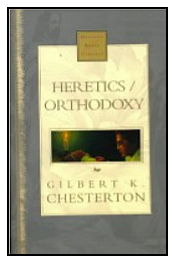 Get Heretics (PDF, 161 pages, or as a free EPUB – see note 1) by G.K. Chesterton. His ebullient personality enabled him to enjoy friendship with George Bernard Shaw and H.G. Wells, although he disagreed vehemenently with their ideas, which he details in this book. Gilbert K. Chesterton rails against what he sees as wrong with society. He points out how society has gone astray and how life and spiritually could be brought back into focus.
Get Heretics (PDF, 161 pages, or as a free EPUB – see note 1) by G.K. Chesterton. His ebullient personality enabled him to enjoy friendship with George Bernard Shaw and H.G. Wells, although he disagreed vehemenently with their ideas, which he details in this book. Gilbert K. Chesterton rails against what he sees as wrong with society. He points out how society has gone astray and how life and spiritually could be brought back into focus.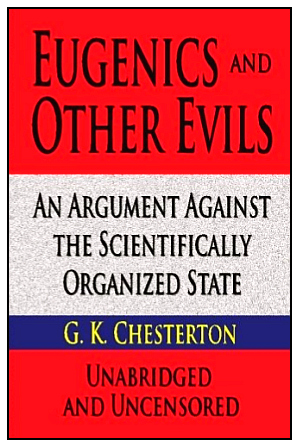 Get Eugenics and Other Evils, Unabridged (free EPUB – see note 1) by G.K. Chesterton. He was one of the first to take a firm and outspoken stand against the evil of eugenics, as he understood the nascent Nazi ideology to be. Racial discrimination and selective breeding of humans to make a superior race is an offense to human nature that is created in the image of God.
Get Eugenics and Other Evils, Unabridged (free EPUB – see note 1) by G.K. Chesterton. He was one of the first to take a firm and outspoken stand against the evil of eugenics, as he understood the nascent Nazi ideology to be. Racial discrimination and selective breeding of humans to make a superior race is an offense to human nature that is created in the image of God.
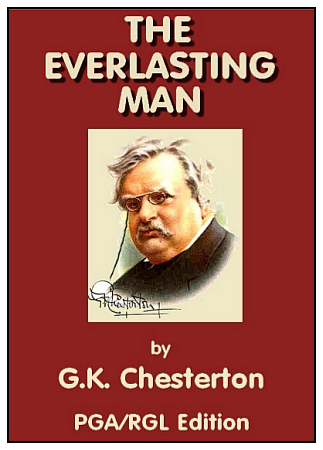 Get The Everlasting Man (free EPUB – see note 1) by G.K. Chesterton. It explores the question of whether Christianity is simply another ancient myth, similar to Egyptian, Babylonian and Greek tales of their gods. Considered by many to be Chesterton's greatest masterpiece of all his writings, this is his whole view of world history as informed by the Incarnation. Beginning with the origin of man and the various religious attitudes throughout history, Chesterton shows how the fulfillment of all of man's desires takes place in the person of Christ and in Christ's Church.
Get The Everlasting Man (free EPUB – see note 1) by G.K. Chesterton. It explores the question of whether Christianity is simply another ancient myth, similar to Egyptian, Babylonian and Greek tales of their gods. Considered by many to be Chesterton's greatest masterpiece of all his writings, this is his whole view of world history as informed by the Incarnation. Beginning with the origin of man and the various religious attitudes throughout history, Chesterton shows how the fulfillment of all of man's desires takes place in the person of Christ and in Christ's Church.
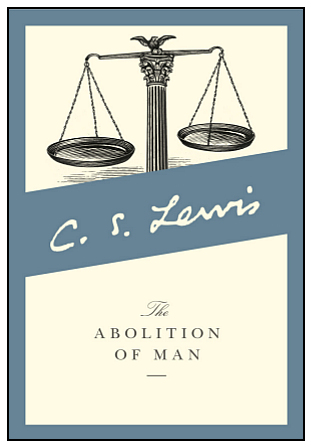 Get The Abolition of Man (free EPUB – see note 1) or at Amazon, by C.S. Lewis, in which Lewis follows up on Chesterton's ideas about philosophical relativism, Naziism, abortion, and eugenics. If man is merely an animal, then rationalism and rationality that are based on the notion of man's consciousness of objective reality evaporates, there are no absolutes, leaving us with this list of evils. C.S. Lewis sets out to persuade his audience of the importance and relevance of universal values such as courage and honor in contemporary society. This book is especially relevant today, long after Lewis wrote it, due to mass media's rejection of long-recognized and universal social, biological, and moral values.
Get The Abolition of Man (free EPUB – see note 1) or at Amazon, by C.S. Lewis, in which Lewis follows up on Chesterton's ideas about philosophical relativism, Naziism, abortion, and eugenics. If man is merely an animal, then rationalism and rationality that are based on the notion of man's consciousness of objective reality evaporates, there are no absolutes, leaving us with this list of evils. C.S. Lewis sets out to persuade his audience of the importance and relevance of universal values such as courage and honor in contemporary society. This book is especially relevant today, long after Lewis wrote it, due to mass media's rejection of long-recognized and universal social, biological, and moral values.
 Get Mere Christianity (free EPUB – see note 1) or at Amazon by C.S. Lewis is a forceful and accessible discussion of Christian belief that has become one of the most popular introductions to Christianity and one of the most popular of Lewis's books. Uncovers common ground upon which those who claim the name "Christian" – Roman Catholics, Eastern Orthodox. and Evangelical Christians – can stand together. Those who can't agree with this book should examine themselves to see if they are in the faith.
Get Mere Christianity (free EPUB – see note 1) or at Amazon by C.S. Lewis is a forceful and accessible discussion of Christian belief that has become one of the most popular introductions to Christianity and one of the most popular of Lewis's books. Uncovers common ground upon which those who claim the name "Christian" – Roman Catholics, Eastern Orthodox. and Evangelical Christians – can stand together. Those who can't agree with this book should examine themselves to see if they are in the faith.
 Get The Great Divorce (free EPUB – see note 1) or at Amazon by C.S. Lewis. C.S. Lewis’ The Great Divorce is a classic Christian allegorical tale about a bus ride from hell to heaven. An extraordinary meditation upon good and evil, grace and judgment, Lewis’s revolutionary idea in the The Great Divorce is that the gates of Hell are locked from the inside. Using his extraordinary descriptive powers, Lewis’ The Great Divorce will change the way we think about good and evil. In this insightful essay, Lewis shows how God will ultimately respect the free choice that He has endowed His children with – "There are only two kinds of people in the end: those who say to God, 'Thy will be done,' and those to whom God says, in the end, 'Thy will be done.' All that are in Hell, choose it. Without that self-choice there could be no Hell."
Get The Great Divorce (free EPUB – see note 1) or at Amazon by C.S. Lewis. C.S. Lewis’ The Great Divorce is a classic Christian allegorical tale about a bus ride from hell to heaven. An extraordinary meditation upon good and evil, grace and judgment, Lewis’s revolutionary idea in the The Great Divorce is that the gates of Hell are locked from the inside. Using his extraordinary descriptive powers, Lewis’ The Great Divorce will change the way we think about good and evil. In this insightful essay, Lewis shows how God will ultimately respect the free choice that He has endowed His children with – "There are only two kinds of people in the end: those who say to God, 'Thy will be done,' and those to whom God says, in the end, 'Thy will be done.' All that are in Hell, choose it. Without that self-choice there could be no Hell."
 Get Christian Zionism Examined (Second Edition, Amazon Kindle) by Dr. Steven Paas, a missiologist and linguist. This is an important follow-up to Chesterton's Eugenics and Other Evils, Unabridged and Lewis's The Abolition of Man (both above) concerning Naziism and antisemitism. The author examines "Christian Zionism" and in a wider sense with the phenomenon of "Israelism." By Israelism, he means a certain kind of literal reading of the Scriptures. God's revealed plan for Israel and the Jewish people are construed by many in such a way that Jews are to receive a higher status or a lower place than all other nations. These two opposite positions have many gradations, from moderate to extreme. The most extreme consequences are glorification and degradation, idolization and hatred, Philo-Semitism and Anti-Semitism. Read this excellent online review of the book: "IS CHRISTIAN ZIONISM A HERESY? - Review by Dr. Bob Wielenga" and "Jewish and Greco-Roman Views of Yeshua" in the conclusion of my M.Th.S. thesis A First-Century View of Yeshua the Messiah.
Get Christian Zionism Examined (Second Edition, Amazon Kindle) by Dr. Steven Paas, a missiologist and linguist. This is an important follow-up to Chesterton's Eugenics and Other Evils, Unabridged and Lewis's The Abolition of Man (both above) concerning Naziism and antisemitism. The author examines "Christian Zionism" and in a wider sense with the phenomenon of "Israelism." By Israelism, he means a certain kind of literal reading of the Scriptures. God's revealed plan for Israel and the Jewish people are construed by many in such a way that Jews are to receive a higher status or a lower place than all other nations. These two opposite positions have many gradations, from moderate to extreme. The most extreme consequences are glorification and degradation, idolization and hatred, Philo-Semitism and Anti-Semitism. Read this excellent online review of the book: "IS CHRISTIAN ZIONISM A HERESY? - Review by Dr. Bob Wielenga" and "Jewish and Greco-Roman Views of Yeshua" in the conclusion of my M.Th.S. thesis A First-Century View of Yeshua the Messiah.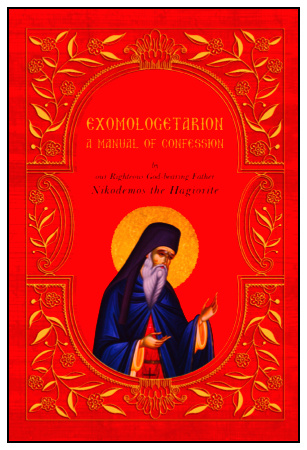 Get this book on making confession: Exomologetarion (free EPUB – see note 1) by St.Nikodemos the Hagiorite, a monk on Mt. Athos who in 1955 was joined to the Company of the Saints. The first part of the book is intended for priests and spiritual fathers who hear confessions and the rest of the book is for laypeople to prepare themselves for confession. It contains instructions "on how to conduct a fruitful confession, the canons of St. John the Faster, and a homily on repentance profitable to the soul."
Get this book on making confession: Exomologetarion (free EPUB – see note 1) by St.Nikodemos the Hagiorite, a monk on Mt. Athos who in 1955 was joined to the Company of the Saints. The first part of the book is intended for priests and spiritual fathers who hear confessions and the rest of the book is for laypeople to prepare themselves for confession. It contains instructions "on how to conduct a fruitful confession, the canons of St. John the Faster, and a homily on repentance profitable to the soul."
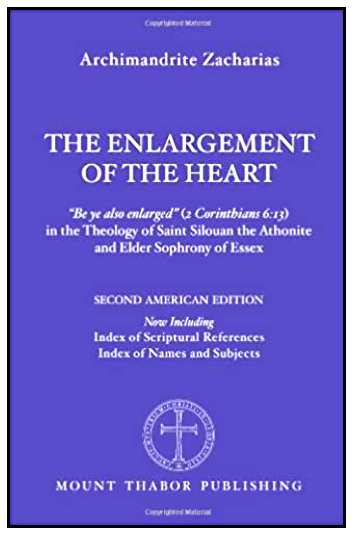 Get The Enlargement of the Heart: Be Ye Also Enlarged (based on 2 Corinthians 6:13) by Saint Silouan, the Athonite and Elder Sophrony of Essex (free EPUB – see note 1, or in print at Amazon). In the autumn of 1892 a young Russian peasant named Simeon from the province of Tambov was drawn to Mt Athos, the ancient repository of Orthodox spirituality. He had done his military service and now came to the Russian Monastery of St Panteleimon to embark on long years of spiritual combat lasting until his death in 1938. Although he was unlearned and ignorant in the ordinary sense, tireless inner strivings gave him authentic personal experience of Christianity identical with that of many of the early ascetic Desert Fathers.
Get The Enlargement of the Heart: Be Ye Also Enlarged (based on 2 Corinthians 6:13) by Saint Silouan, the Athonite and Elder Sophrony of Essex (free EPUB – see note 1, or in print at Amazon). In the autumn of 1892 a young Russian peasant named Simeon from the province of Tambov was drawn to Mt Athos, the ancient repository of Orthodox spirituality. He had done his military service and now came to the Russian Monastery of St Panteleimon to embark on long years of spiritual combat lasting until his death in 1938. Although he was unlearned and ignorant in the ordinary sense, tireless inner strivings gave him authentic personal experience of Christianity identical with that of many of the early ascetic Desert Fathers.
 Get The Orthodox Church: An Introduction to its History, Doctrine, and Spiritual Culture (Amazon, or PDF of 471 pages) by John Anthony McGuckin, one of the leading Orthodox historians and theologians in the English-speaking world. This important work offers the most comprehensive and up-to-date account of the Orthodox Church available, providing a detailed account of its historical development, as well as exploring Orthodox theology and culture.
Get The Orthodox Church: An Introduction to its History, Doctrine, and Spiritual Culture (Amazon, or PDF of 471 pages) by John Anthony McGuckin, one of the leading Orthodox historians and theologians in the English-speaking world. This important work offers the most comprehensive and up-to-date account of the Orthodox Church available, providing a detailed account of its historical development, as well as exploring Orthodox theology and culture.
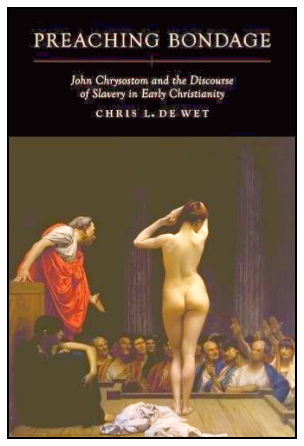 Get Preaching Bondage: John Chrysostom and the Discourse of Slavery in Early Christianity (free EPUB – see note 1) by Chris L. de Wet. This book introduces and investigates the novel concept of "doulology" (from doulos in Greek – a bondservant), the discourse of slavery in the homilies of St. John Chrysostom, the late fourth-century monk-priest who became Ecumenical Patriarch of the Church. Chris L. de Wet examines the dynamics of enslavement in Chrysostom’s theology, virtue ethics, and biblical interpretation and shows that human bondage as a metaphorical and theological construct had a profound effect on the lives of institutional slaves. See also several other writings by Chrysostom listed above.
Get Preaching Bondage: John Chrysostom and the Discourse of Slavery in Early Christianity (free EPUB – see note 1) by Chris L. de Wet. This book introduces and investigates the novel concept of "doulology" (from doulos in Greek – a bondservant), the discourse of slavery in the homilies of St. John Chrysostom, the late fourth-century monk-priest who became Ecumenical Patriarch of the Church. Chris L. de Wet examines the dynamics of enslavement in Chrysostom’s theology, virtue ethics, and biblical interpretation and shows that human bondage as a metaphorical and theological construct had a profound effect on the lives of institutional slaves. See also several other writings by Chrysostom listed above.
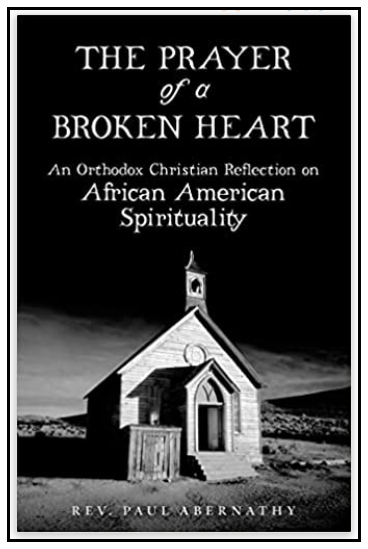 Get The Prayer of a Broken Heart: An Orthodox Christian Reflection on African American Spirituality (Amazon, in print or Kindle format) by Fr. Paul Abernathy, pastor of St. Moses the Black Orthodox Church in Pittsburgh. It is a very profound and moving description of African American experience from the time of slavery to the present, detailing the slave trade and the intergenerational trauma inflicted by slavery. The scars of slavery, segregation, and ethnic discrimination remain in the American psyche of people both of African and European descent to this day, sadly even in our churches. Nor is reverse discrimination the solution: "All people are created equal and are endowed by their Creator with the right to life and liberty." Only if we believe in the all-loving Creator, do we have a firm foundation for asserting the equality of all mankind.
Get The Prayer of a Broken Heart: An Orthodox Christian Reflection on African American Spirituality (Amazon, in print or Kindle format) by Fr. Paul Abernathy, pastor of St. Moses the Black Orthodox Church in Pittsburgh. It is a very profound and moving description of African American experience from the time of slavery to the present, detailing the slave trade and the intergenerational trauma inflicted by slavery. The scars of slavery, segregation, and ethnic discrimination remain in the American psyche of people both of African and European descent to this day, sadly even in our churches. Nor is reverse discrimination the solution: "All people are created equal and are endowed by their Creator with the right to life and liberty." Only if we believe in the all-loving Creator, do we have a firm foundation for asserting the equality of all mankind.
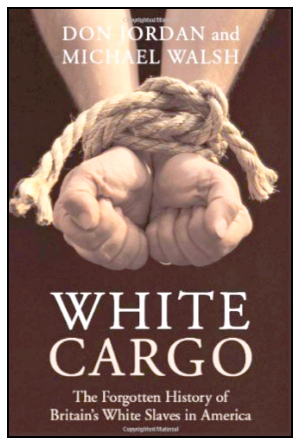 And the eBook White Cargo: The Forgotten History of Britain's White Slaves in America (free EPUB – see note 1), also from Amazon, tells of how the poor among British citizens, even children, were sent on slave ships to the American colonies, many dying enroute or as a result of beatings and hardship endured during their servitude.
And the eBook White Cargo: The Forgotten History of Britain's White Slaves in America (free EPUB – see note 1), also from Amazon, tells of how the poor among British citizens, even children, were sent on slave ships to the American colonies, many dying enroute or as a result of beatings and hardship endured during their servitude.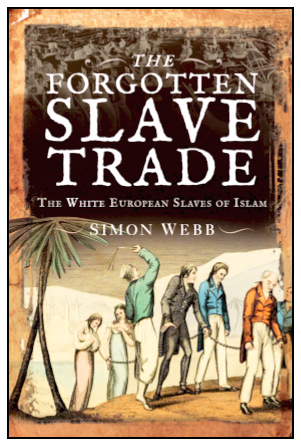 This eBook, The Forgotten Slave Trade: The White European Slaves of Islam (free EPUB – see note 1), also from Amazon, details how Muslims enslaved over a million Christian Europeans as well as capturing black Africans and selling them to the slave ship captains to be taken to the Americas. In the introduction we read – "It invites uproar to describe as slaves any of these hapless whites who were abused, beaten and sometimes killed by their masters or their masters' overseers. To do so is thought to detract from the enormity of black suffering after racial slavery developed. However, black slavery emerged out of white servitude and was based upon it" (my emphasis).
This eBook, The Forgotten Slave Trade: The White European Slaves of Islam (free EPUB – see note 1), also from Amazon, details how Muslims enslaved over a million Christian Europeans as well as capturing black Africans and selling them to the slave ship captains to be taken to the Americas. In the introduction we read – "It invites uproar to describe as slaves any of these hapless whites who were abused, beaten and sometimes killed by their masters or their masters' overseers. To do so is thought to detract from the enormity of black suffering after racial slavery developed. However, black slavery emerged out of white servitude and was based upon it" (my emphasis).
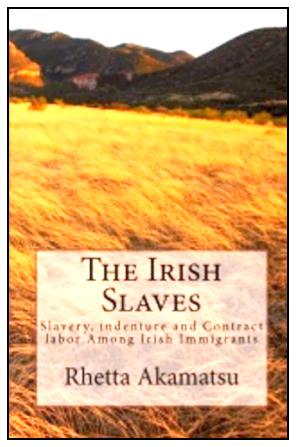 Another book, The Irish Slaves: Slavery, indenture and Contract labor Among Irish Immigrants (Amazon), also as an epub (see note 1), describes how Irish men, women, and children were grabbed by the English, put on slave ships, and sold in the colonies – in the Carribean colonies they were kept as slaves but eventually became British citizens. In the American colonies they were considered indentured servants but sometimes the Irish women were given to African male slaves to bear children for their masters and then both the women and their children became perpetual slaves.
Another book, The Irish Slaves: Slavery, indenture and Contract labor Among Irish Immigrants (Amazon), also as an epub (see note 1), describes how Irish men, women, and children were grabbed by the English, put on slave ships, and sold in the colonies – in the Carribean colonies they were kept as slaves but eventually became British citizens. In the American colonies they were considered indentured servants but sometimes the Irish women were given to African male slaves to bear children for their masters and then both the women and their children became perpetual slaves.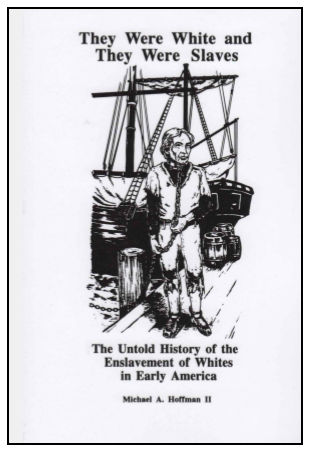 The book They Were White and They Were Slaves: The Untold History of the Enslavement of Whites in Early America (Amazon), also as a free eBook (see note 1), details the de facto slavery of "indentured servants" brought over to the colonies on slave ships. Their fate was often no better and sometimes worse than African slaves because they could not work as hard. Throughout the entire 17th century, there were more white slaves in the American colonies than African slaves, but their descendants usually became free men. Only in the 18th century (starting in 1705) were African slaves and even their mixed-race descendants held in perpetual slavery.
The book They Were White and They Were Slaves: The Untold History of the Enslavement of Whites in Early America (Amazon), also as a free eBook (see note 1), details the de facto slavery of "indentured servants" brought over to the colonies on slave ships. Their fate was often no better and sometimes worse than African slaves because they could not work as hard. Throughout the entire 17th century, there were more white slaves in the American colonies than African slaves, but their descendants usually became free men. Only in the 18th century (starting in 1705) were African slaves and even their mixed-race descendants held in perpetual slavery.
 Get the book Up From Slavery: the Autobiography of Booker T. Washington (free EPUB –see note 1). This is the story of Booker T. Washington, sharing his personal experience of having to work to rise up from the position of a slave child during the Civil War, to the difficulties and obstacles he overcame to get an education at the new Hampton Institute, to his work establishing vocational schools – most notably the Tuskegee Institute in Alabama – to help black people and other disadvantaged minorities learn useful, marketable skills and work to pull themselves, as a race, up by the bootstraps.
Get the book Up From Slavery: the Autobiography of Booker T. Washington (free EPUB –see note 1). This is the story of Booker T. Washington, sharing his personal experience of having to work to rise up from the position of a slave child during the Civil War, to the difficulties and obstacles he overcame to get an education at the new Hampton Institute, to his work establishing vocational schools – most notably the Tuskegee Institute in Alabama – to help black people and other disadvantaged minorities learn useful, marketable skills and work to pull themselves, as a race, up by the bootstraps.
 Get the book The Ministry Driven Church, a Biblical Theology of Ministry as a 221-page Amazon paperback in 5.5" x 8.5" format or a Kindle eBook. It explores the word diakonia in Greek – "ministry" or "service" in English – in all its diverse meanings and contexts. This book ties together the manifold aspects of a living, healthy and growing church through each of us becoming a willing bondservant ("doulos") of Christ,
Get the book The Ministry Driven Church, a Biblical Theology of Ministry as a 221-page Amazon paperback in 5.5" x 8.5" format or a Kindle eBook. It explores the word diakonia in Greek – "ministry" or "service" in English – in all its diverse meanings and contexts. This book ties together the manifold aspects of a living, healthy and growing church through each of us becoming a willing bondservant ("doulos") of Christ,
OR get it as a free 8.5" x 11" PDF, (133 pages),
OR as a free eBook (see note 1),
OR as a free online course by this webmaster,
OR get "Ministry as Moderation and Self-Control" – a PDF of chapter 11 – on how not to be enslaved by one's own passions and desires for more and more.
ALSO read Escaping Debt Slavery and download two free PDFs there on breaking free from debt slavery.
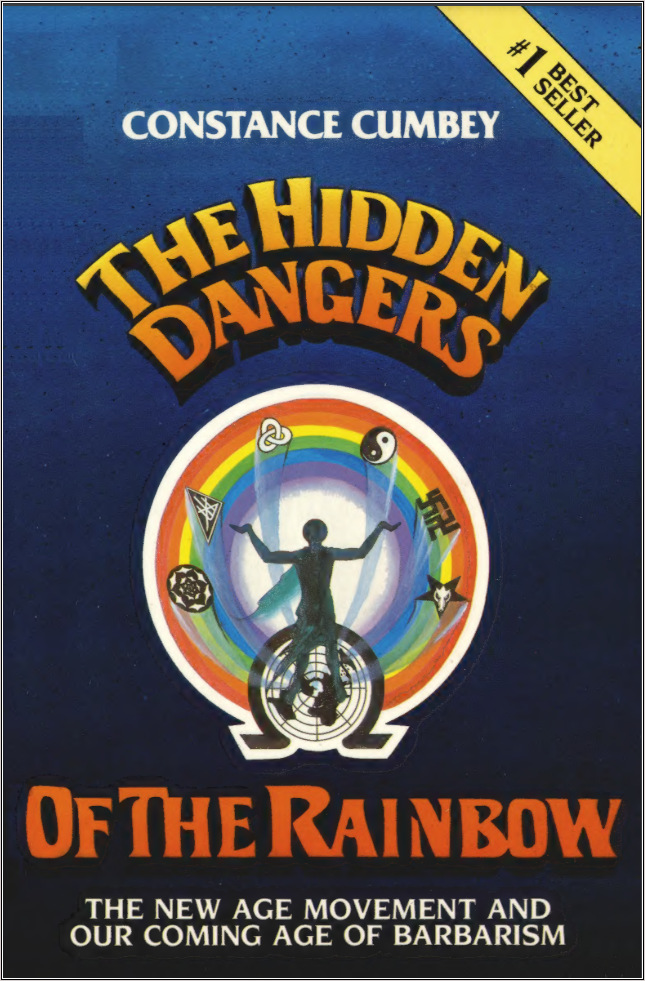 Get the book The Hidden Dangers of the Rainbow (Amazon paperback and Kindle eBook), or as a free PDF, by Constance Cumbey. By "controlling the narrative" the social engineers have turned upside-down the true history about race in the foundational history of the United States. In this book, Cumbey describes how the "Rainbow coalition" is a front for the New Age movement, which developed out of the "Moralistic Therapeutic Deism" pseudo-Christian worldview, turning upside-down true Christianity, and the final result of Protestantism's doctrine of "sola Scriptura" that teaches every believer can interpret the Bible any way he/she chooses, resulting in a Joel Osteen-style "feel-good" and "self-fulfilment" pseudo-Christian religion that blames God when anything goes wrong, and endorses the "you can believe anything you want and behave in any way you want" worldview such as the New Age "spiritual but not religious" and the LGBTQ+ movements. See also The New World Order free PDF on the current collapse of Judeo-Christian morality and what it is leading to.
Get the book The Hidden Dangers of the Rainbow (Amazon paperback and Kindle eBook), or as a free PDF, by Constance Cumbey. By "controlling the narrative" the social engineers have turned upside-down the true history about race in the foundational history of the United States. In this book, Cumbey describes how the "Rainbow coalition" is a front for the New Age movement, which developed out of the "Moralistic Therapeutic Deism" pseudo-Christian worldview, turning upside-down true Christianity, and the final result of Protestantism's doctrine of "sola Scriptura" that teaches every believer can interpret the Bible any way he/she chooses, resulting in a Joel Osteen-style "feel-good" and "self-fulfilment" pseudo-Christian religion that blames God when anything goes wrong, and endorses the "you can believe anything you want and behave in any way you want" worldview such as the New Age "spiritual but not religious" and the LGBTQ+ movements. See also The New World Order free PDF on the current collapse of Judeo-Christian morality and what it is leading to.
 Get this 802-page book From Dawn to Decadence: 500 Years of Western Cultural Life, 1500 to the Present (Amazon) or as an eBook (free EPUB –see note 1) by Jacques Barzun. The intro states – "The triumphs and defeats of five hundred years form an inspiring saga that modifies the current impression of one long tale of oppression by white European males [my emphasis]." In this brief excerpt (PDF, 100 pages), the author describes the book as a "review in sequence the great achievements and the sorry failures of our half millennium ...about art and thought, manners, morals, and religion, and the social setting in which these activities have been and are taking place." This excerpt begins 500 years ago with the "Age of Enlightenment" (which is better named "The Age of Endarkenment" – the exaltation of finite human rationality as the ultimate authority over the Infinite) and the Reformation, and concludes with the 20th century. It might just whet your appetite to acquire and read the entire book!
Get this 802-page book From Dawn to Decadence: 500 Years of Western Cultural Life, 1500 to the Present (Amazon) or as an eBook (free EPUB –see note 1) by Jacques Barzun. The intro states – "The triumphs and defeats of five hundred years form an inspiring saga that modifies the current impression of one long tale of oppression by white European males [my emphasis]." In this brief excerpt (PDF, 100 pages), the author describes the book as a "review in sequence the great achievements and the sorry failures of our half millennium ...about art and thought, manners, morals, and religion, and the social setting in which these activities have been and are taking place." This excerpt begins 500 years ago with the "Age of Enlightenment" (which is better named "The Age of Endarkenment" – the exaltation of finite human rationality as the ultimate authority over the Infinite) and the Reformation, and concludes with the 20th century. It might just whet your appetite to acquire and read the entire book!
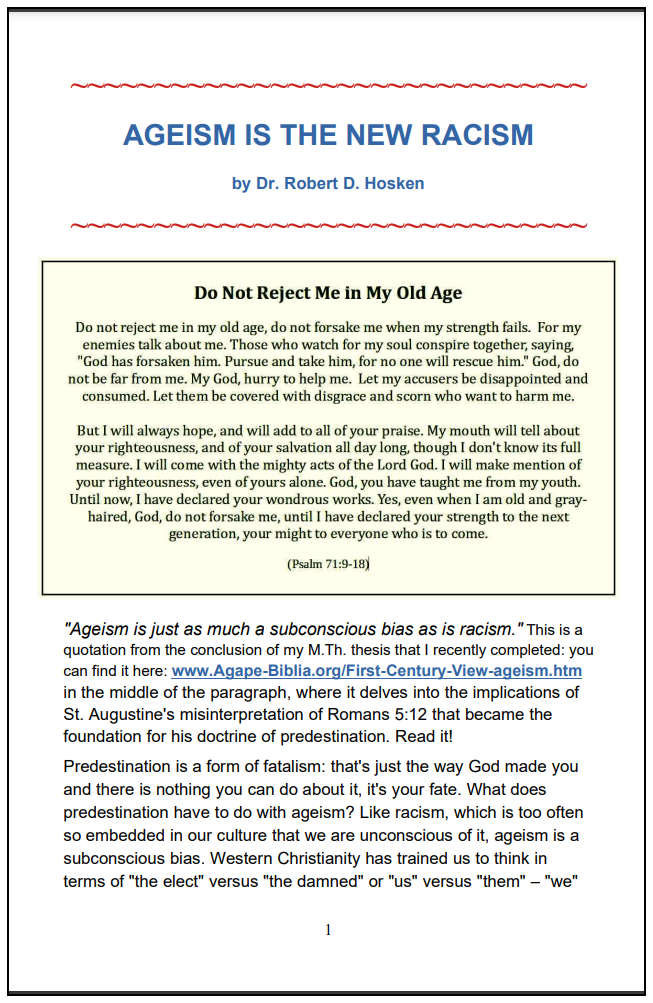 Get "Ageism Is the New Racism" (PDF, a 5.5" x 8.5"-formatted 4-page booklet (1 sheet of 8.5" x 11" paper) – see note 2) also available online at https://arc-news-blog.blogspot.com. Ageism, like racism, is an often-subconscious cognitive bias that is reflected in the way many people relate to elderly people, either by "politely" ignoring them or by assuming that elderly people (especially with a disability such as hearing loss) have "dementia" – Parkinson's or Alzheimer's Disease – and are incapable of interacting, thus treating them as "other" or less than human. This brief article is based on the Conclusion on cultural biases in this webmaster's online M.Th.S. thesis A First-Century View of Yeshua, the Messiah – you can read it online or download and print this thesis by clicking here.
Get "Ageism Is the New Racism" (PDF, a 5.5" x 8.5"-formatted 4-page booklet (1 sheet of 8.5" x 11" paper) – see note 2) also available online at https://arc-news-blog.blogspot.com. Ageism, like racism, is an often-subconscious cognitive bias that is reflected in the way many people relate to elderly people, either by "politely" ignoring them or by assuming that elderly people (especially with a disability such as hearing loss) have "dementia" – Parkinson's or Alzheimer's Disease – and are incapable of interacting, thus treating them as "other" or less than human. This brief article is based on the Conclusion on cultural biases in this webmaster's online M.Th.S. thesis A First-Century View of Yeshua, the Messiah – you can read it online or download and print this thesis by clicking here.
 Get Ending Ageism, or How Not to Shoot Old People (295-page PDF) or its preface (12-page PDF) by Margaret Morganroth Gullette, or get it in paperback or eBook format from Amazon. When the term “ageism” was coined in 1969, many problems of exclusion seemed resolved by government programs like Social Security and Medicare. As people are living longer, today's great demotions of older people cut deeper into their self-worth and human relations, beyond the reach of law or public policy.
Get Ending Ageism, or How Not to Shoot Old People (295-page PDF) or its preface (12-page PDF) by Margaret Morganroth Gullette, or get it in paperback or eBook format from Amazon. When the term “ageism” was coined in 1969, many problems of exclusion seemed resolved by government programs like Social Security and Medicare. As people are living longer, today's great demotions of older people cut deeper into their self-worth and human relations, beyond the reach of law or public policy.
 Get Ageism Unmasked - Exploring Age Bias and How to End It by Tracey Gendron, Ph.D. (free EPUB – see note 1 or in paperback or eBook format from Amazon). Why do we still tolerate stereotypes and discrimination based on age? This bold account of the history and present-day realities of ageism by Dr. Gendron, a nationally recognized gerontologist and speaker, uncovers ageism's roots, impact, and how each of us can create a new reality of elderhood.
Get Ageism Unmasked - Exploring Age Bias and How to End It by Tracey Gendron, Ph.D. (free EPUB – see note 1 or in paperback or eBook format from Amazon). Why do we still tolerate stereotypes and discrimination based on age? This bold account of the history and present-day realities of ageism by Dr. Gendron, a nationally recognized gerontologist and speaker, uncovers ageism's roots, impact, and how each of us can create a new reality of elderhood.
 Get Successful Aging: A Neuroscientist Explores the Power and Potential of Our Lives by Daniel J. Levitin, Ph.D. (free EPUB – see note 1 or in paperback or eBook format fromAmazon). Author of the iconic bestsellers This Is Your Brain on Music and The Organized Mind, Daniel Levitin turns his keen insights to what happens in our brains as we age; why we should think about health span, not life span; and, based on a rigorous analysis of neuroscientific evidence, what you can do to make the most of your seventies, eighties, and nineties today, no matter how old you are.
Get Successful Aging: A Neuroscientist Explores the Power and Potential of Our Lives by Daniel J. Levitin, Ph.D. (free EPUB – see note 1 or in paperback or eBook format fromAmazon). Author of the iconic bestsellers This Is Your Brain on Music and The Organized Mind, Daniel Levitin turns his keen insights to what happens in our brains as we age; why we should think about health span, not life span; and, based on a rigorous analysis of neuroscientific evidence, what you can do to make the most of your seventies, eighties, and nineties today, no matter how old you are. Get The Organized Mind: Thinking Straight in the Age of Information Overload by Daniel J. Levitin, Ph.D. (free EPUB – see note 1 or Amazon). Levitin runs the "Laboratory for Musical Perception, Cognition and Expertise" at McGill University, where he holds the Bell Chair in the Psychology of Electronic Communication. Before becoming a neuroscientist, he worked as a session musician, sound engineer and record producer. A New York Times bestselling author and neuroscientist, he shifts his keen insights from your brain on music to your brain in a sea of details. The information age is drowning us with an unprecedented deluge of data. At the same time, we’re expected to make more – and faster – decisions about our lives than ever before. This book is an excellent resource for elderly people.
Get The Organized Mind: Thinking Straight in the Age of Information Overload by Daniel J. Levitin, Ph.D. (free EPUB – see note 1 or Amazon). Levitin runs the "Laboratory for Musical Perception, Cognition and Expertise" at McGill University, where he holds the Bell Chair in the Psychology of Electronic Communication. Before becoming a neuroscientist, he worked as a session musician, sound engineer and record producer. A New York Times bestselling author and neuroscientist, he shifts his keen insights from your brain on music to your brain in a sea of details. The information age is drowning us with an unprecedented deluge of data. At the same time, we’re expected to make more – and faster – decisions about our lives than ever before. This book is an excellent resource for elderly people.
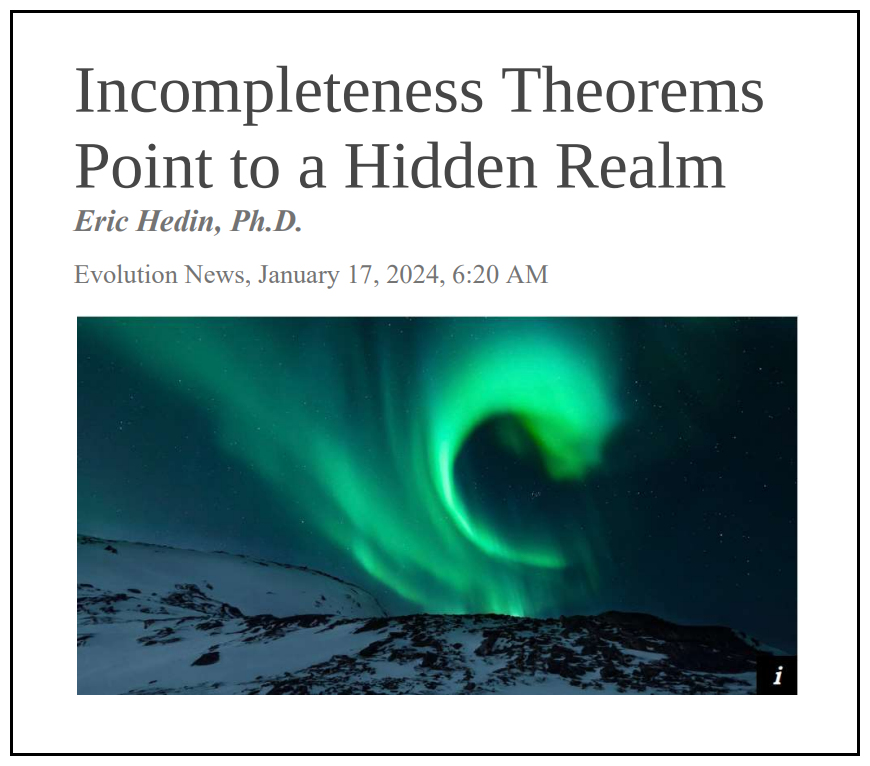 Get "Incompleteness Theorems Point to a Hidden Realm" (PDF), as a 5.5" x 8.5"-formatted 8-page booklet (see note 2), or get it as a 8.5" x 11" PDF, 4 pages. The actual nature of the reality in which we live is that a “hidden realm" must exist behind the common-sense realm of "local realism." Both science and mathematics depend on axiomatic principles which are outside of these disciplines. Particle physics has led us to understand that everything in the material universe is incomplete and indeterminate – there are no fixed truths, no firm reality in the material realm. So in order for science and mathematics to be true, they must presuppose this “hidden realm" that we must accept as axiomatic, otherwise the material world makes no sense in itself, This brings to mind the phrases: "Now faith is the substance of things hoped for, the evidence of things not seen.... By faith we understand that the worlds were framed by the word of God" (Hebrews 11:1 and 3).
Get "Incompleteness Theorems Point to a Hidden Realm" (PDF), as a 5.5" x 8.5"-formatted 8-page booklet (see note 2), or get it as a 8.5" x 11" PDF, 4 pages. The actual nature of the reality in which we live is that a “hidden realm" must exist behind the common-sense realm of "local realism." Both science and mathematics depend on axiomatic principles which are outside of these disciplines. Particle physics has led us to understand that everything in the material universe is incomplete and indeterminate – there are no fixed truths, no firm reality in the material realm. So in order for science and mathematics to be true, they must presuppose this “hidden realm" that we must accept as axiomatic, otherwise the material world makes no sense in itself, This brings to mind the phrases: "Now faith is the substance of things hoped for, the evidence of things not seen.... By faith we understand that the worlds were framed by the word of God" (Hebrews 11:1 and 3).
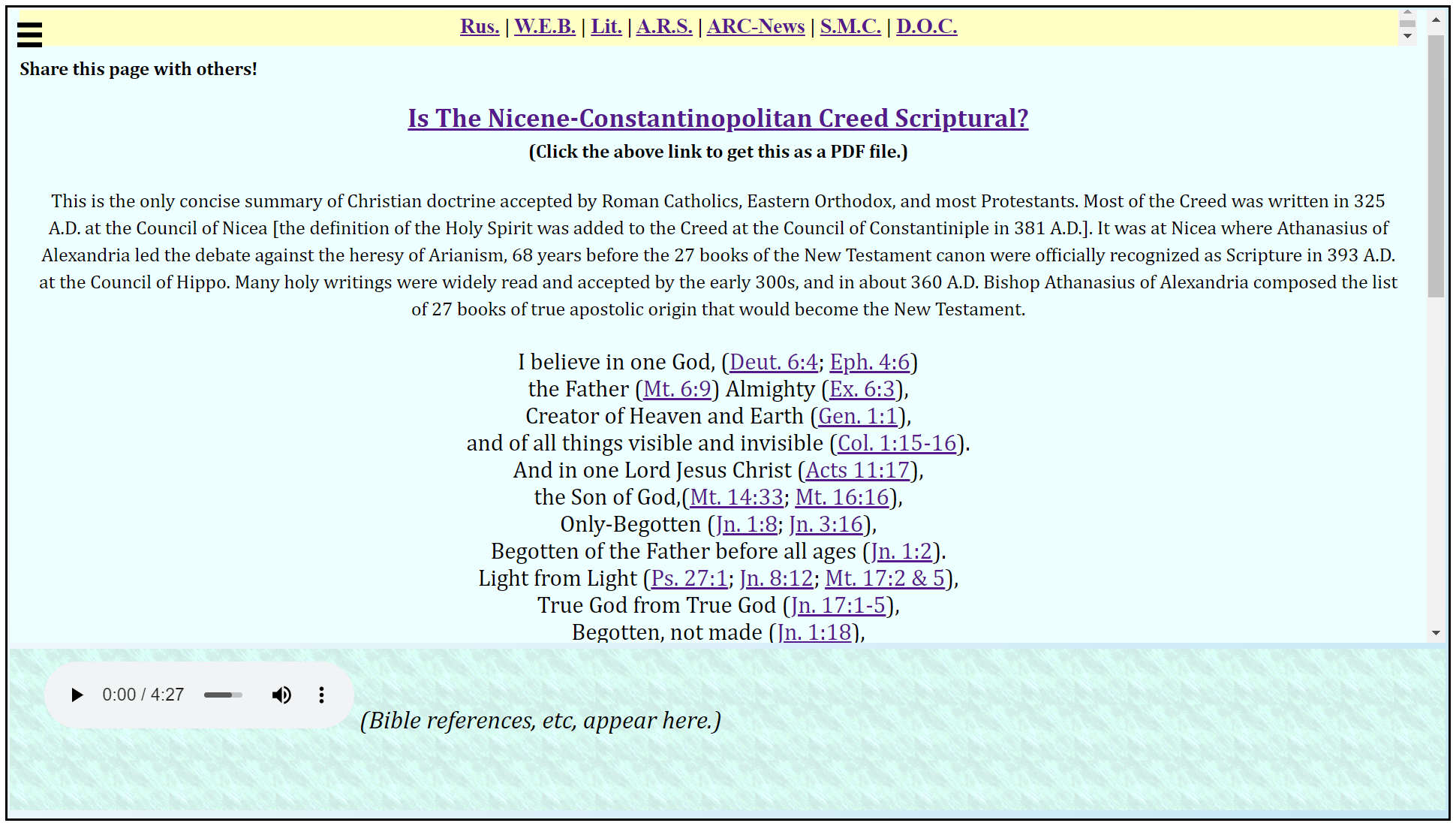 Read "Is The Nicene-Constantinopolitan Creed Scriptural?" online, or get it as a "PDF, a 5.5" x 8.5"-formatted 4-page (1 sheet) booklet," or as a 8.5" x 11" PDF, 1 sheet, 2-sided. It links to the Scripture references for each word or phrase in the Creed which affirm that this concise summary of Christian doctrine, accepted by Roman Catholics, Eastern Orthodox, and most Protestants, is indeed Scriptural!
Read "Is The Nicene-Constantinopolitan Creed Scriptural?" online, or get it as a "PDF, a 5.5" x 8.5"-formatted 4-page (1 sheet) booklet," or as a 8.5" x 11" PDF, 1 sheet, 2-sided. It links to the Scripture references for each word or phrase in the Creed which affirm that this concise summary of Christian doctrine, accepted by Roman Catholics, Eastern Orthodox, and most Protestants, is indeed Scriptural!
 Get Know the Faith: A Handbook for Orthodox Christians and Inquirers (free EPUB – see note 1) by Fr. Michael Shanbour. Over the centuries since the Great Schism between the Eastern and Western Churches, the two groups have diverged to the point that they often no longer understand each other's vocabulary, let alone the fundamental concepts on which each faith is built. Know the Faith is an attempt to present Orthodox Christianity in a way Western Christians can understand, grounding each point in Scripture and patristic theology, with comparisons to what Catholics and Protestants believe. Whether you are an Orthodox Christian seeking to explain your faith to others or an inquirer into this ancient faith, Know the Faith will help you understand and communicate the Orthodox faith as never before.
Get Know the Faith: A Handbook for Orthodox Christians and Inquirers (free EPUB – see note 1) by Fr. Michael Shanbour. Over the centuries since the Great Schism between the Eastern and Western Churches, the two groups have diverged to the point that they often no longer understand each other's vocabulary, let alone the fundamental concepts on which each faith is built. Know the Faith is an attempt to present Orthodox Christianity in a way Western Christians can understand, grounding each point in Scripture and patristic theology, with comparisons to what Catholics and Protestants believe. Whether you are an Orthodox Christian seeking to explain your faith to others or an inquirer into this ancient faith, Know the Faith will help you understand and communicate the Orthodox faith as never before.
www.acrod.org/directories/cathedral/live/cathedral-video-archives/, or tune in at 9 a.m. Eastern time to watch it "live"!
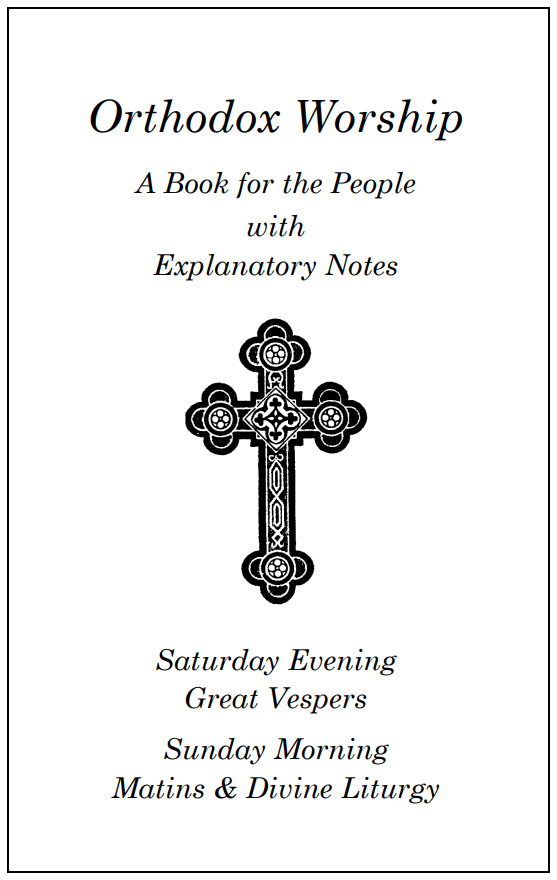 Get the three main Orthodox worship services: Orthodox Worship: Vespers, Matins, and Divine Liturgy of St. John Chrysostom (with notes) (5.5" x 8.5" PDF: 25 sheets in booklet format – see note 2) + necessary cover. The insert contains page 99 and post-communion prayers: fold the insert in half and tape it along the fold to the inside back cover before stapling the cover together with the pages. If desired, you can scan and paste the troparion to your parish's patron saint on the inside front cover and put your church's info on the inside back cover like this, for Venerable Moses the Black. We have added some notes such as when to stand and sit, which prayers are often omitted [in brackets] and which the priest says quietly while others are chanting or singing.
Get the three main Orthodox worship services: Orthodox Worship: Vespers, Matins, and Divine Liturgy of St. John Chrysostom (with notes) (5.5" x 8.5" PDF: 25 sheets in booklet format – see note 2) + necessary cover. The insert contains page 99 and post-communion prayers: fold the insert in half and tape it along the fold to the inside back cover before stapling the cover together with the pages. If desired, you can scan and paste the troparion to your parish's patron saint on the inside front cover and put your church's info on the inside back cover like this, for Venerable Moses the Black. We have added some notes such as when to stand and sit, which prayers are often omitted [in brackets] and which the priest says quietly while others are chanting or singing.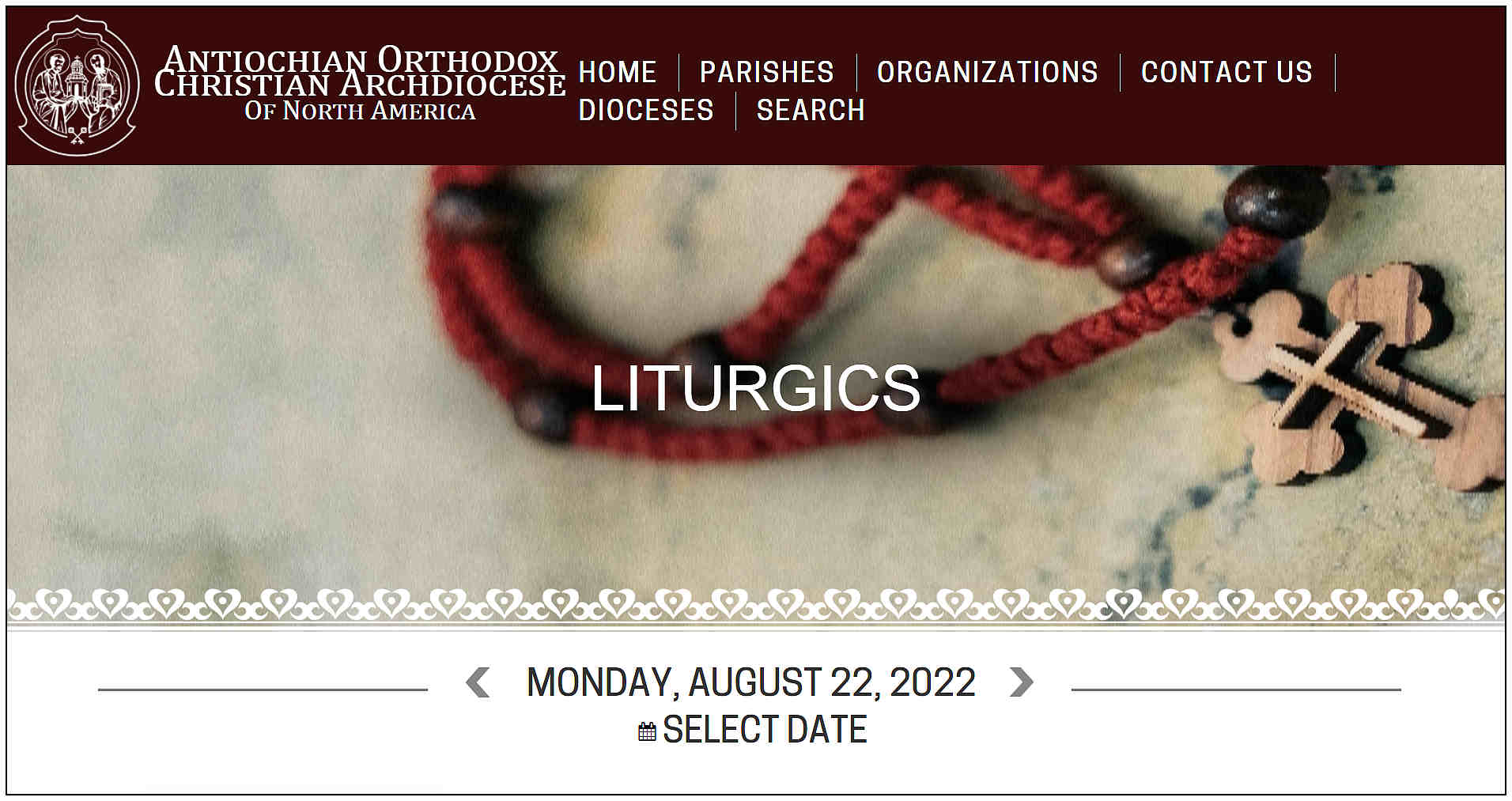 Download the full Liturgy services and/or the variable parts for the Vespers and Orthros/Matins services of each week (online) in PDF and RTF files from the American Antiochian Church jurisdiction. The web page automatically opens to the current date and you can also select any date. Priests, chanters, and laypeople often use these PDFs on smartphones or tablet devices in Antiochian parishes nowadays. Having the variable parts of Vespers and Matins integrated in the text of the services eliminates fumbling with a few different books and papers during these services.
Download the full Liturgy services and/or the variable parts for the Vespers and Orthros/Matins services of each week (online) in PDF and RTF files from the American Antiochian Church jurisdiction. The web page automatically opens to the current date and you can also select any date. Priests, chanters, and laypeople often use these PDFs on smartphones or tablet devices in Antiochian parishes nowadays. Having the variable parts of Vespers and Matins integrated in the text of the services eliminates fumbling with a few different books and papers during these services.
 Get The Divine Liturgy of Saint John Chrysostom (free EPUB – see note 1), and also the Divine Liturgy of St. John Chrysostom and St. Basil the Great (PDF, 174 pages), the main two liturgies that are celebrated in Eastern Orthodox Churches, the former on most occasions, and the latter on special occasions such as Advent, Great Lent, Pascha, and other holy days. This PDF also contains all of the priest's and deacon's prayers prior to the liturgy, all of the special portions for Lent, Holy Week, Pascha, Advent and other feasts, the Matins service, the Octoechos (eight tones) and more. In sum, it is the entire pew service book.
Get The Divine Liturgy of Saint John Chrysostom (free EPUB – see note 1), and also the Divine Liturgy of St. John Chrysostom and St. Basil the Great (PDF, 174 pages), the main two liturgies that are celebrated in Eastern Orthodox Churches, the former on most occasions, and the latter on special occasions such as Advent, Great Lent, Pascha, and other holy days. This PDF also contains all of the priest's and deacon's prayers prior to the liturgy, all of the special portions for Lent, Holy Week, Pascha, Advent and other feasts, the Matins service, the Octoechos (eight tones) and more. In sum, it is the entire pew service book.
 Get the Springtime of the Liturgy (Amazon paperback) by Lucien Deiss, who presents the principal texts of the Christian liturgy from its beginnings in the synagogue to the fifth century. Get a free preview online. Included among the main sources treated are liturgical texts of the Jewish tradition; doxologies, hymns, and blessings of the New Testament; the Didache; the Letter to the Corinthians by Clement of Rome; the Apostolic Tradition of Hippolytus of Rome; the Anaphora of Addai and Mari; the Didascalia of the Apostles; the Euchology of Serapion.
Get the Springtime of the Liturgy (Amazon paperback) by Lucien Deiss, who presents the principal texts of the Christian liturgy from its beginnings in the synagogue to the fifth century. Get a free preview online. Included among the main sources treated are liturgical texts of the Jewish tradition; doxologies, hymns, and blessings of the New Testament; the Didache; the Letter to the Corinthians by Clement of Rome; the Apostolic Tradition of Hippolytus of Rome; the Anaphora of Addai and Mari; the Didascalia of the Apostles; the Euchology of Serapion.
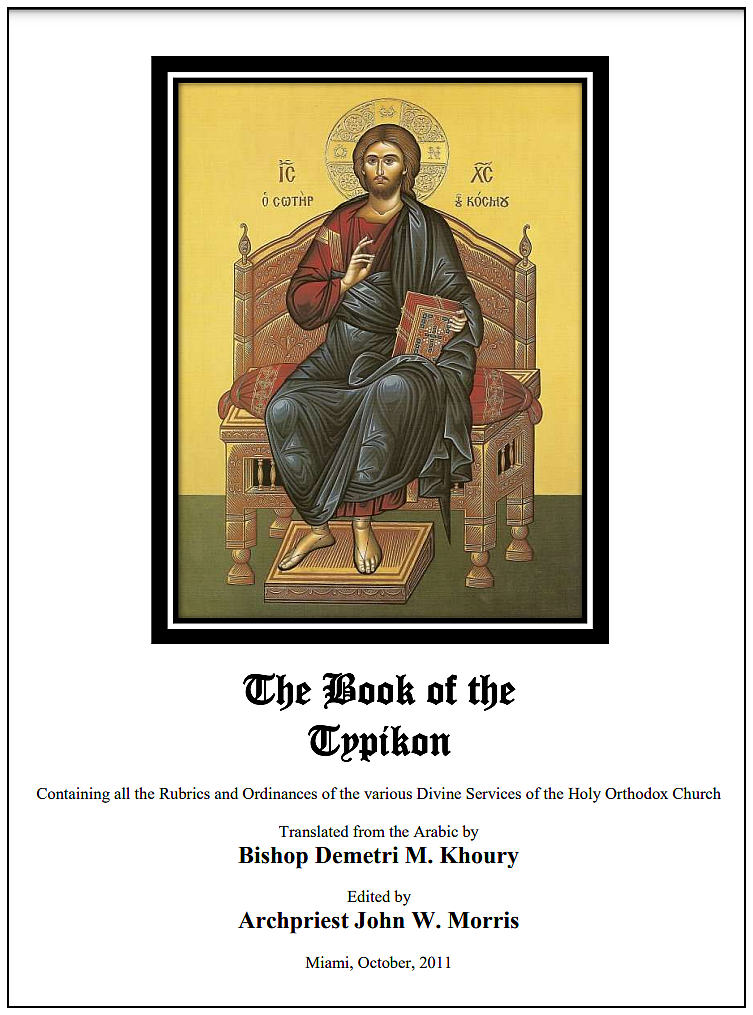 Get the Typikon (PDF, 583 pages) translated from the Arabic by Bishop Demetry M. Khoury and edited by Archpriest John W. Morris, describing the order of the various services throughout the church year. From the Foreword (p. 1): "Typikon is a Greek word that was adopted by the Holy Church of the East as the title of the book that describes the services, rituals (ordo) and the Eucharistic celebrations of the Church. The word, Typikon, comes from the Greek word Typos which means foundation, likeness, or law. The Typikon wasn't all the same through the ages in all places. In the past, there were as many variations as there are churches and monasteries. This is because local rituals and situations influenced the addition or the elimination of some parts of the services."
Get the Typikon (PDF, 583 pages) translated from the Arabic by Bishop Demetry M. Khoury and edited by Archpriest John W. Morris, describing the order of the various services throughout the church year. From the Foreword (p. 1): "Typikon is a Greek word that was adopted by the Holy Church of the East as the title of the book that describes the services, rituals (ordo) and the Eucharistic celebrations of the Church. The word, Typikon, comes from the Greek word Typos which means foundation, likeness, or law. The Typikon wasn't all the same through the ages in all places. In the past, there were as many variations as there are churches and monasteries. This is because local rituals and situations influenced the addition or the elimination of some parts of the services."
~~~~~~~ Morning and Evening Prayers ~~~~~~~
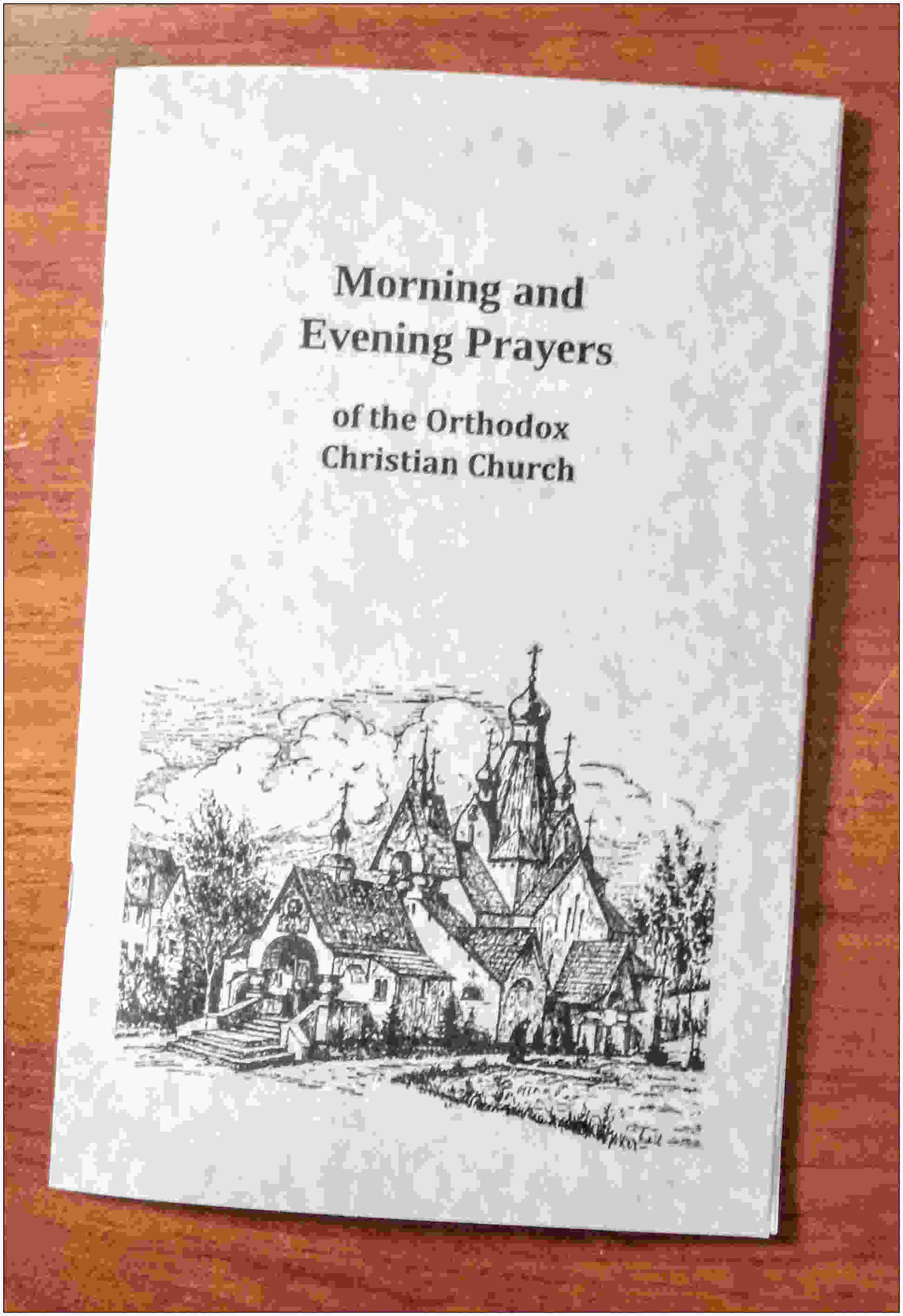 This book is an update of the non-copyrighted prayer book used at St. Ignatius Antiochian Orthodox church in Madison WI, where we became Orthodox. Follow the links in this book to go to each day's morning and evening prayers, and also to readings of the lives of the saints and the Scriptures for each day – old calendar or new calendar. You can simply bookmark this link https://agape-biblia.org/daily-prayers.htm in your web browser. Or get the Android app Morning-and-Evening-Prayers.apk (but first, see note 3 to install an Android app on your phone).
This book is an update of the non-copyrighted prayer book used at St. Ignatius Antiochian Orthodox church in Madison WI, where we became Orthodox. Follow the links in this book to go to each day's morning and evening prayers, and also to readings of the lives of the saints and the Scriptures for each day – old calendar or new calendar. You can simply bookmark this link https://agape-biblia.org/daily-prayers.htm in your web browser. Or get the Android app Morning-and-Evening-Prayers.apk (but first, see note 3 to install an Android app on your phone).
(print 1st page on 5.5" x 8.5" paper in landscape orientation, turn paper over and print 2nd page on other side, then cut in half horizontally to make a booklet). online.
~~~~~~~ Miscellaneous English and Russian Literature ~~~~~~~
(напечатайте книжку на бумагу А5 в книжной ориентации). онлайн.
(напечатайте книгу на бумагу А4 в книжной ориентации). онлайн.
(print the first page on either 8.5" x 11" or A4 paper in portrait orientation, turn the paper over and print the second page on the other side).
(print at 100% – do page 1, turn sheet over and do page 2, then cut in half horizontally, next cut in half vertically.) Please write us if you would like this leaflet customized with your church's name, address and service times.
(напечатайте 1-ую страницу на бумагу А4 в книжной ориентации, поверните бумагу и напечатайте ту же самую 1-ую страницу на другую сторону). онлайн.
(print at 100% – do page 1, turn sheet over and do page 2, then cut in half horizontally to make a booklet.) online. As this leaflet explains, salvation is more than just a "ticket to heaven" – having your sins forgiven, it is taking up your cross and following Christ daily: salvation is a process that leads to sanctification or deification/theosis, "becoming partakers of the divine nature."
(напечатайте 1-ую страницу на бумагу А4 в книжной ориентации, поверните бумагу и напечатайте 2-ую страницу на другую сторону). онлайн.
(напечатайте книгу на бумагу А5 в книжной ориентации [первые страницы пустые!]). онлайн.
(печатайте 1-ую страницу на бумагу А5 в альбомной ориентации, поверните бумагу и напечатайте 2-ую страницу на другую сторону). онлайн.
(напечатайте книгу на бумагу А4 в книжной ориентации).
(напечатайте книгу на бумагу А4 в книжной ориентации). онлайн.
(напечатайте 1-ую страницу на бумагу А4 в альбомной ориентации, поверните бумагу и напечатайте 2-ую страницу). онлайн.
(печатайте 1-ую страницу на бумагу А4 в книжной ориентации, поверните бумагу и напечатайте 2-ую страницу на другую сторону). онлайн.
it costs real money to maintain our website,
so please support our work!